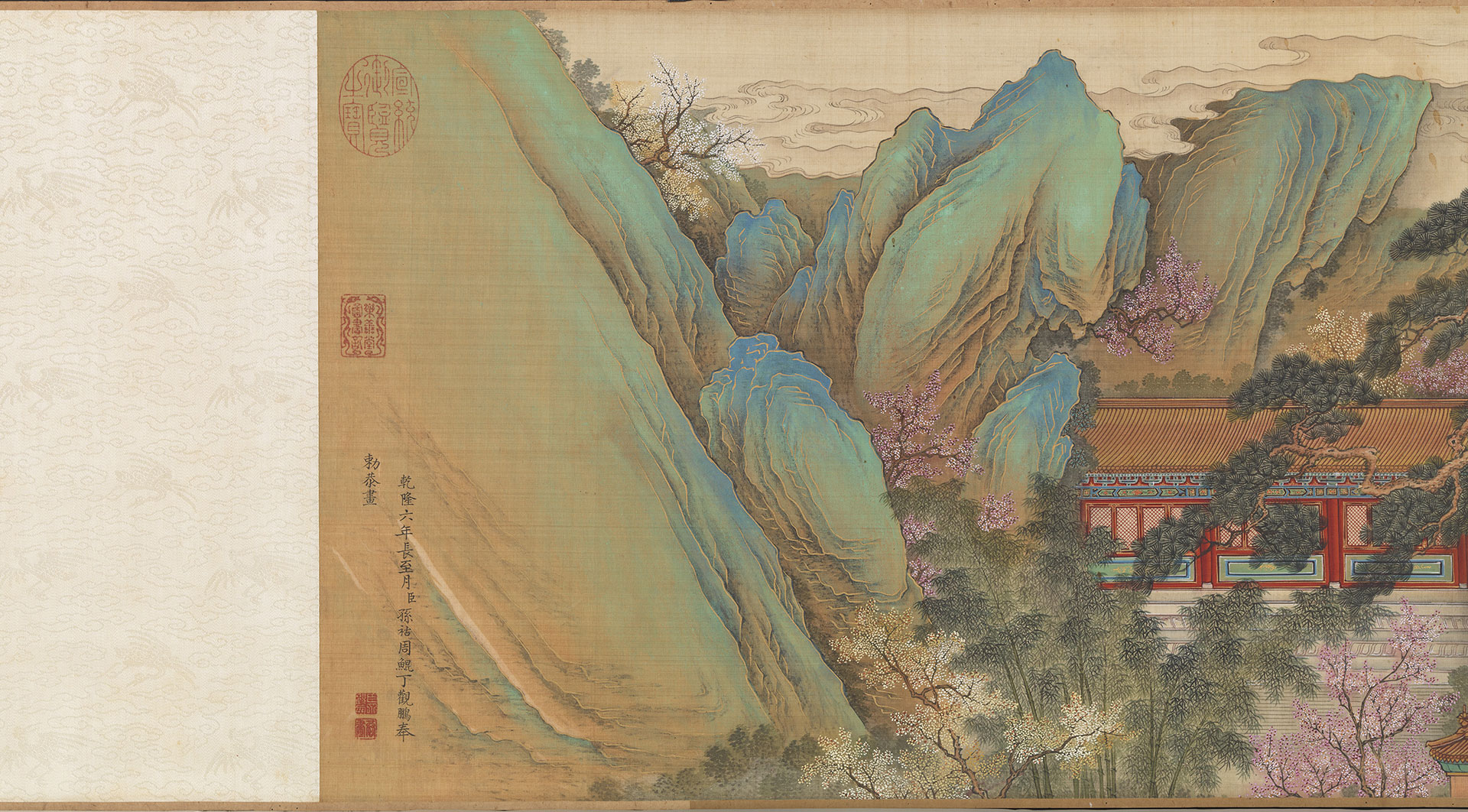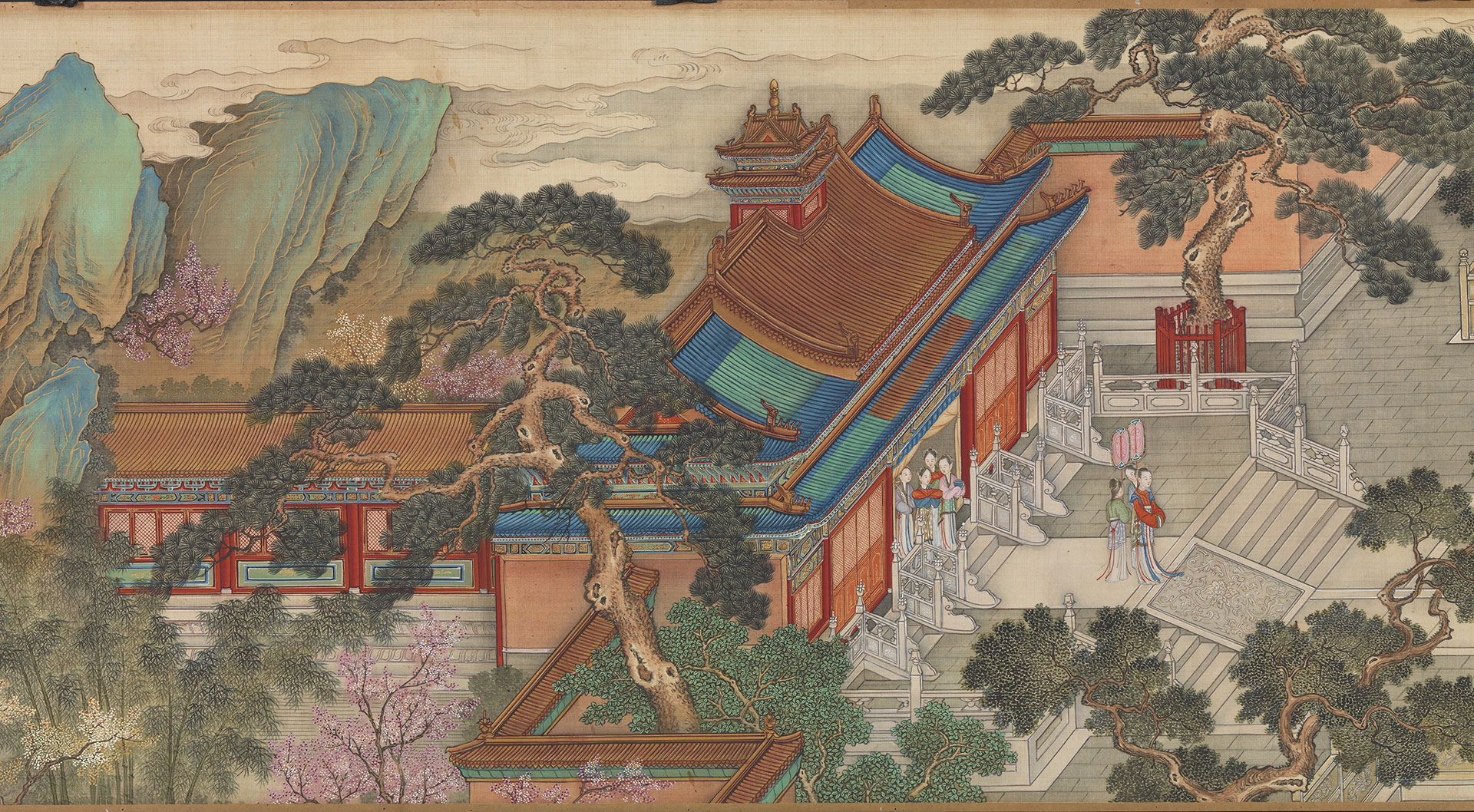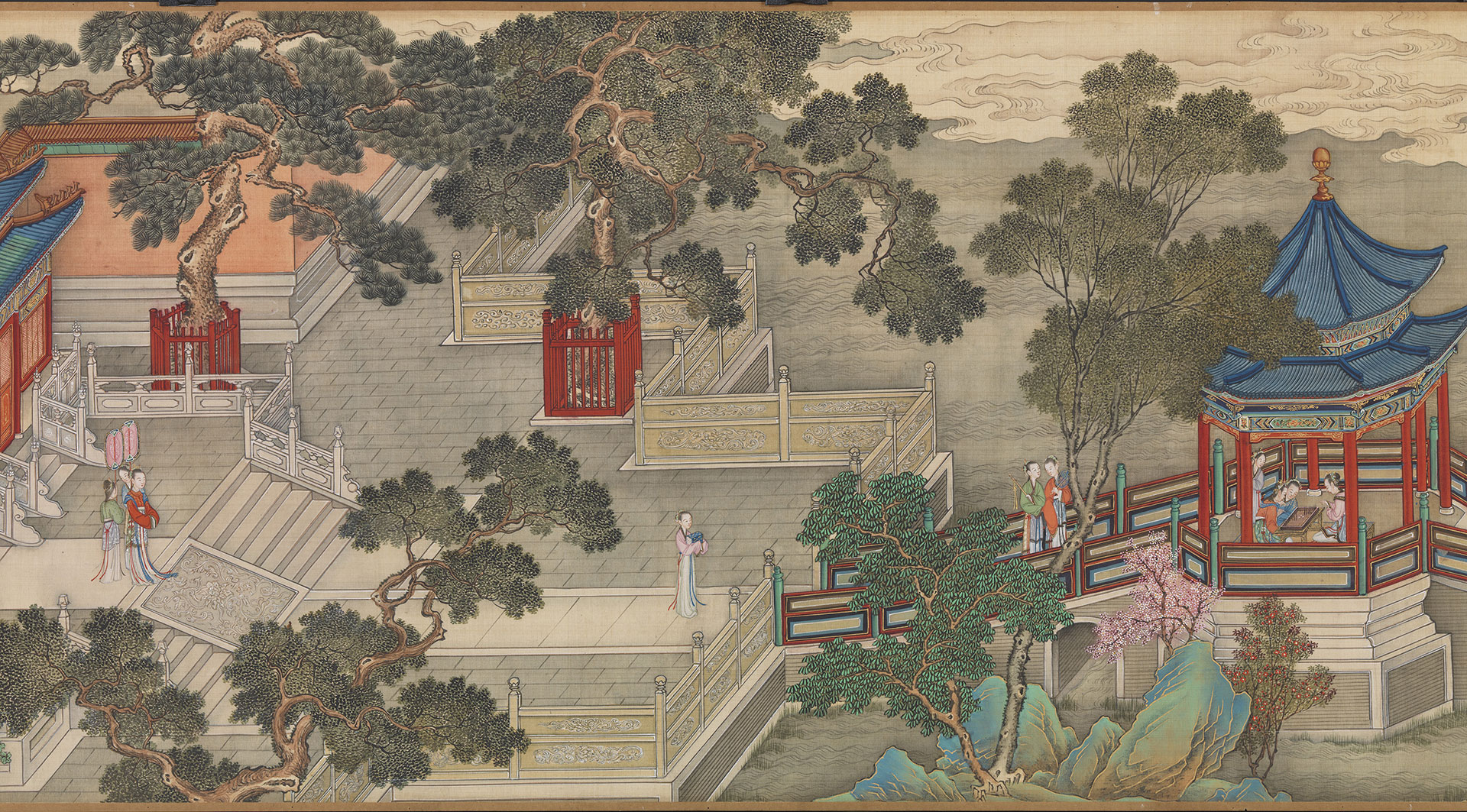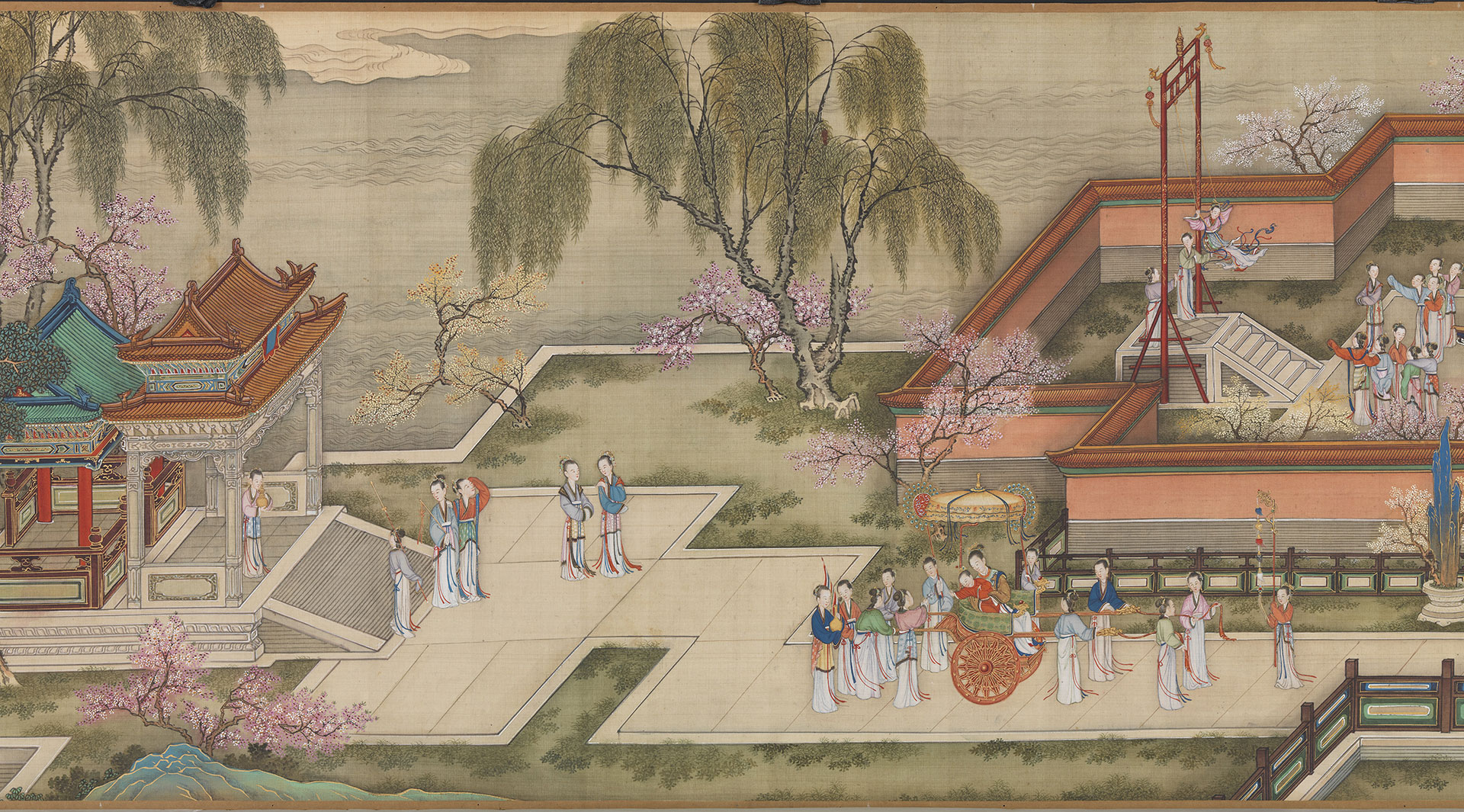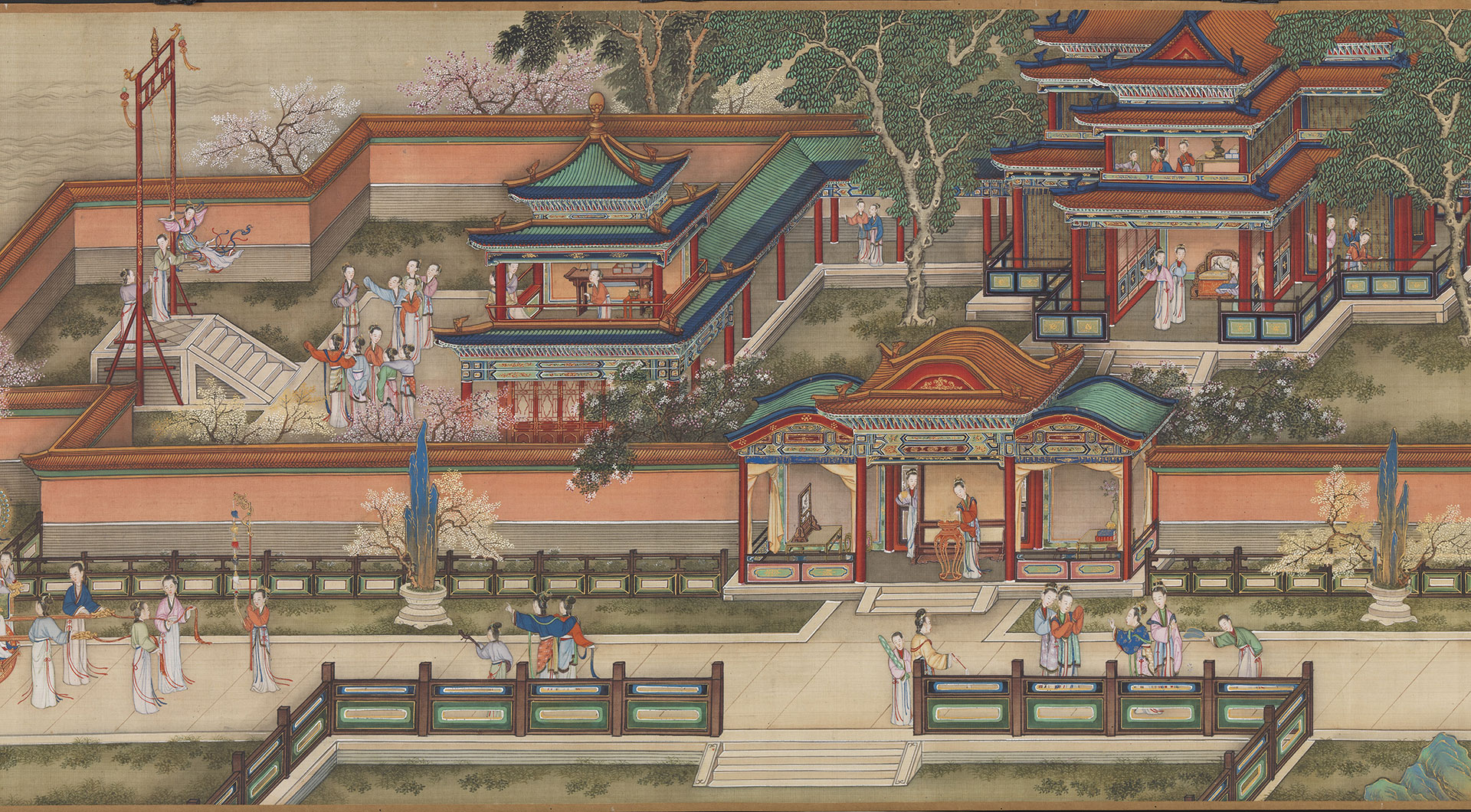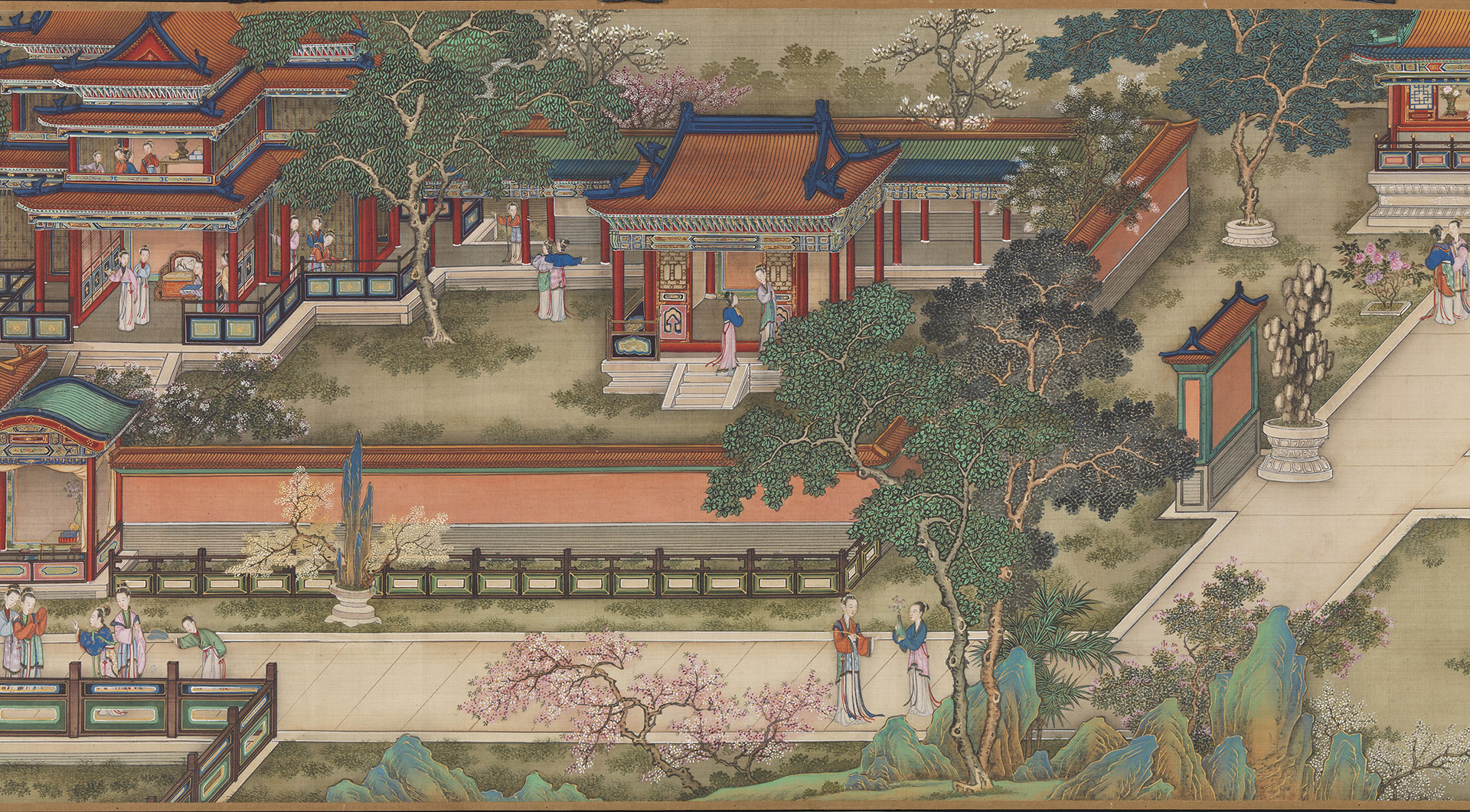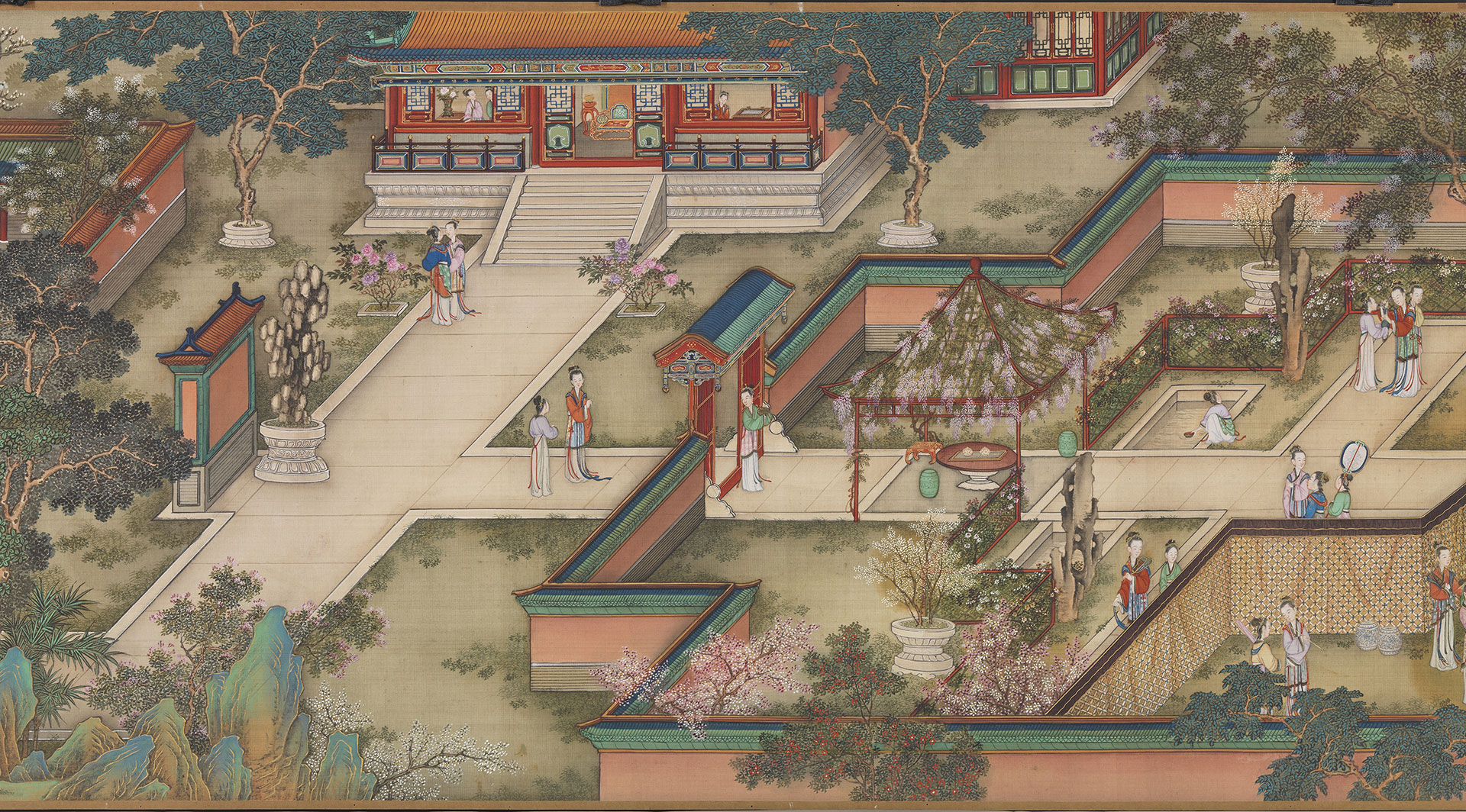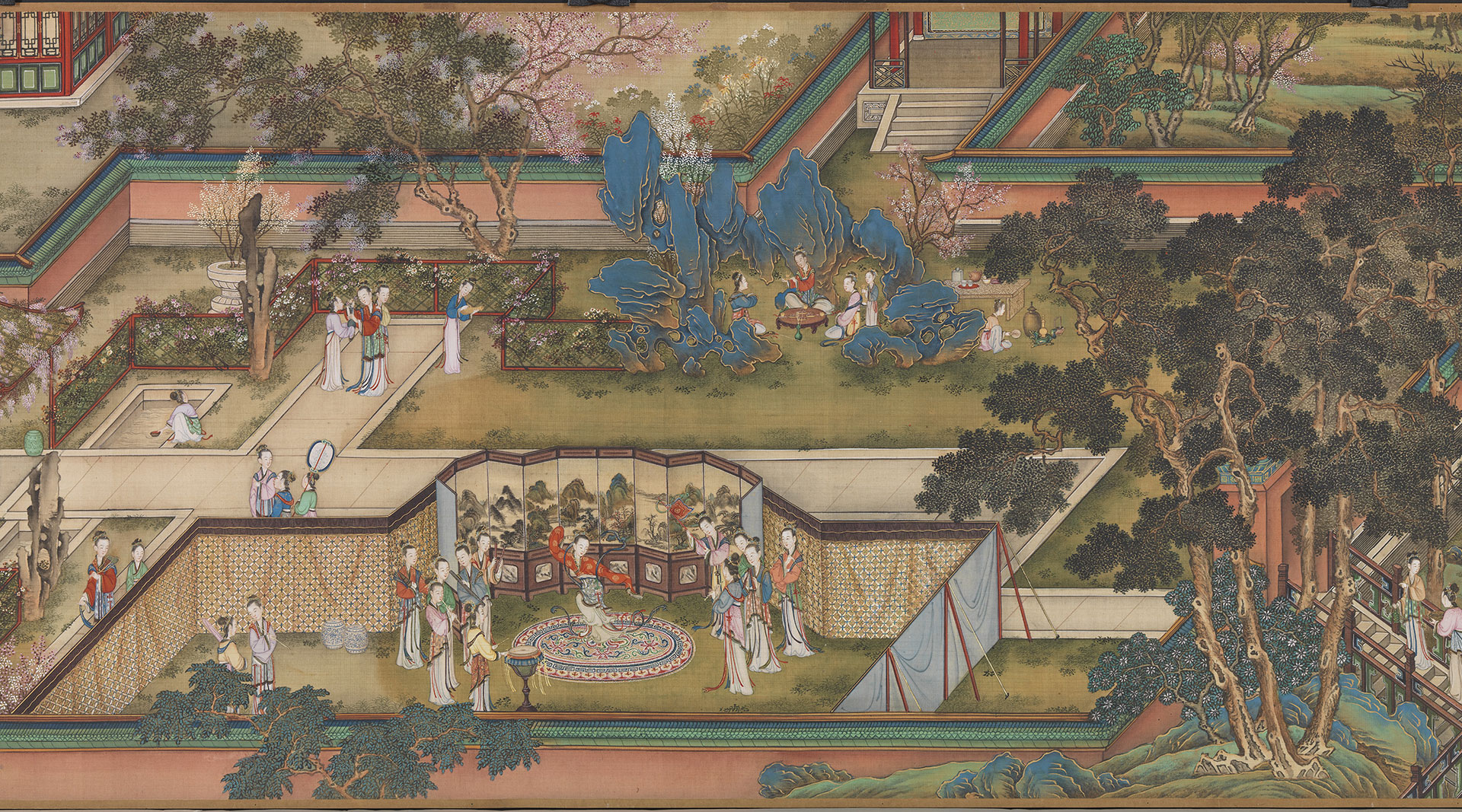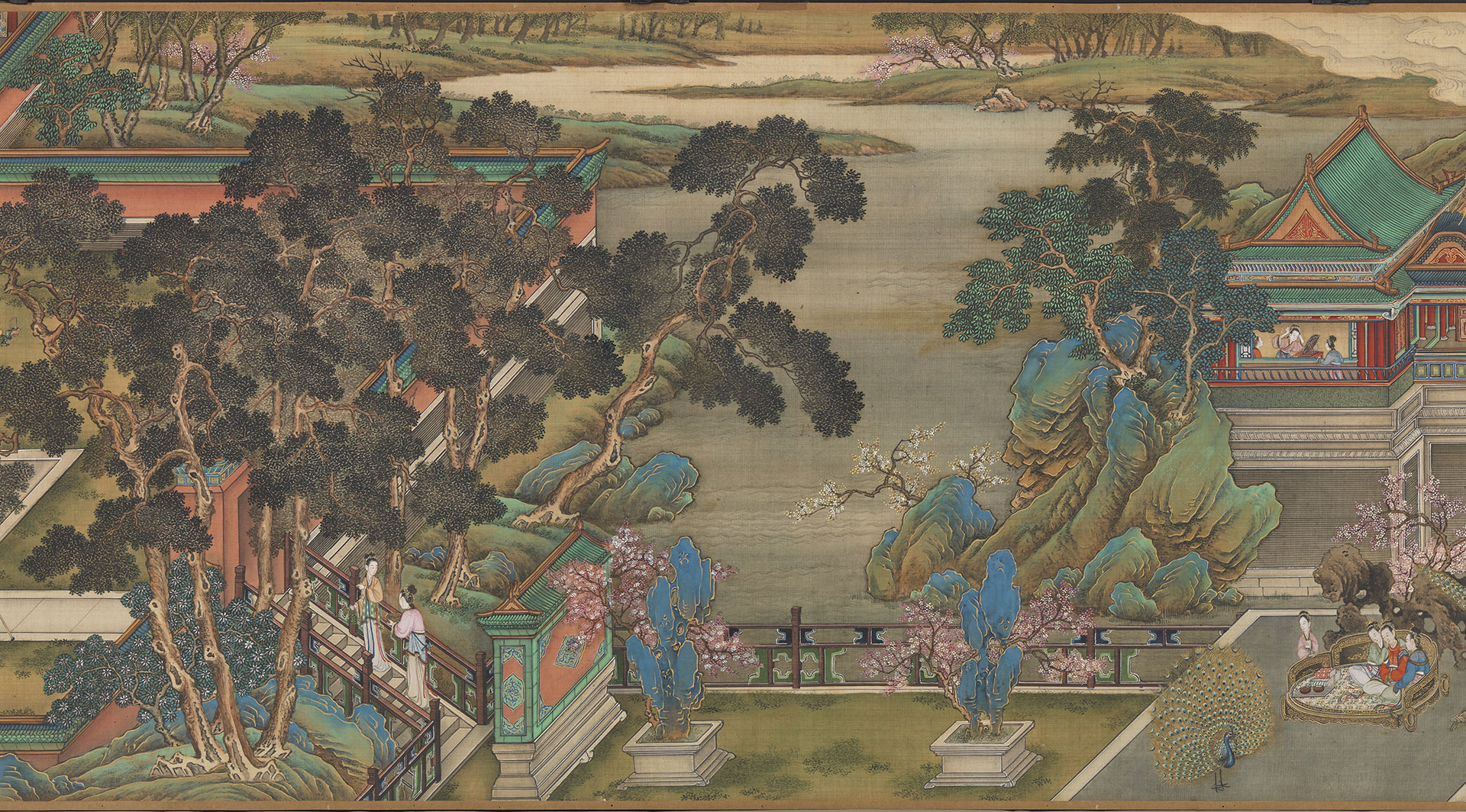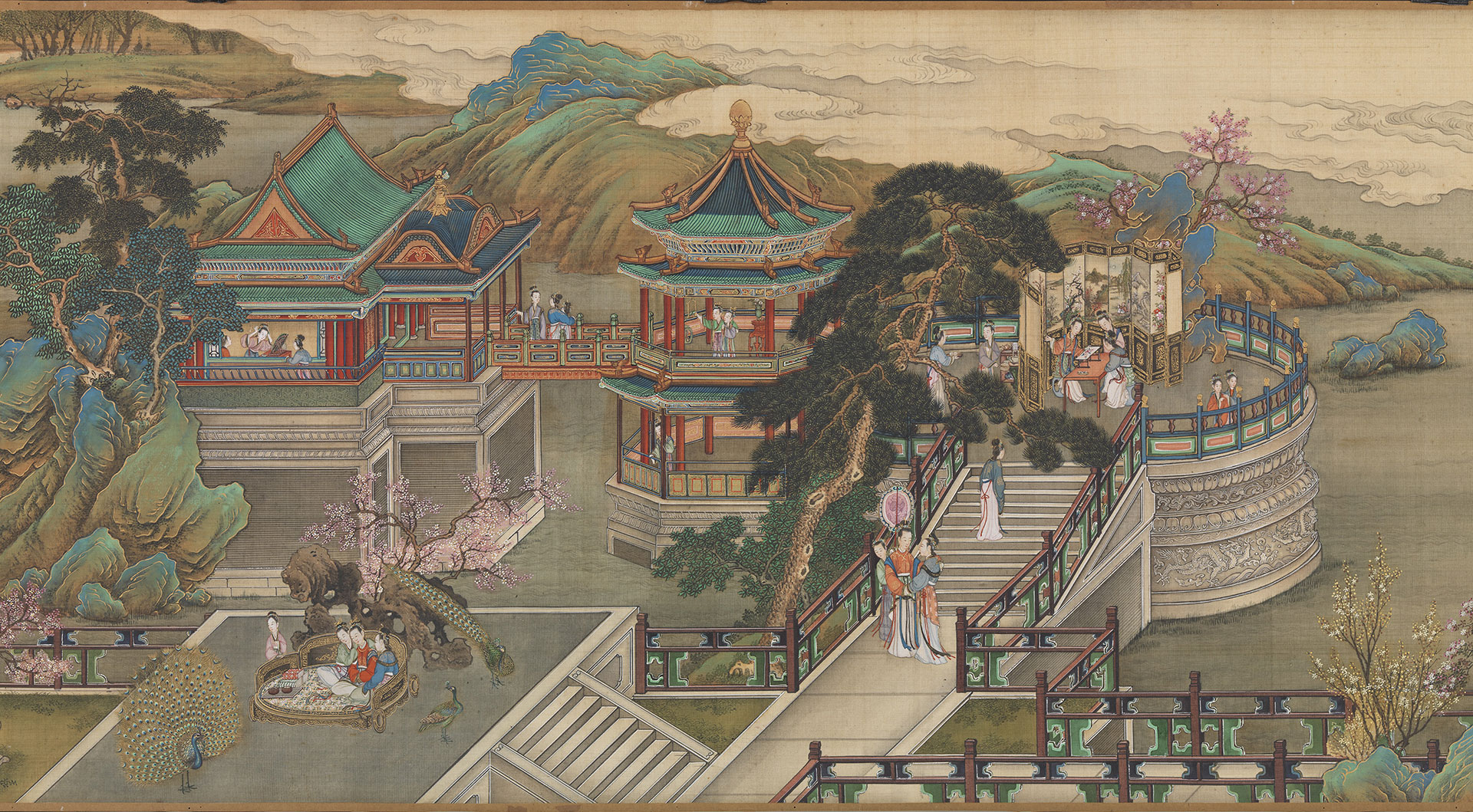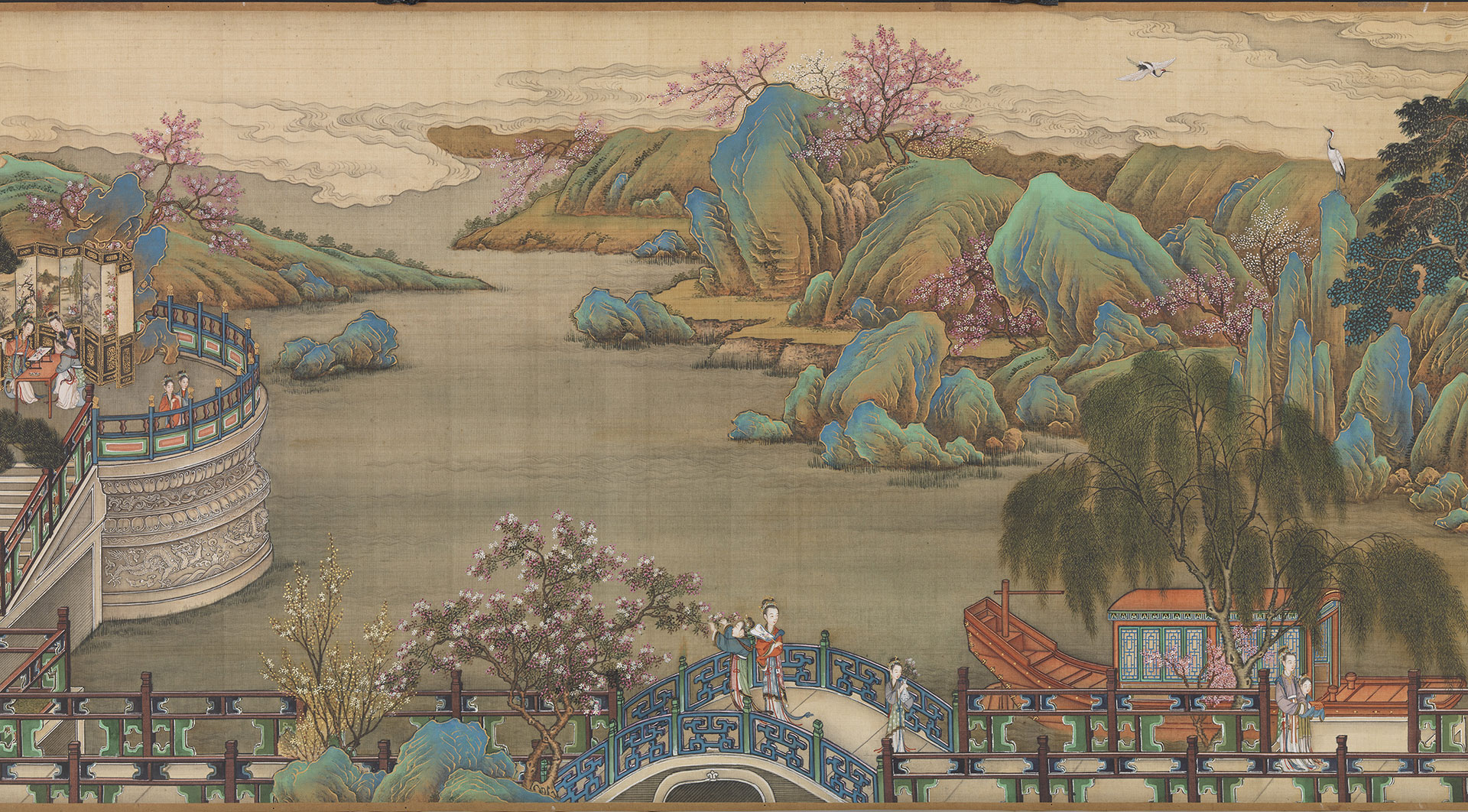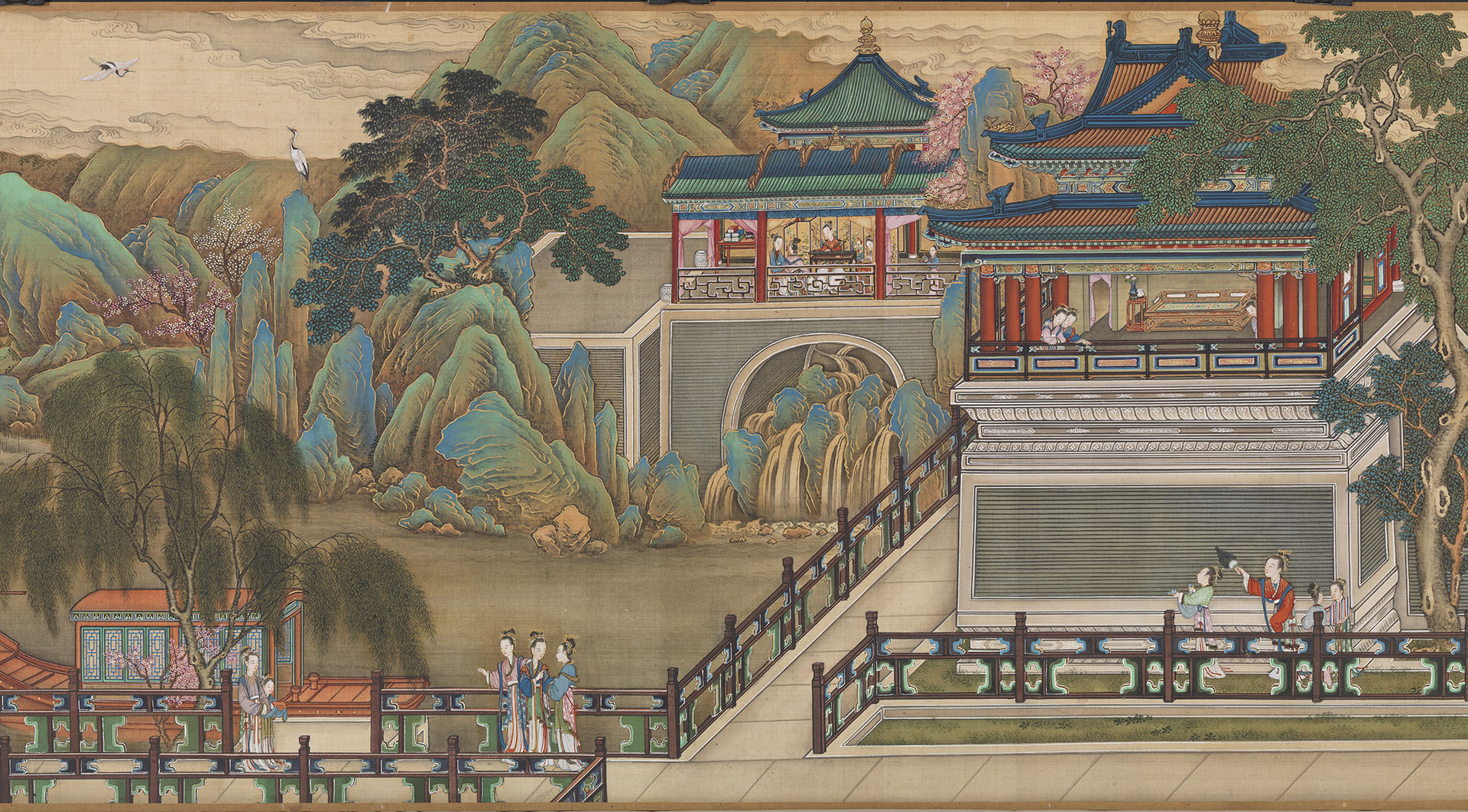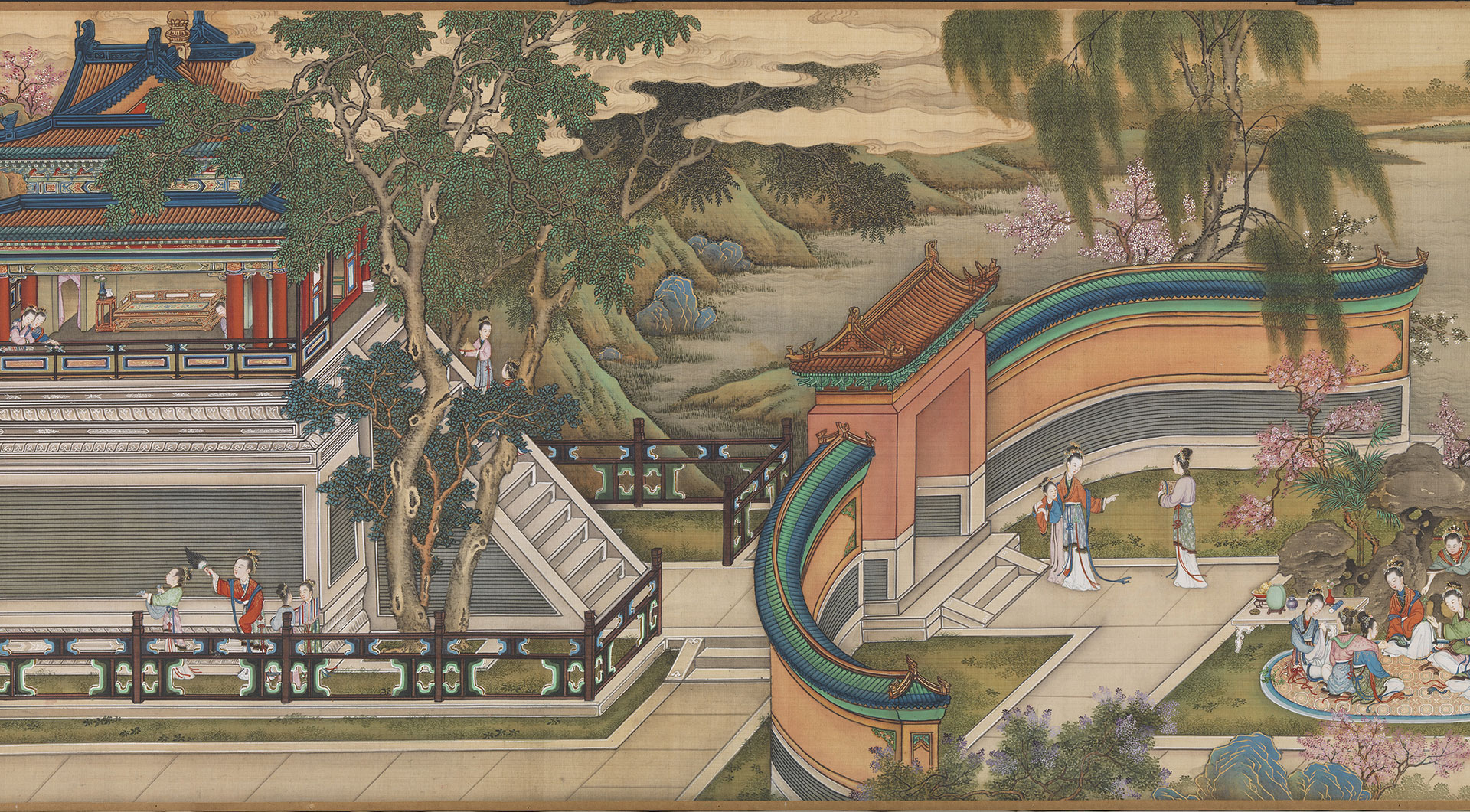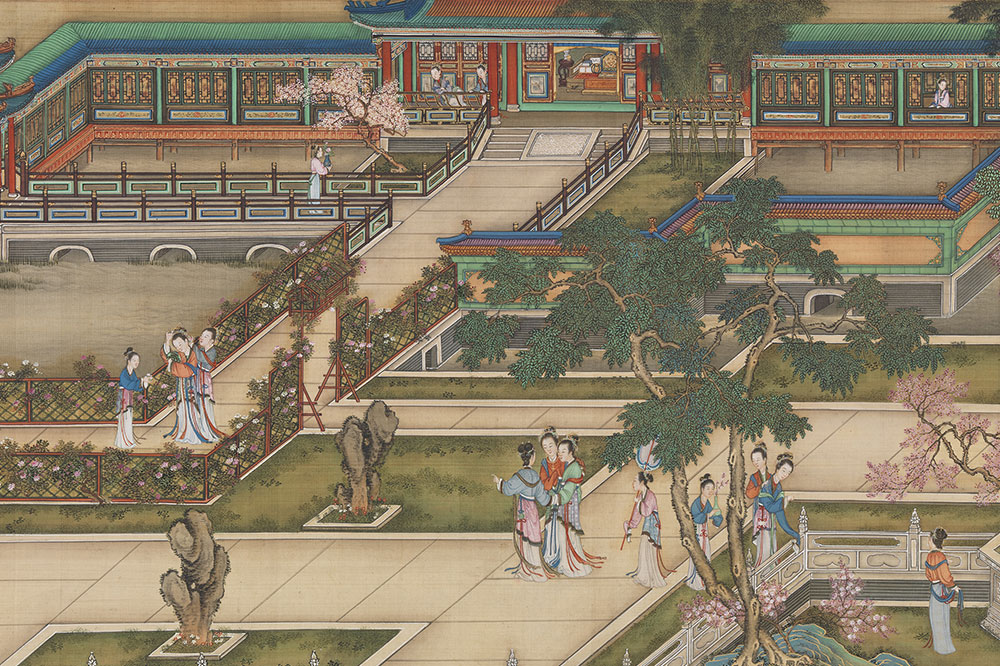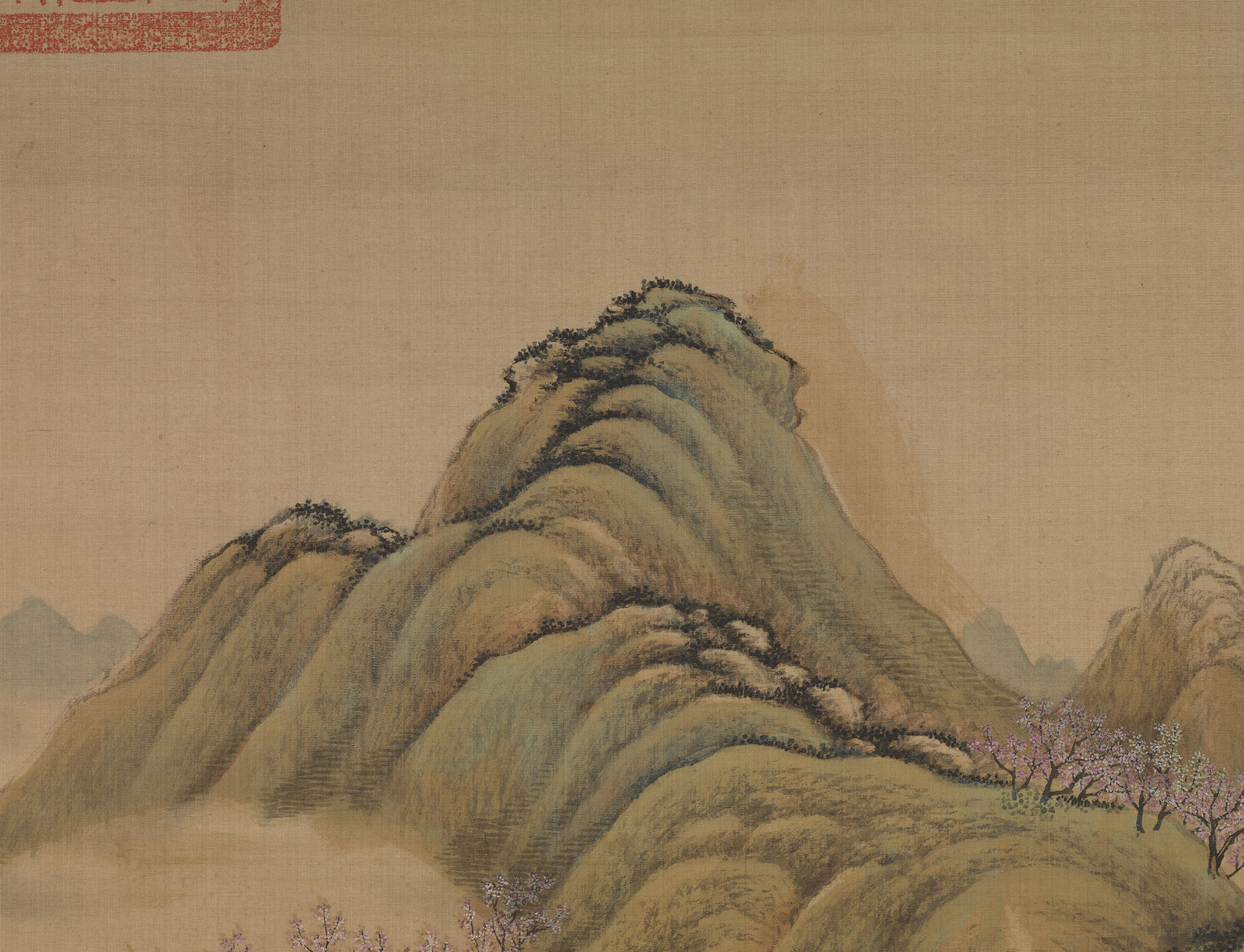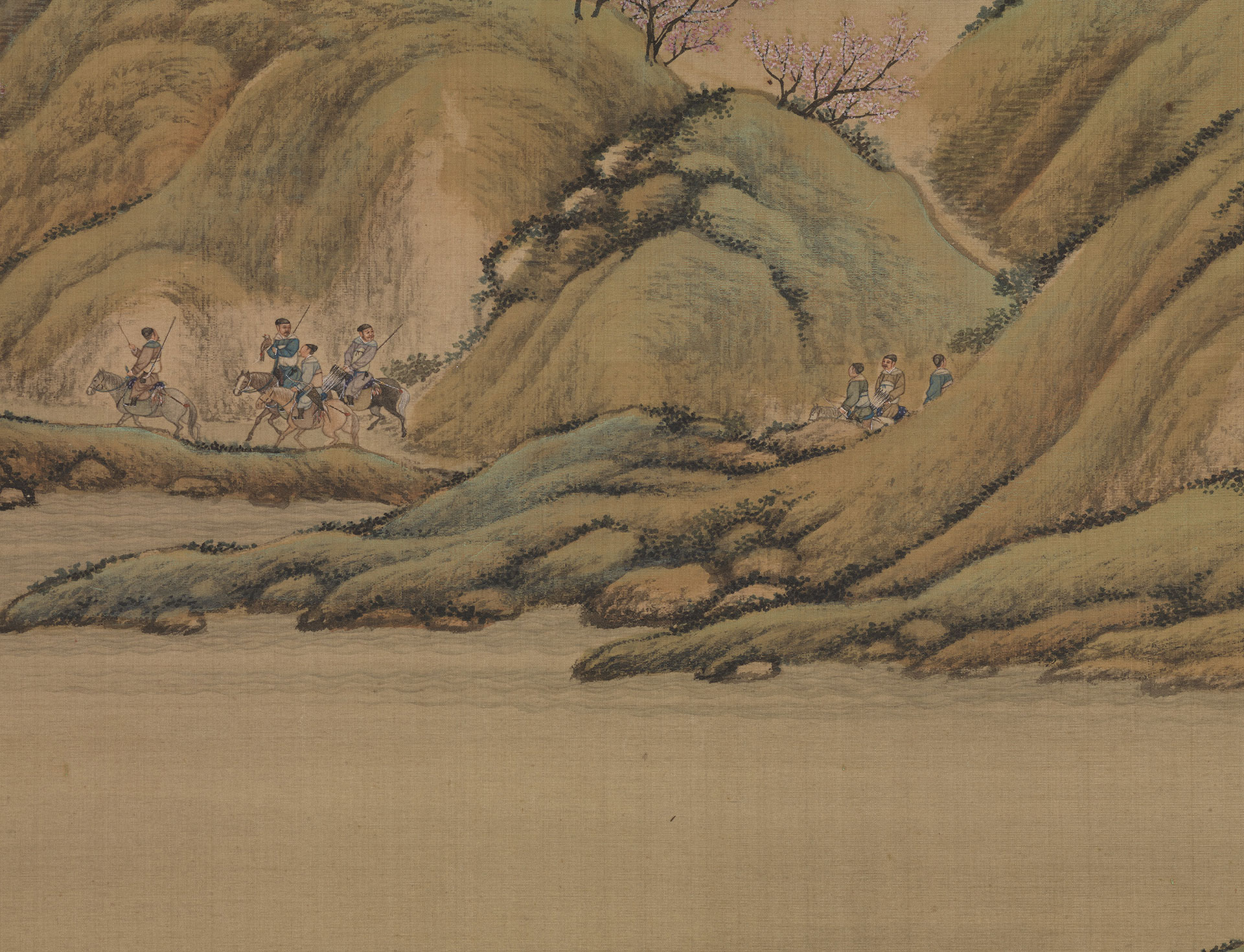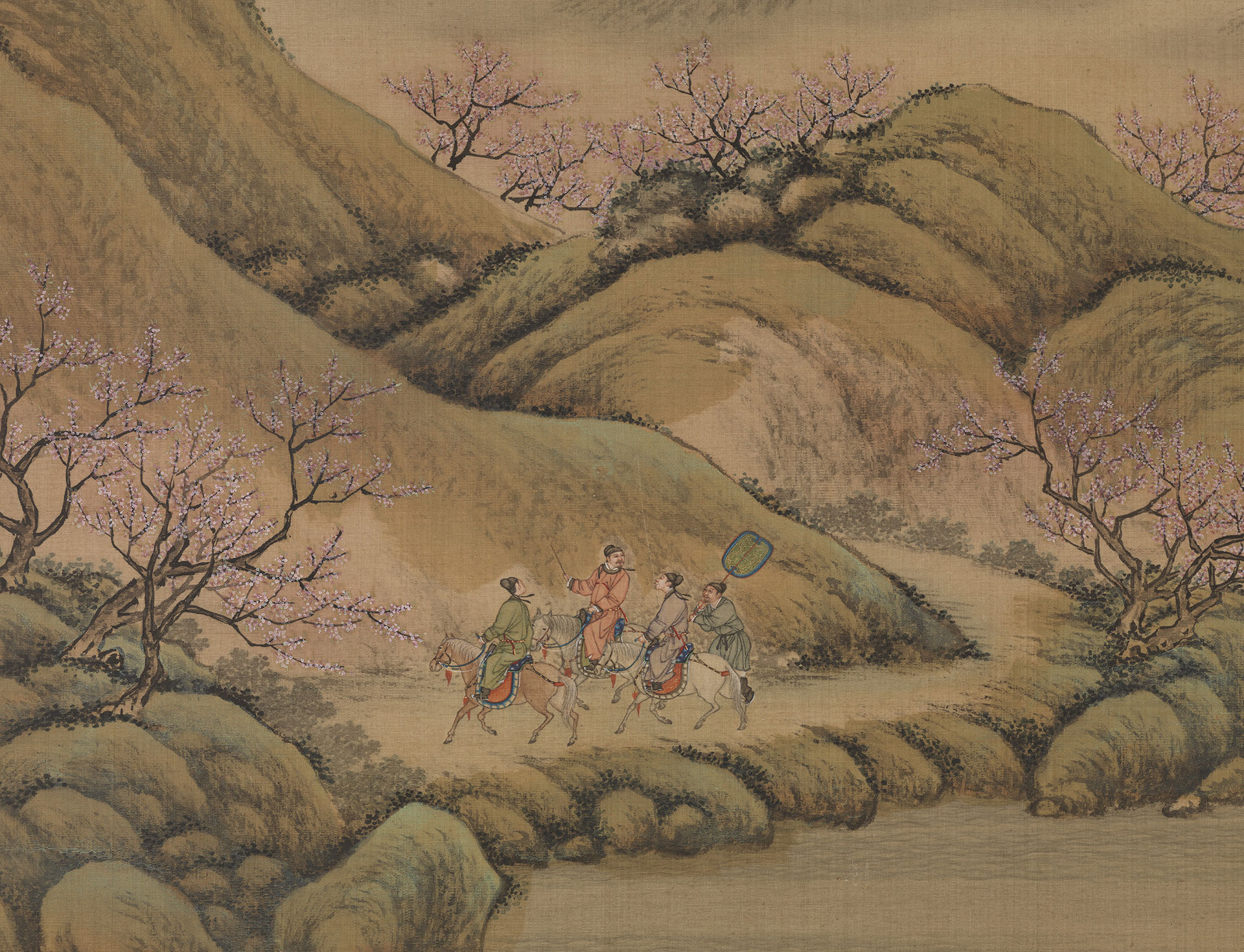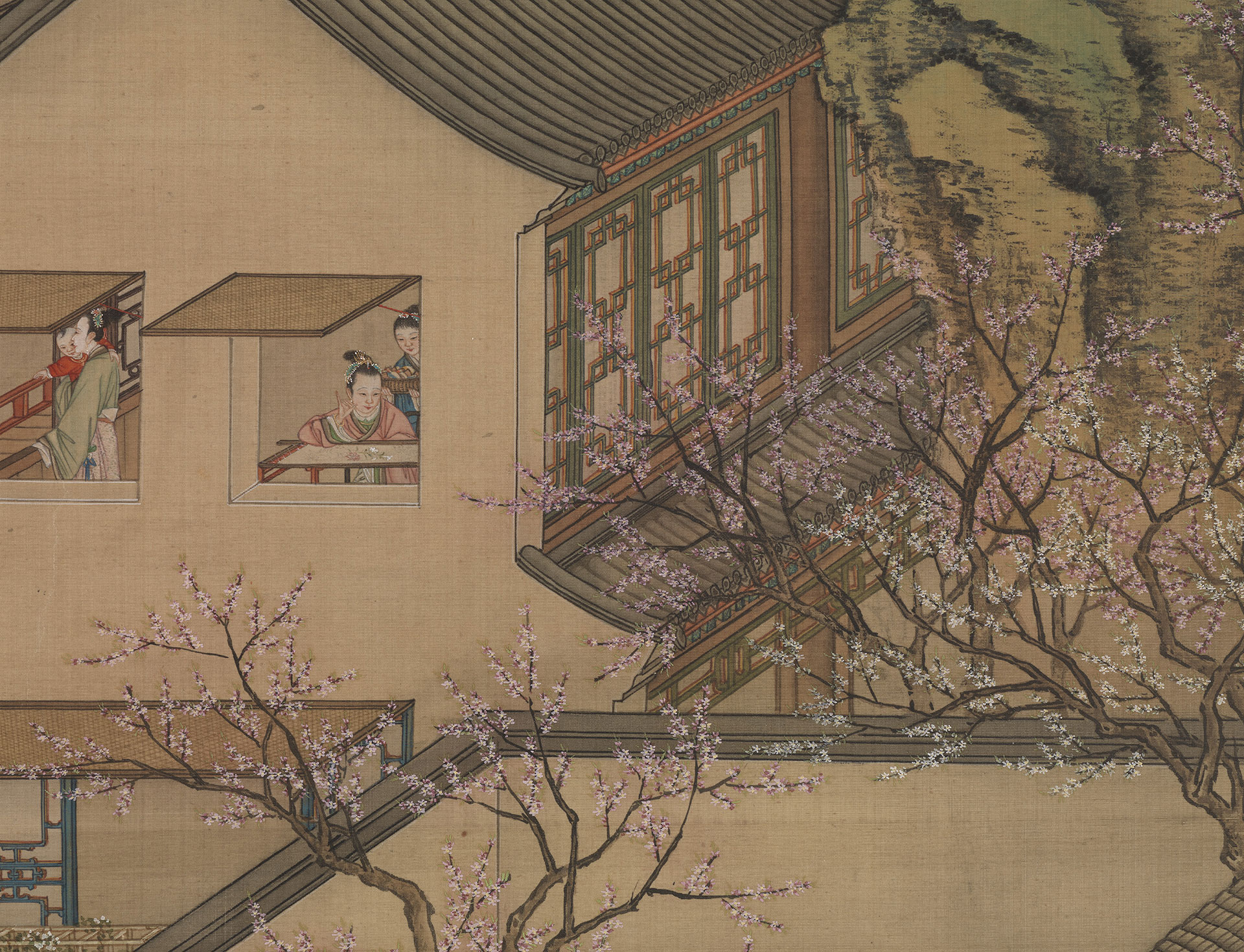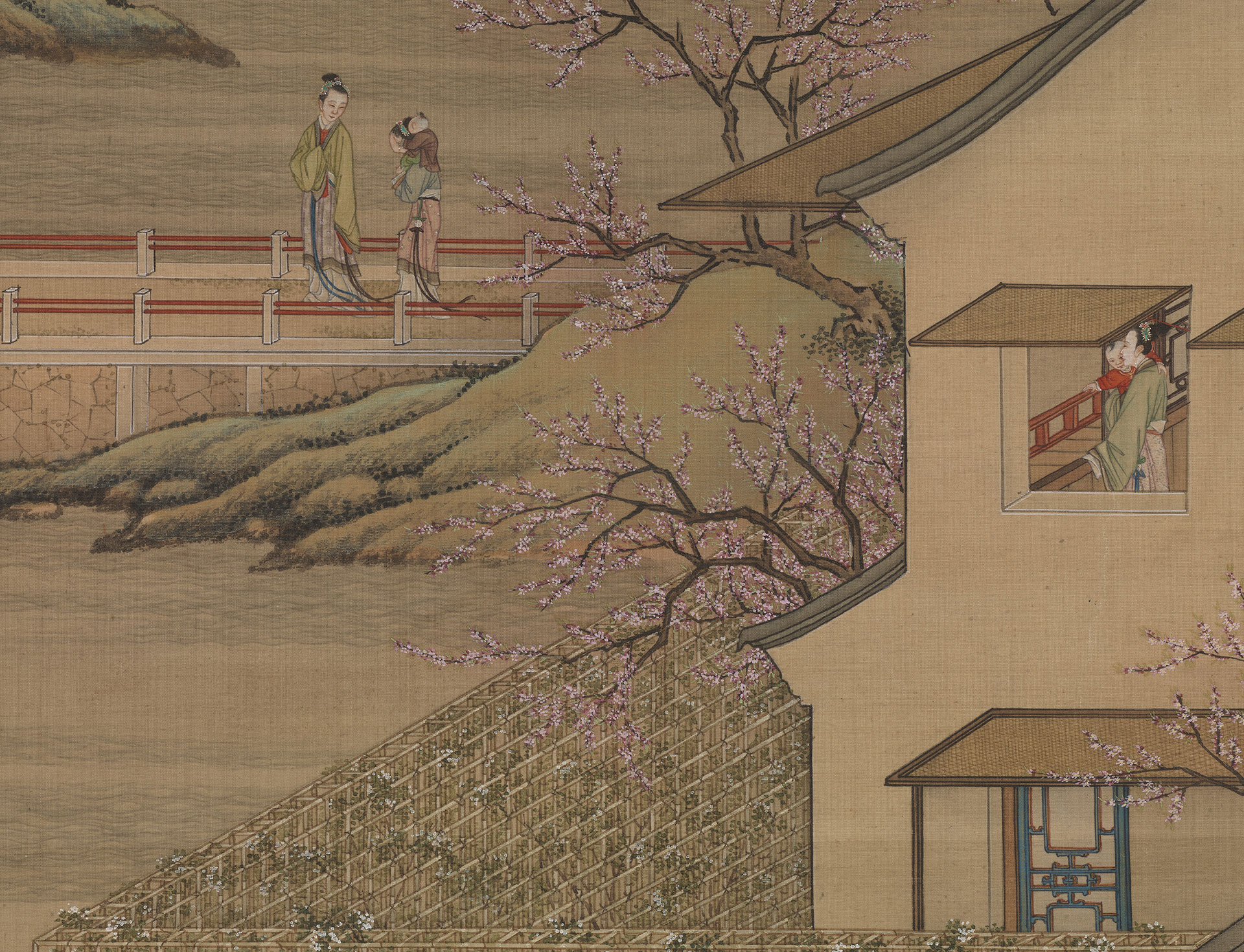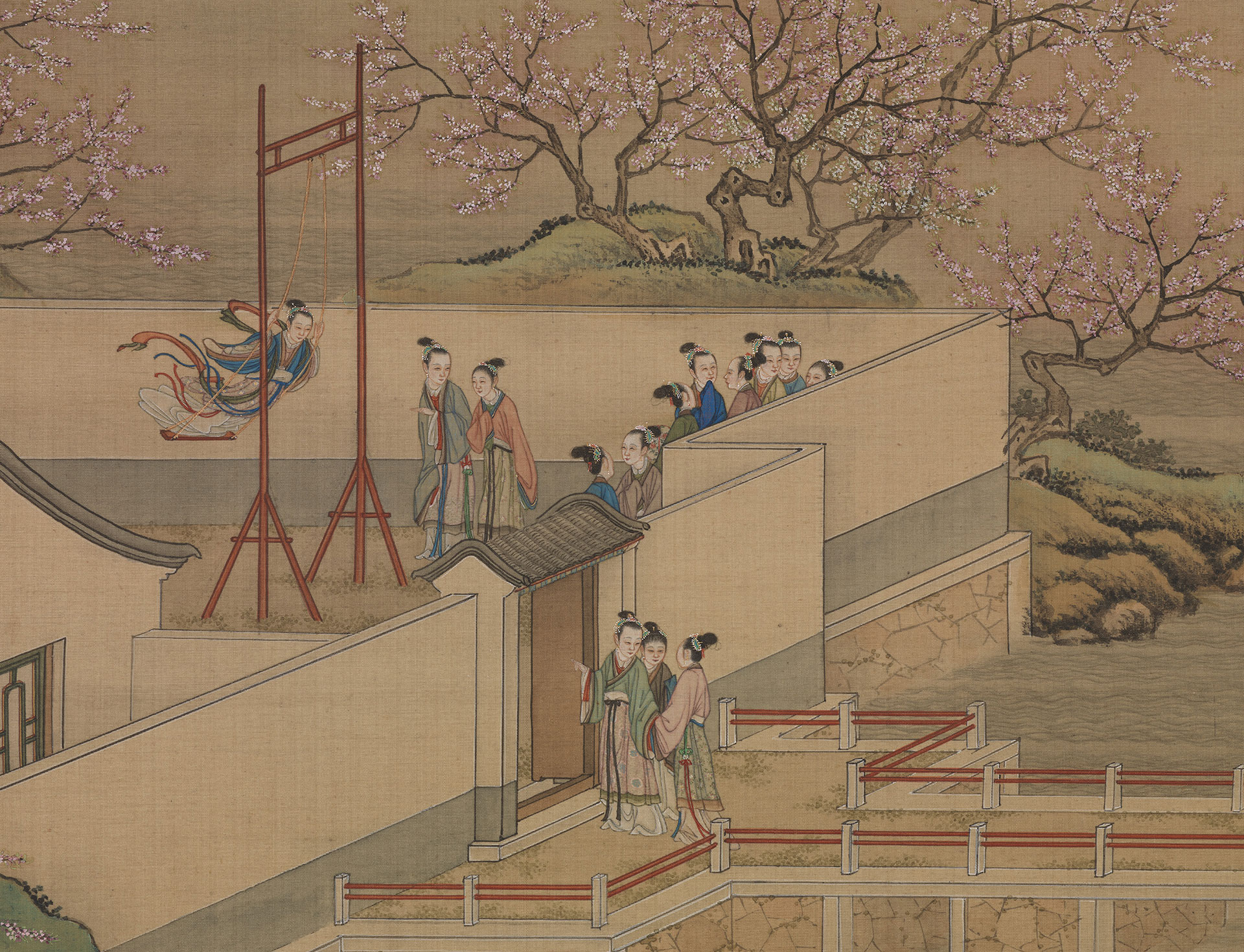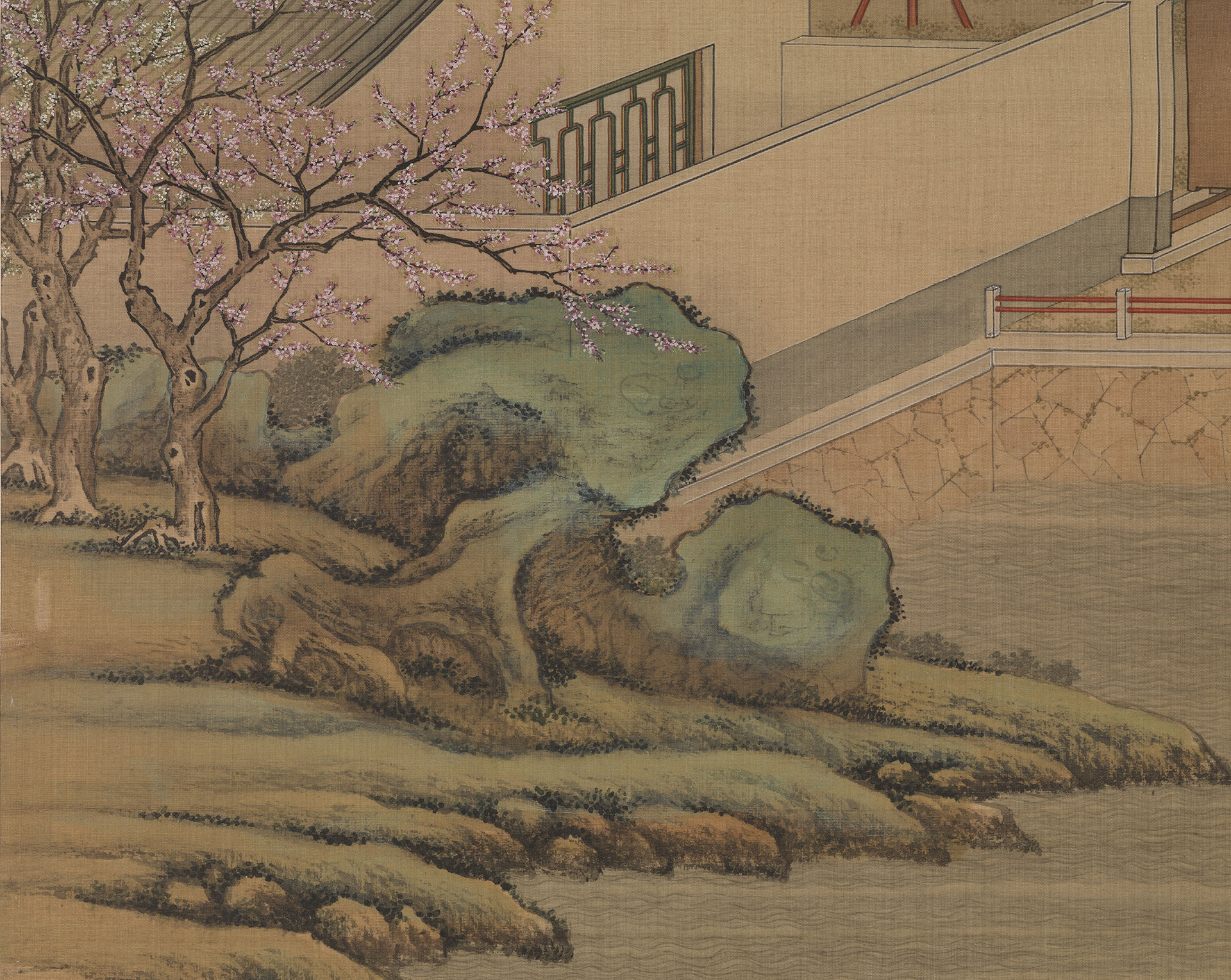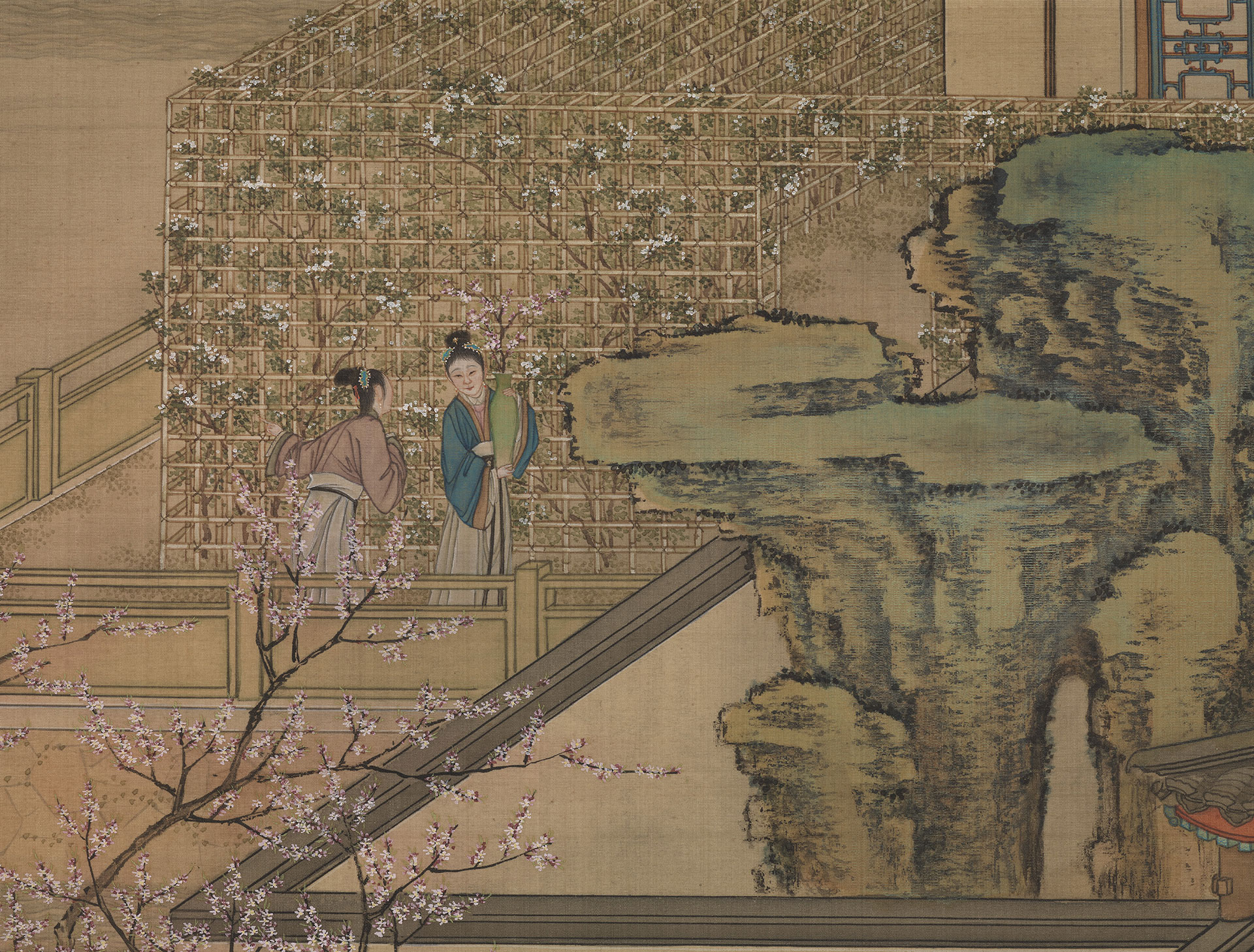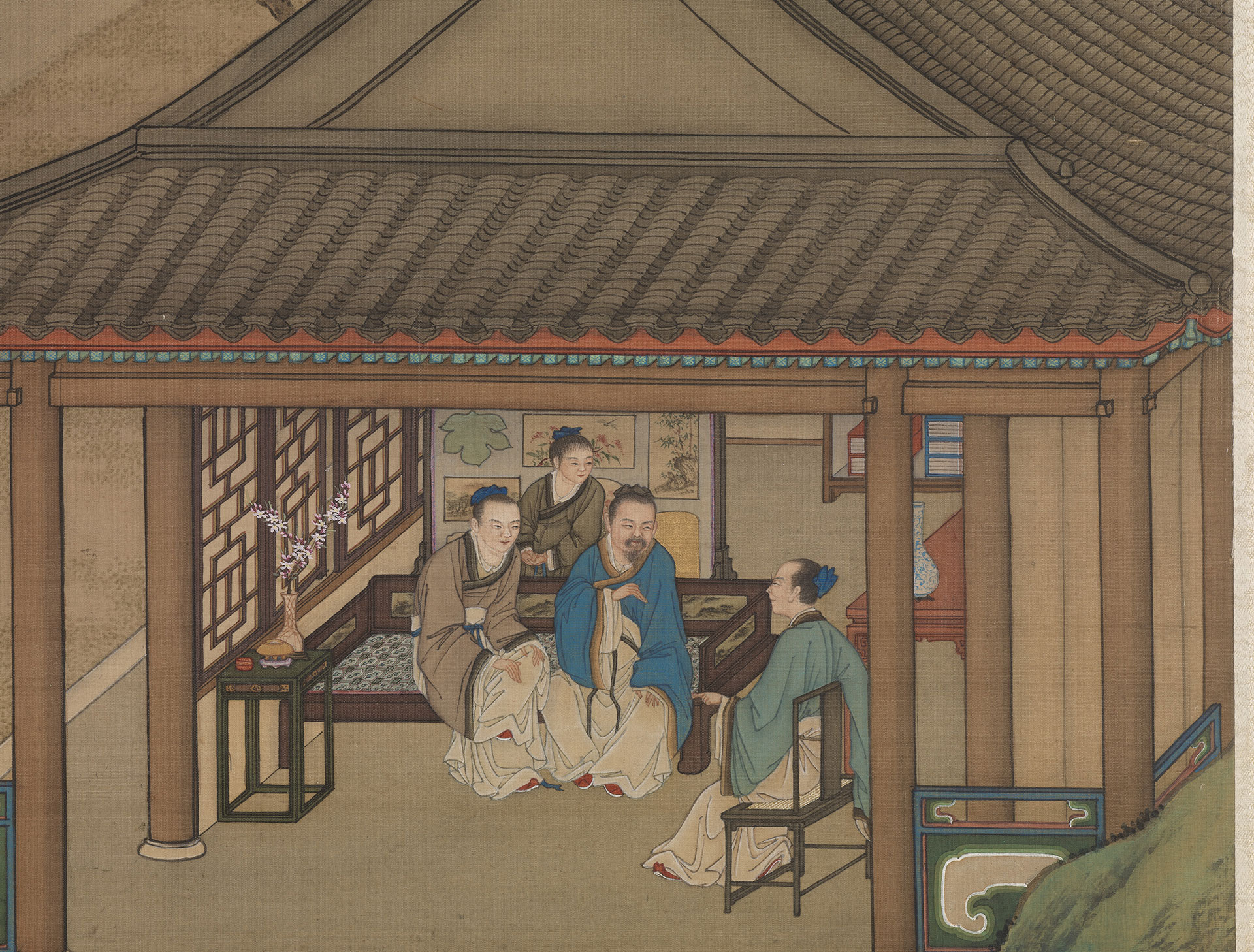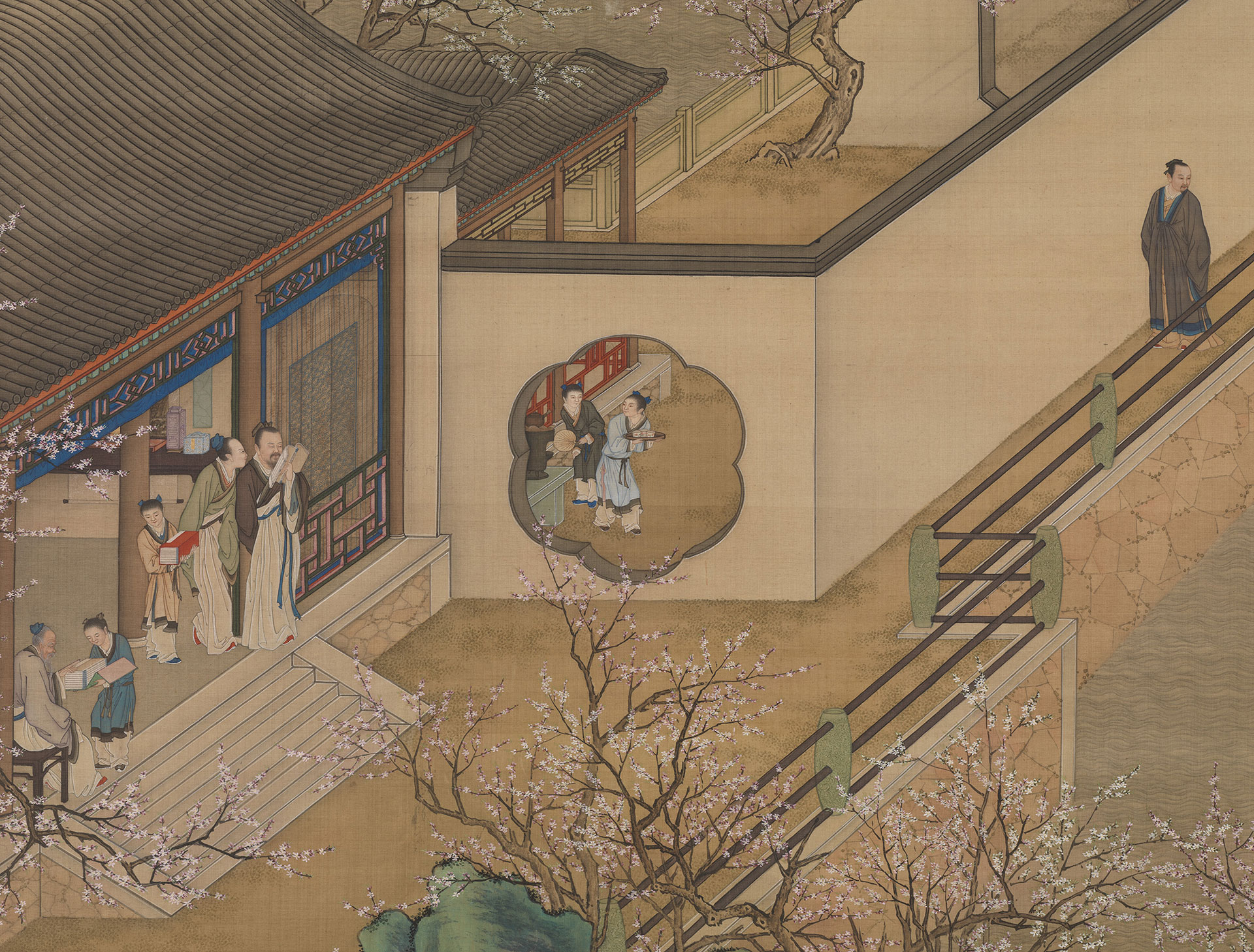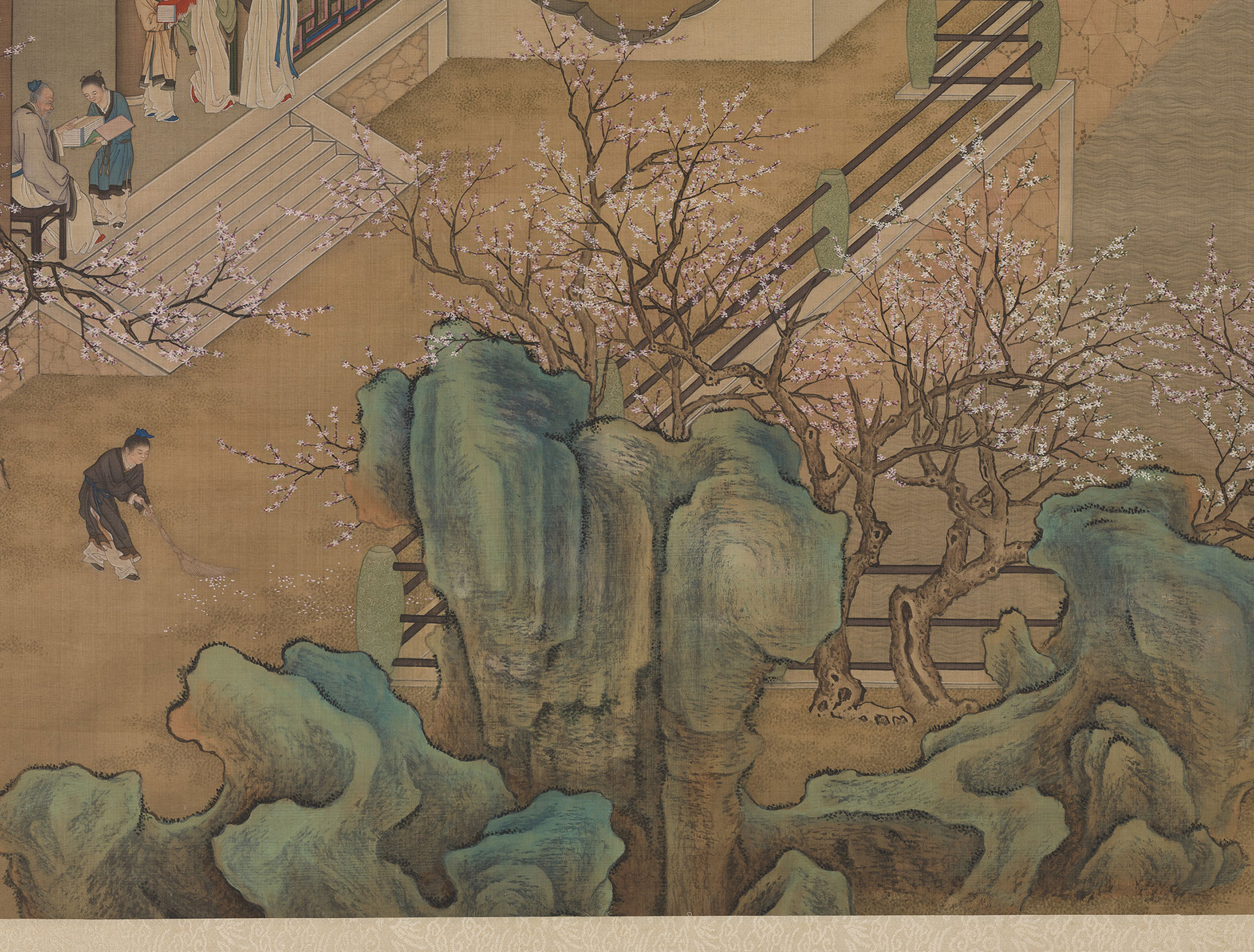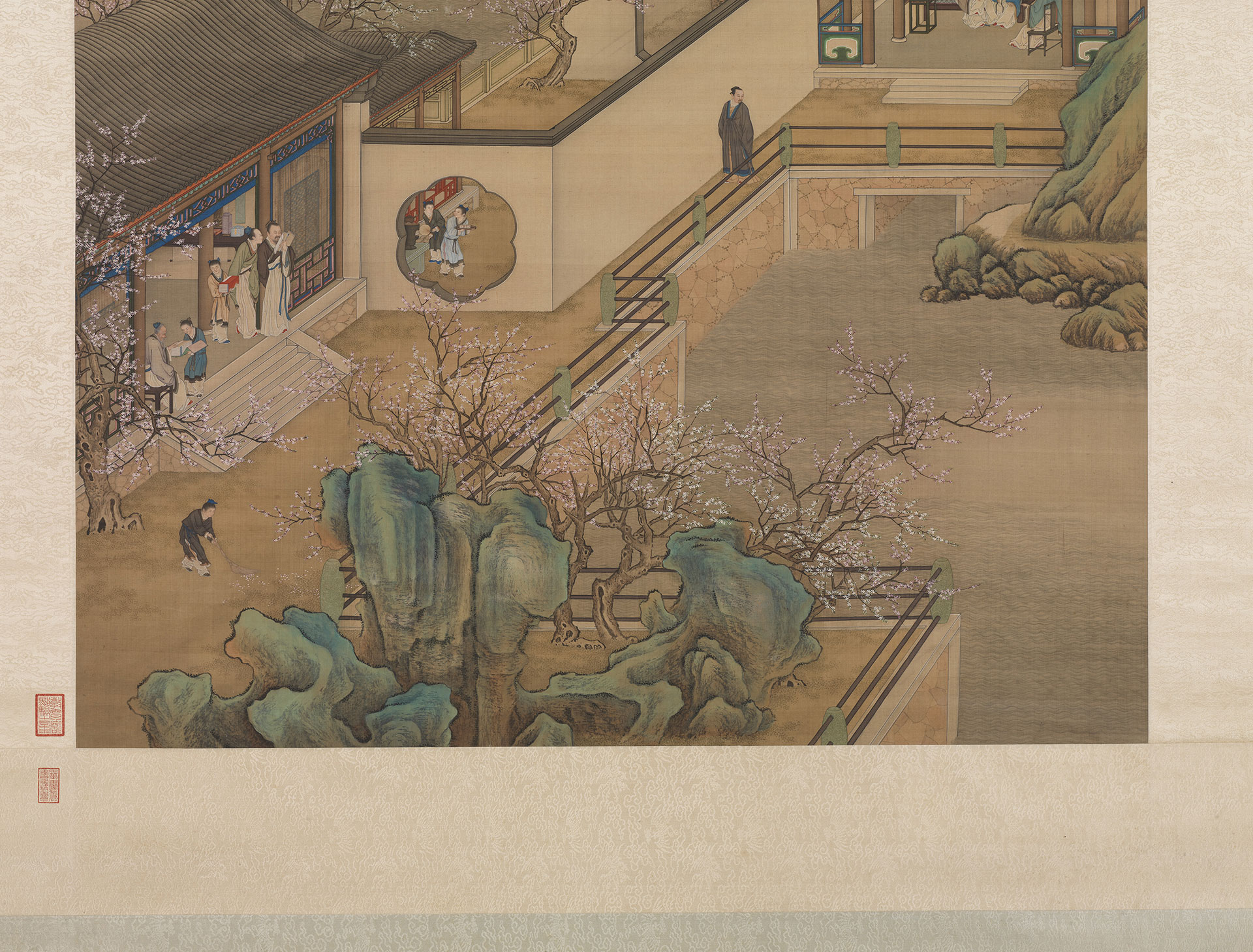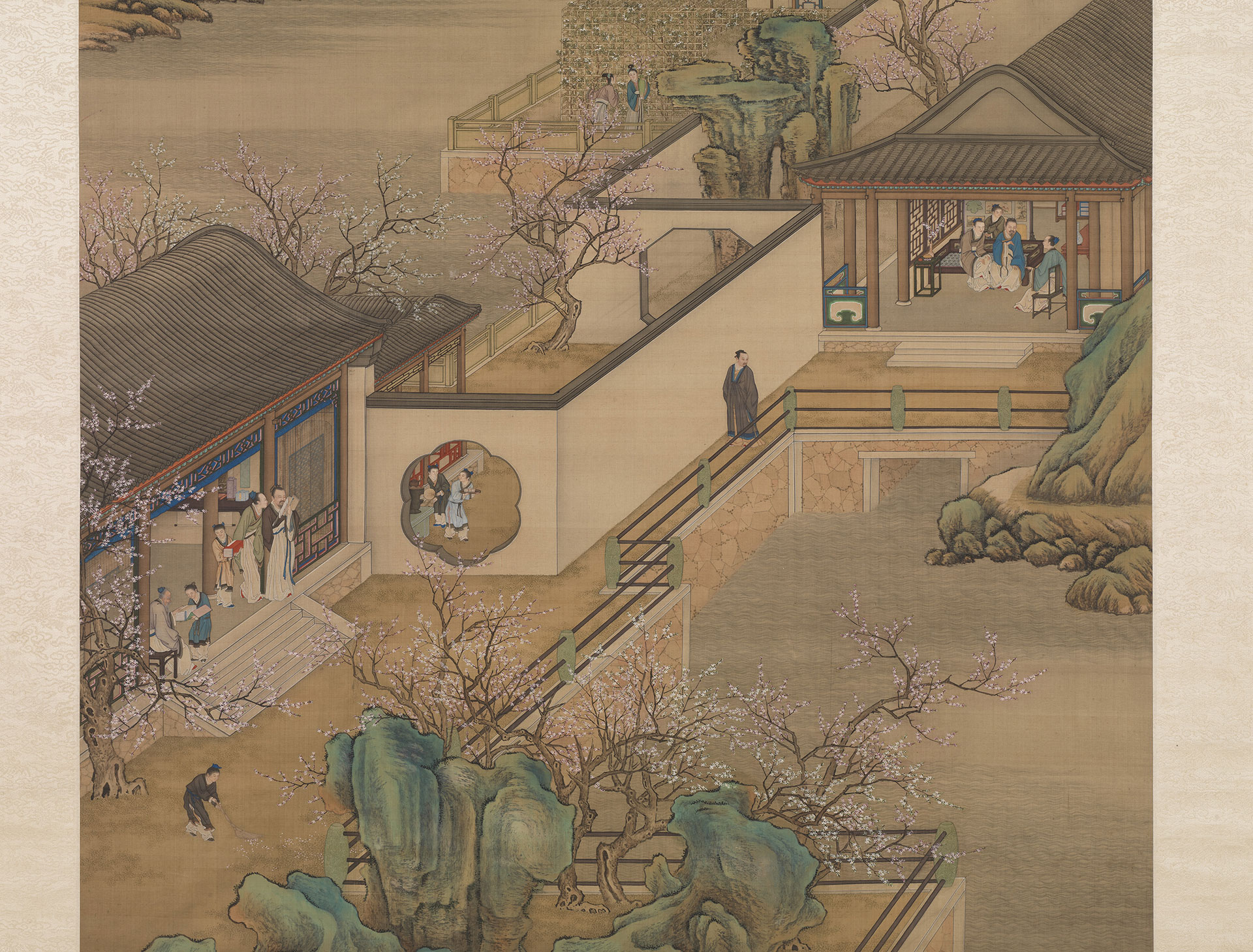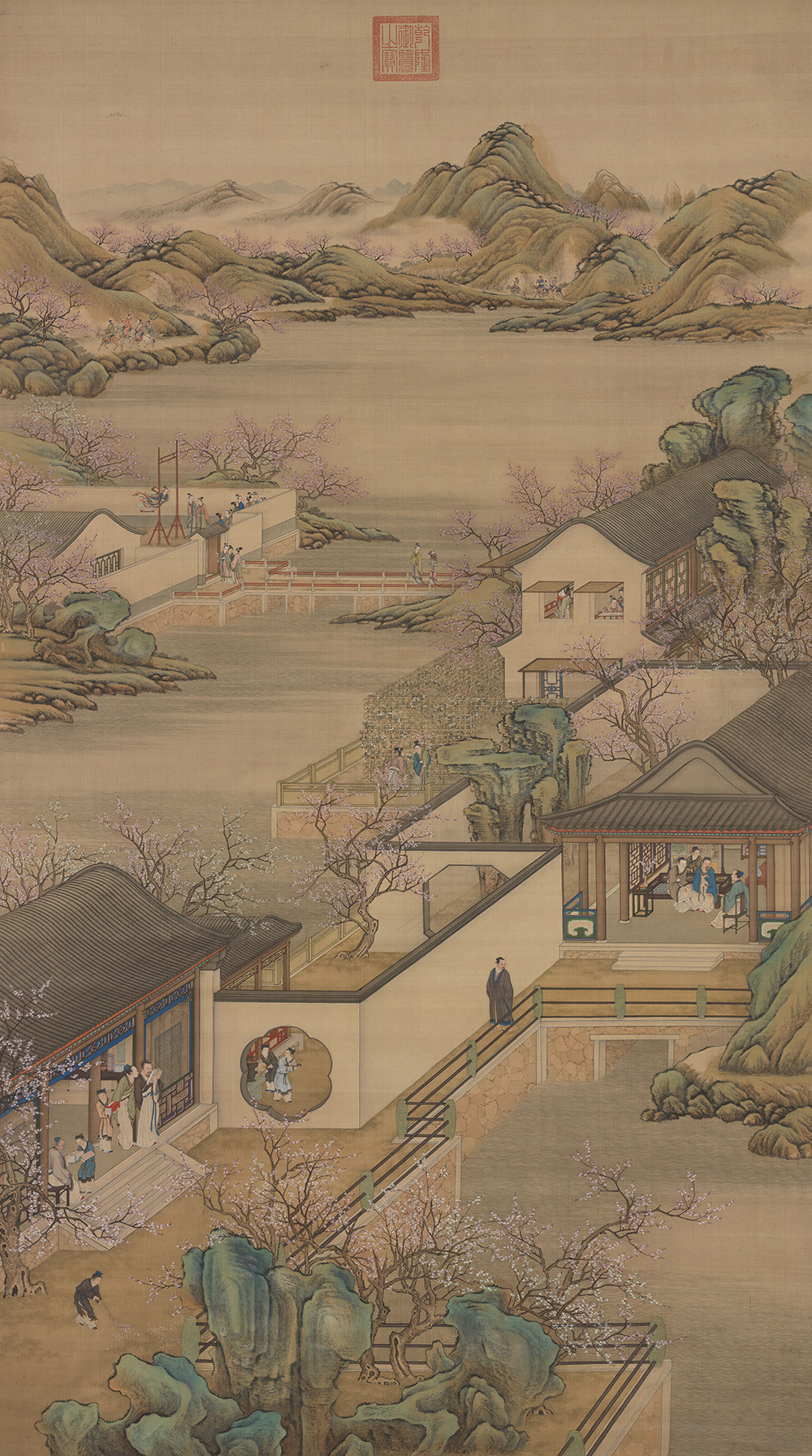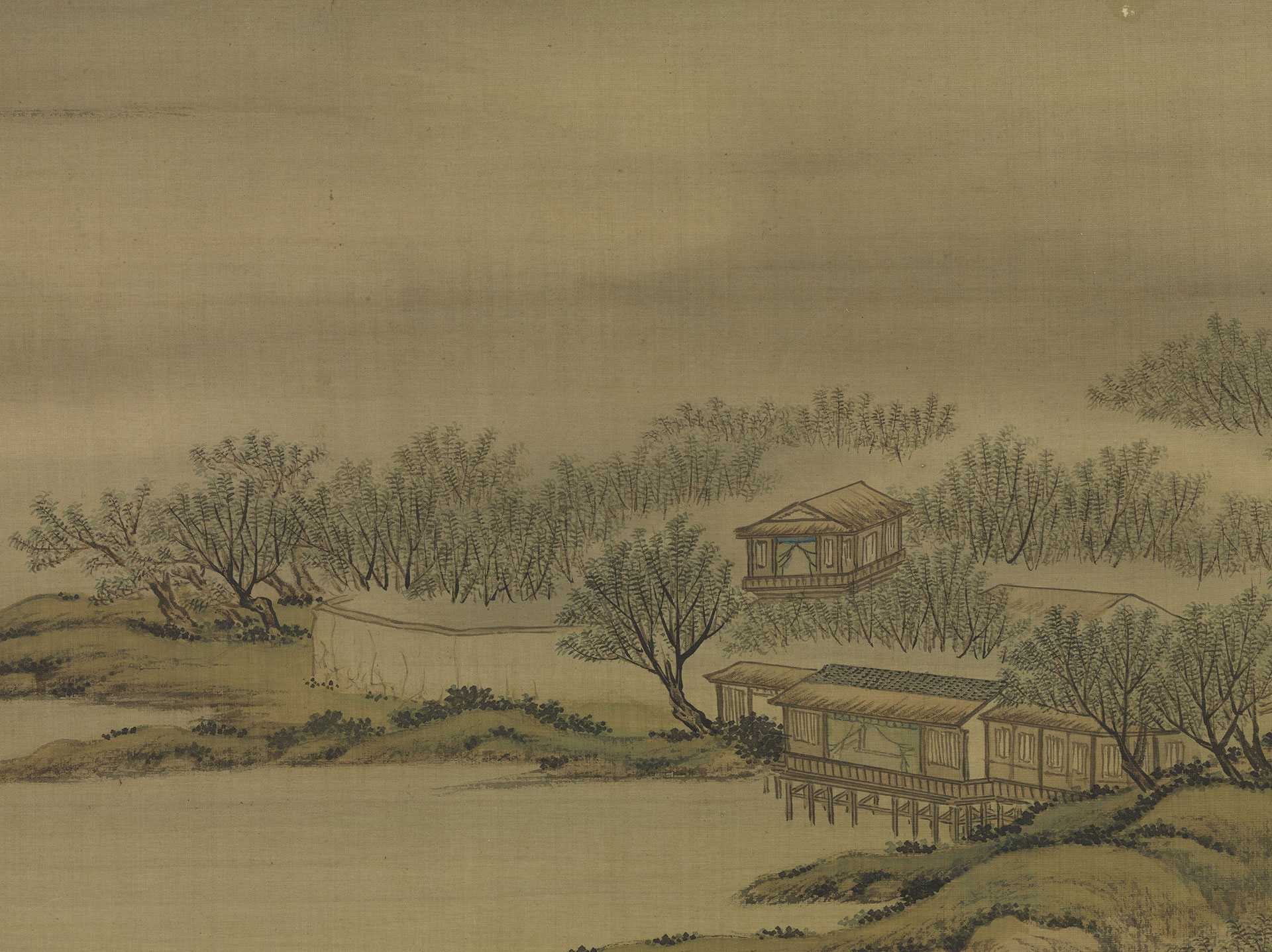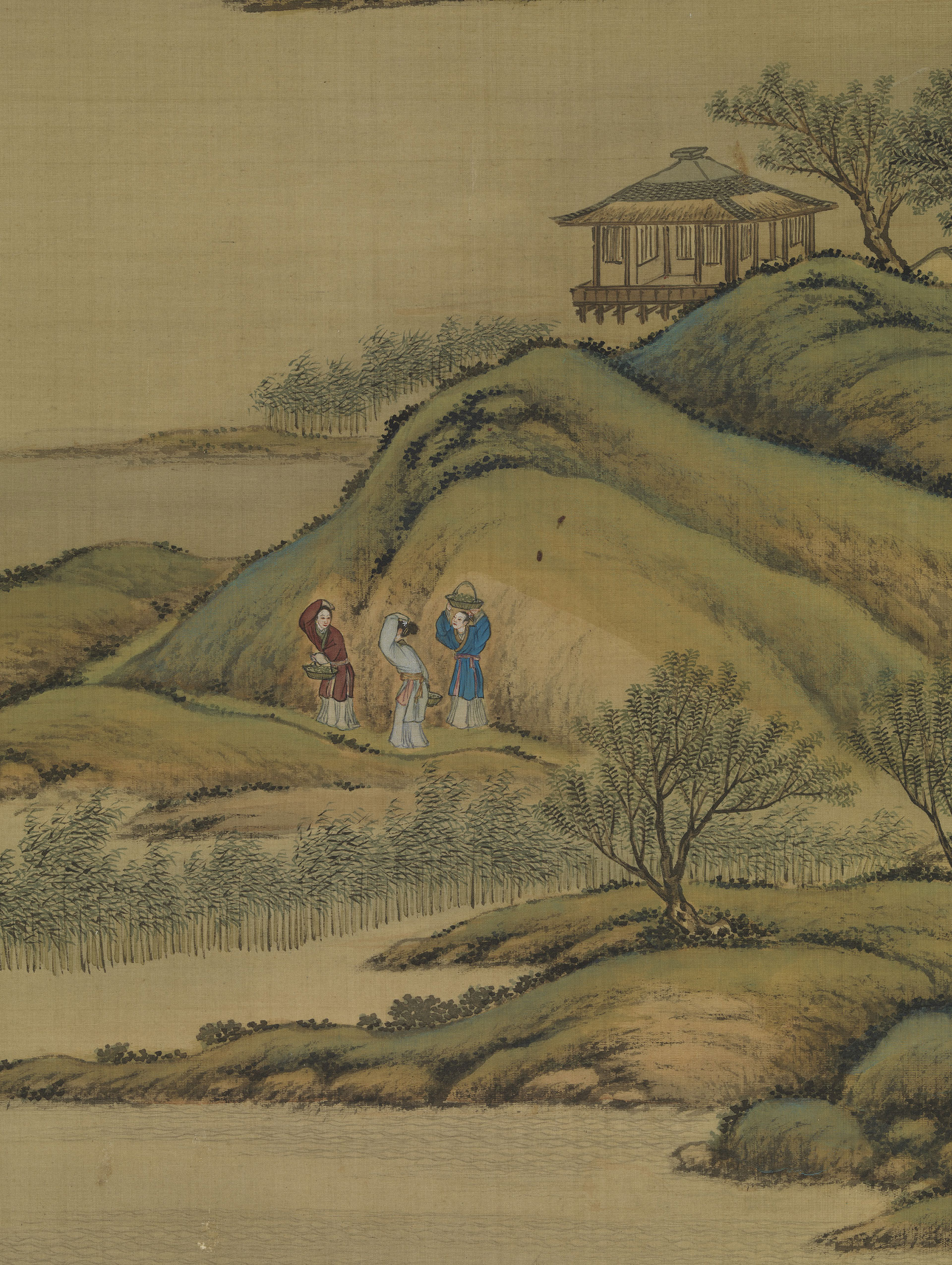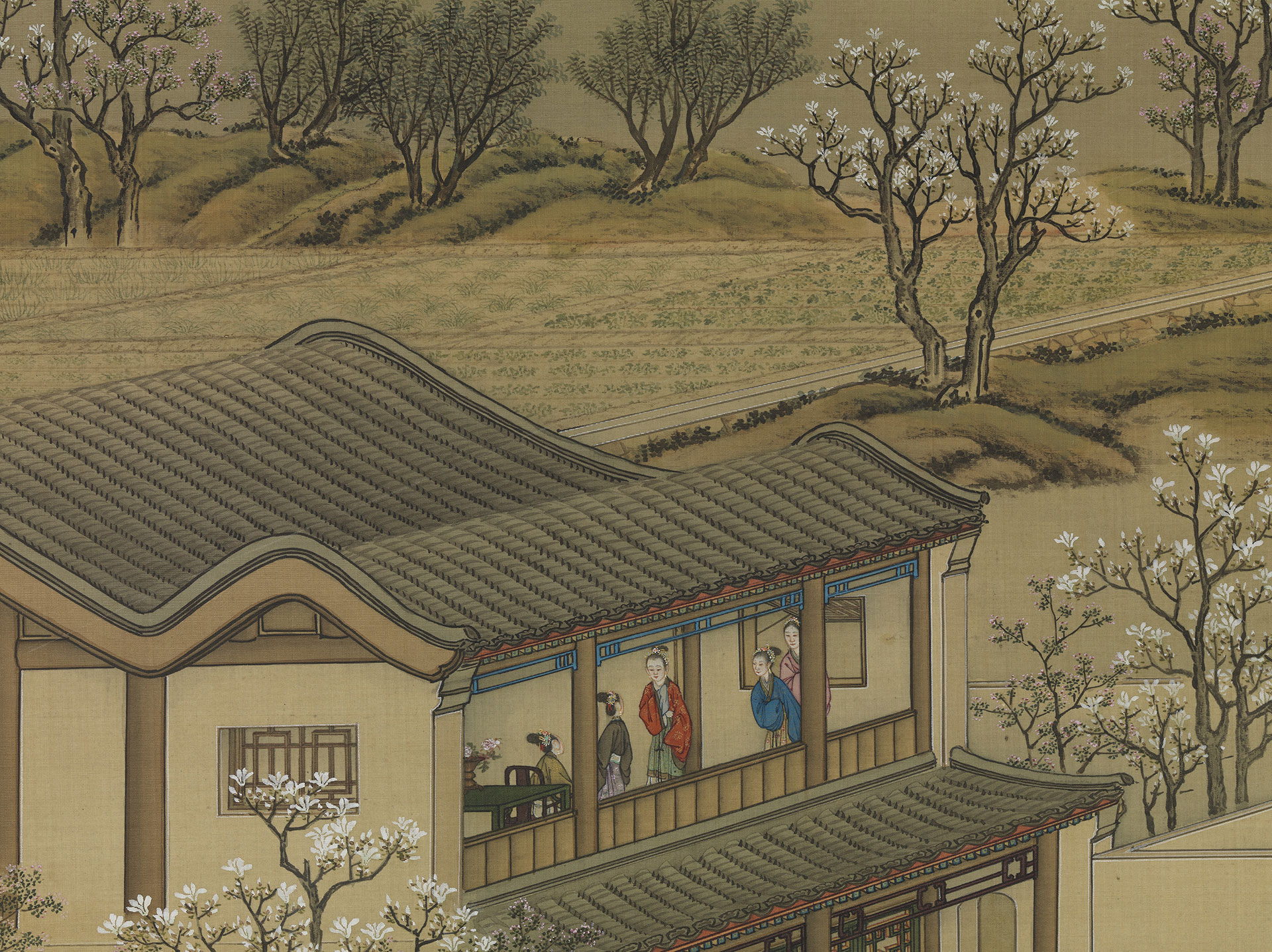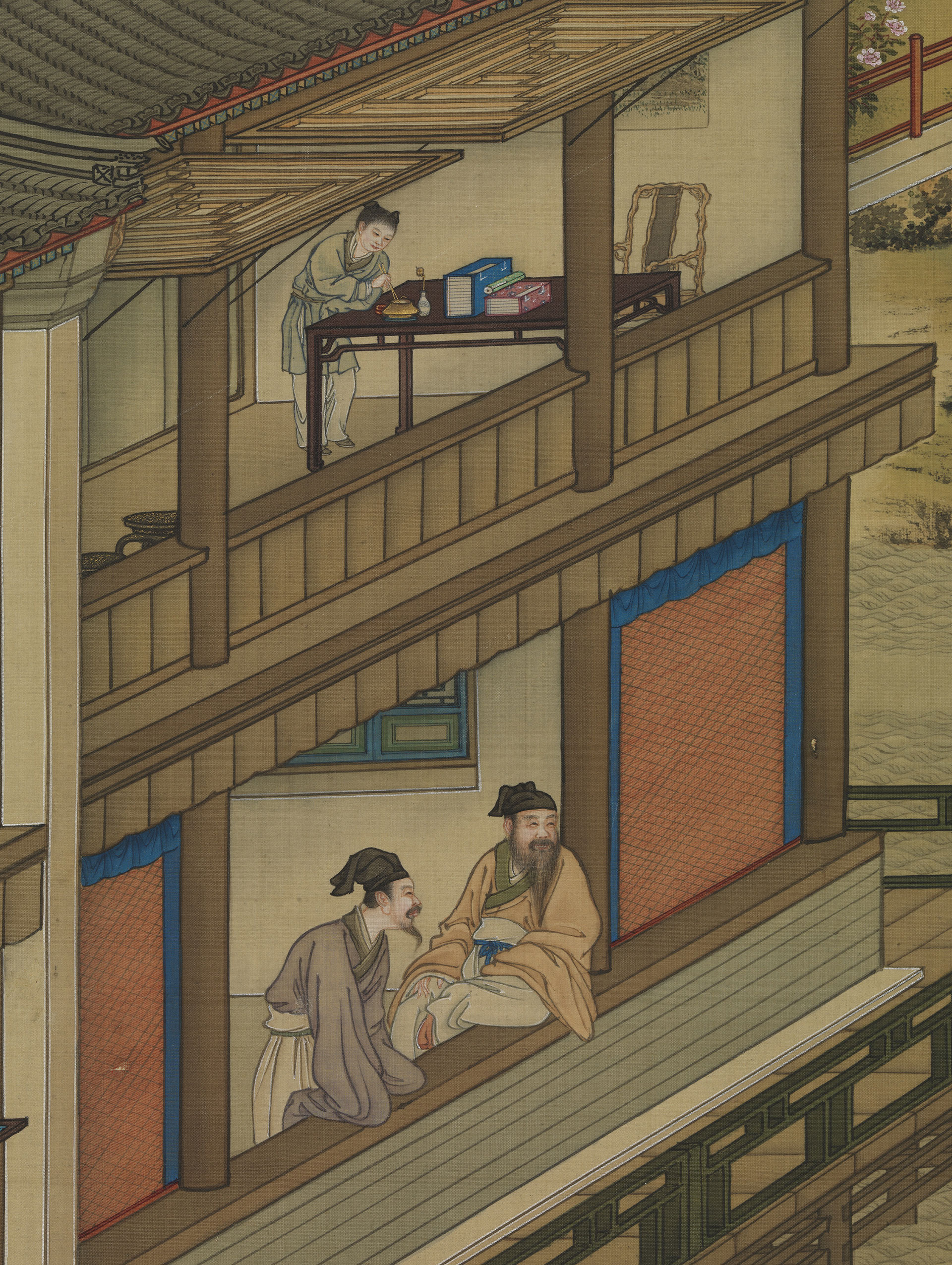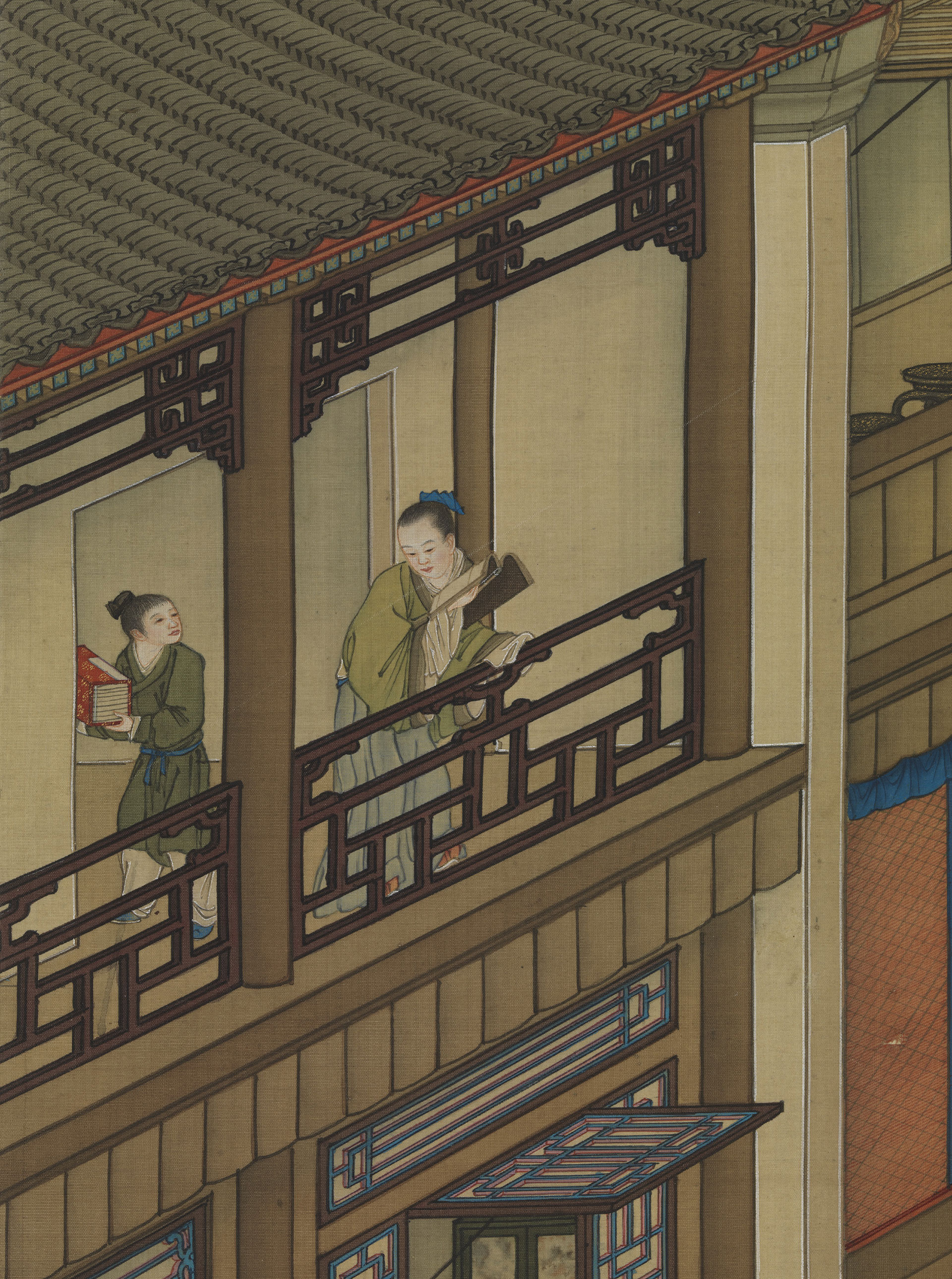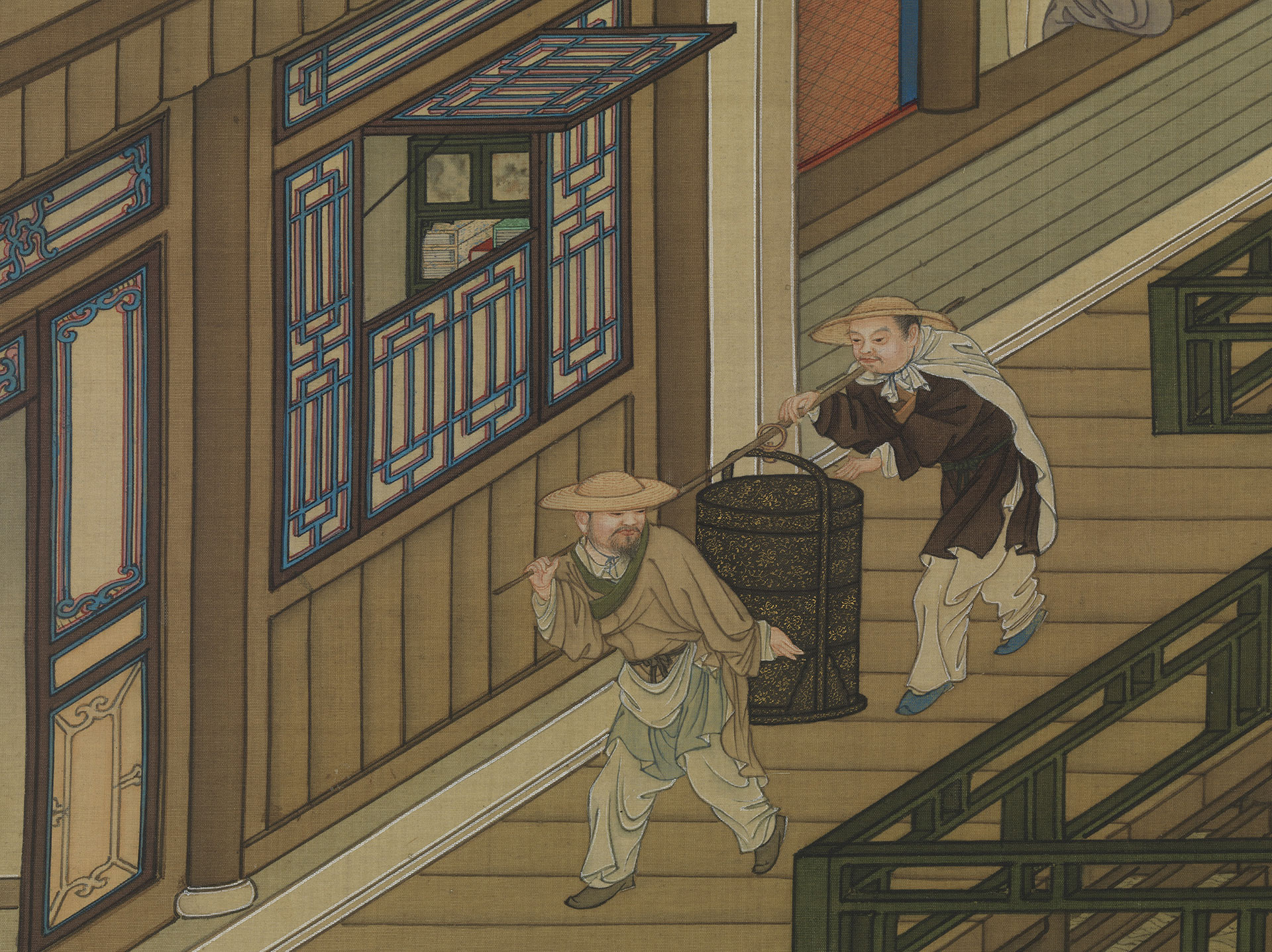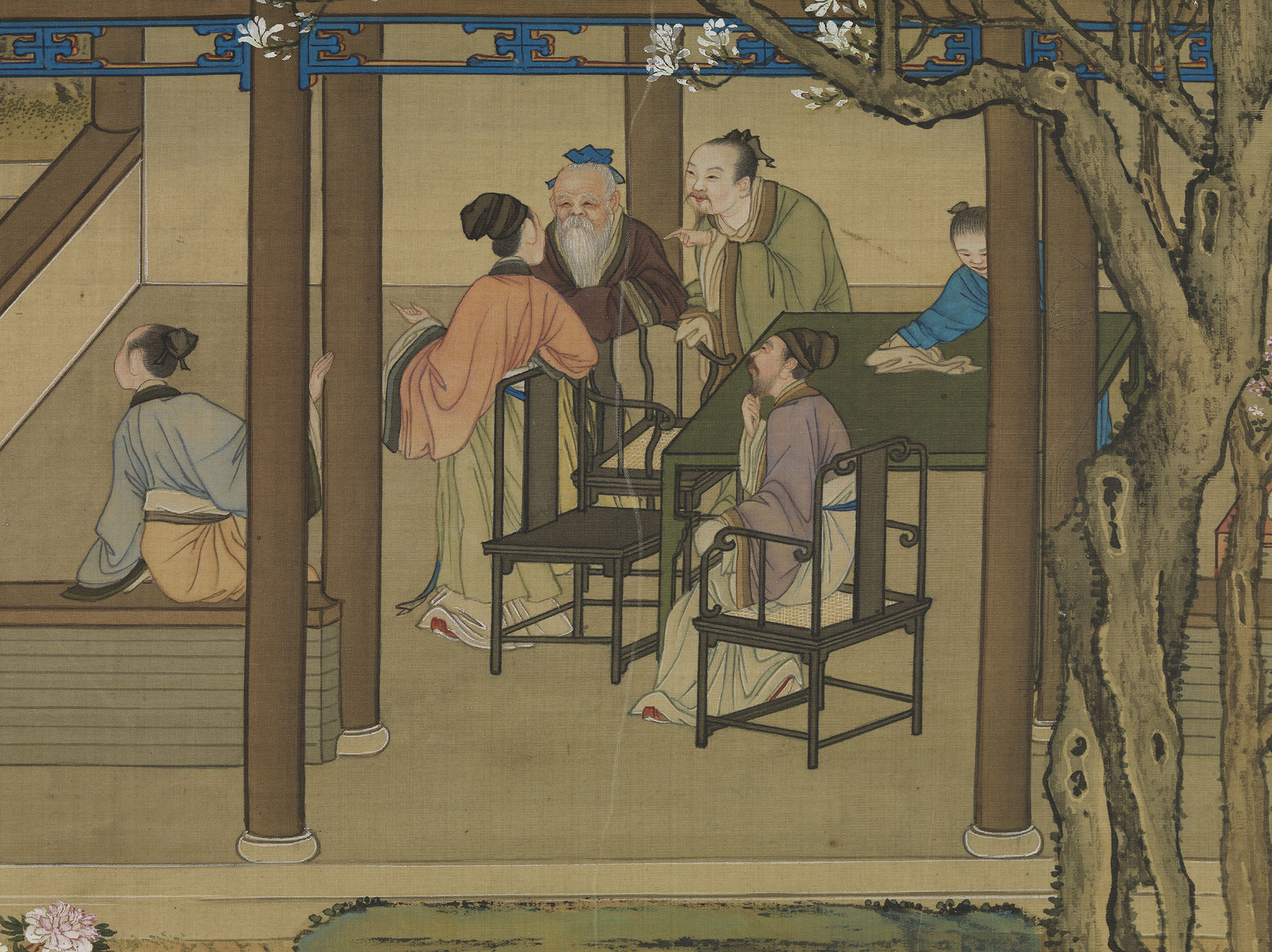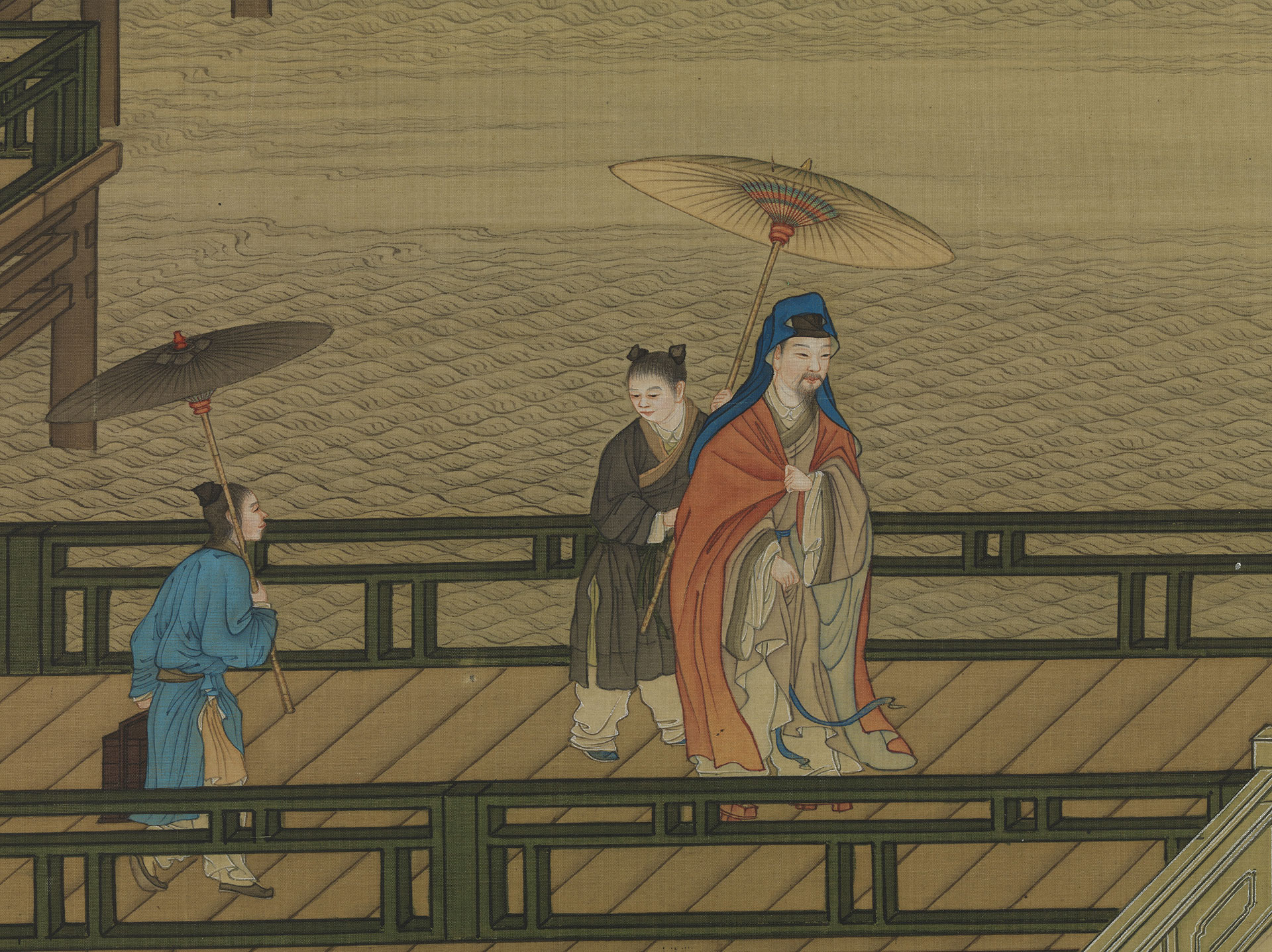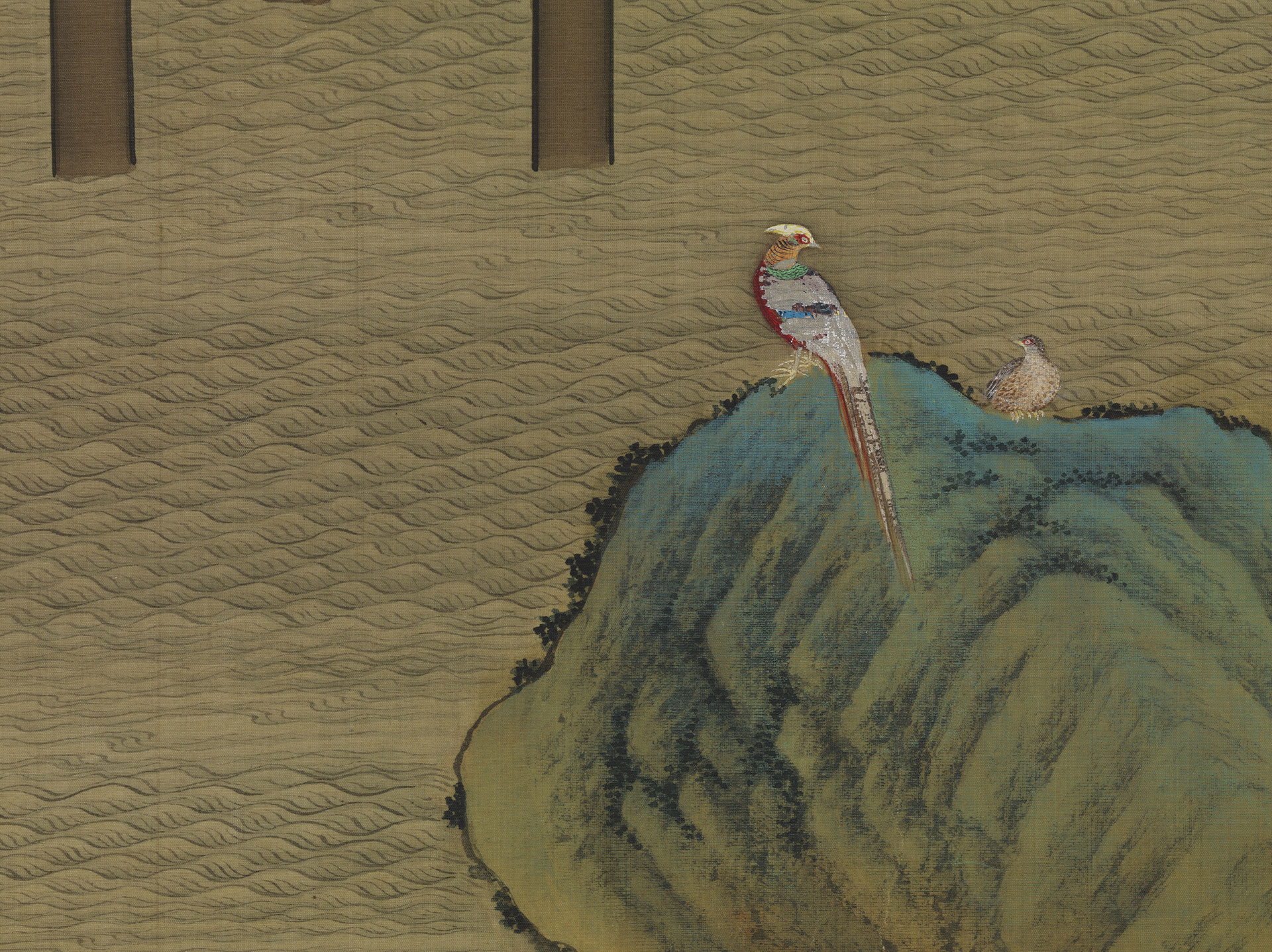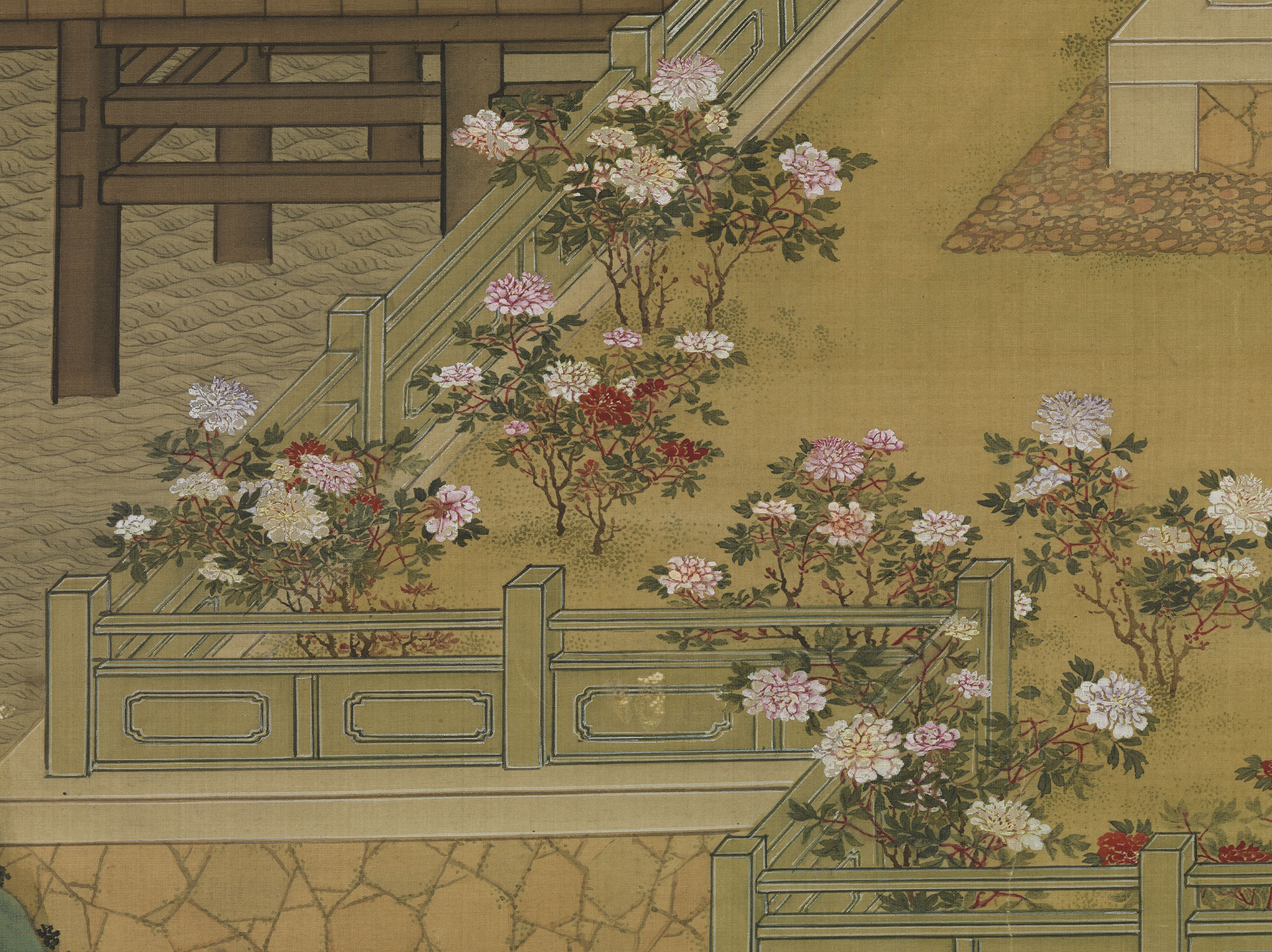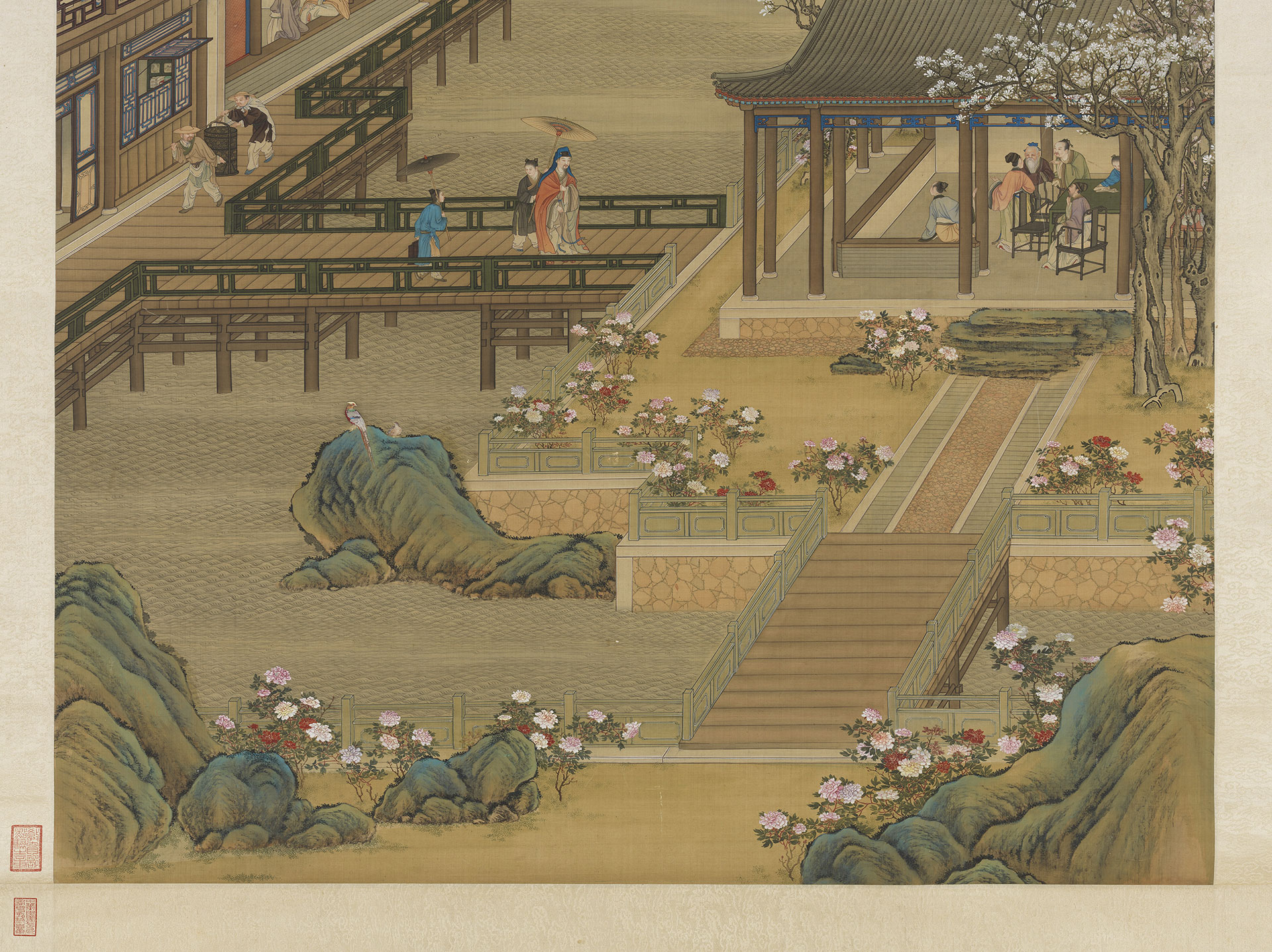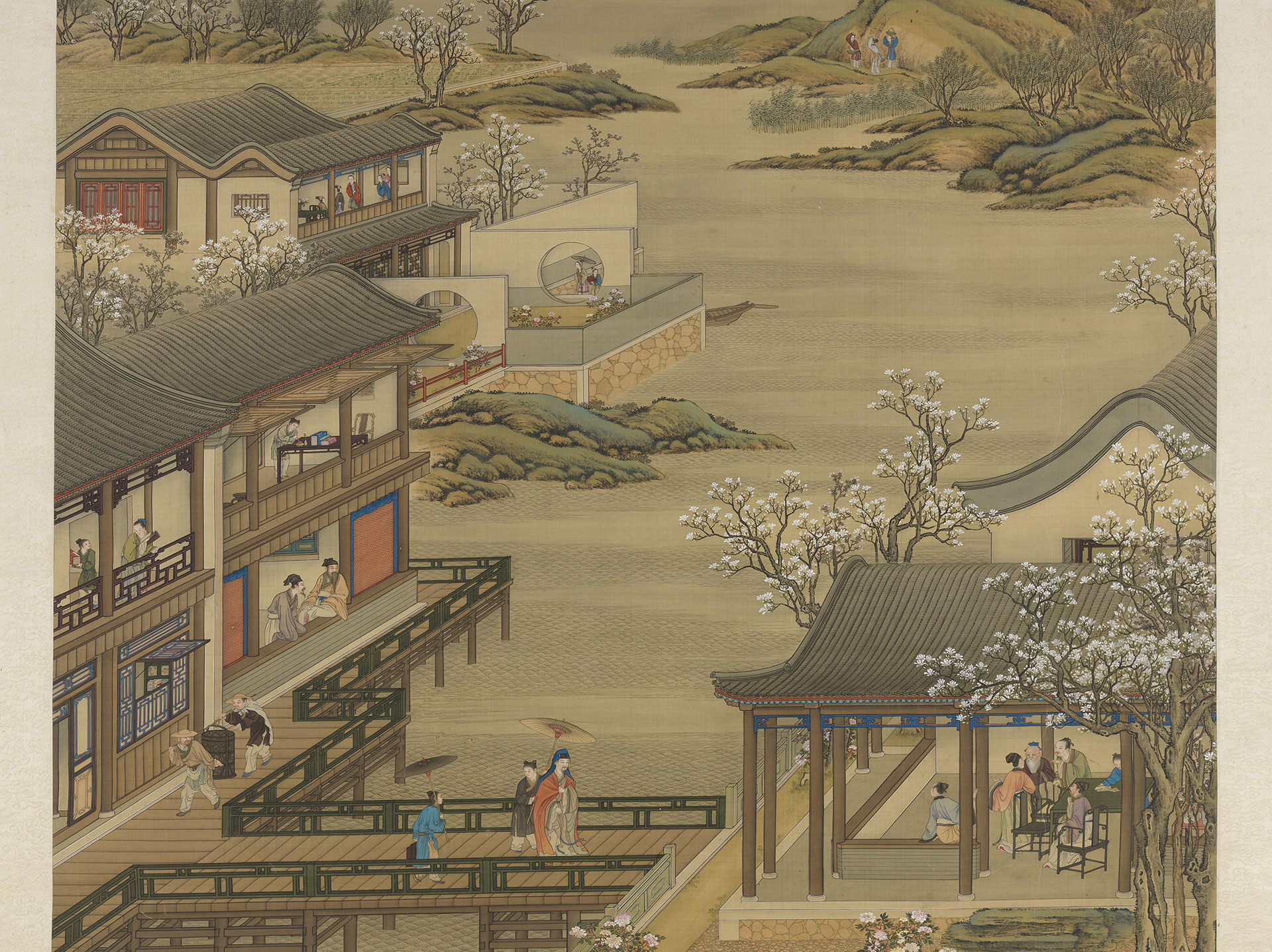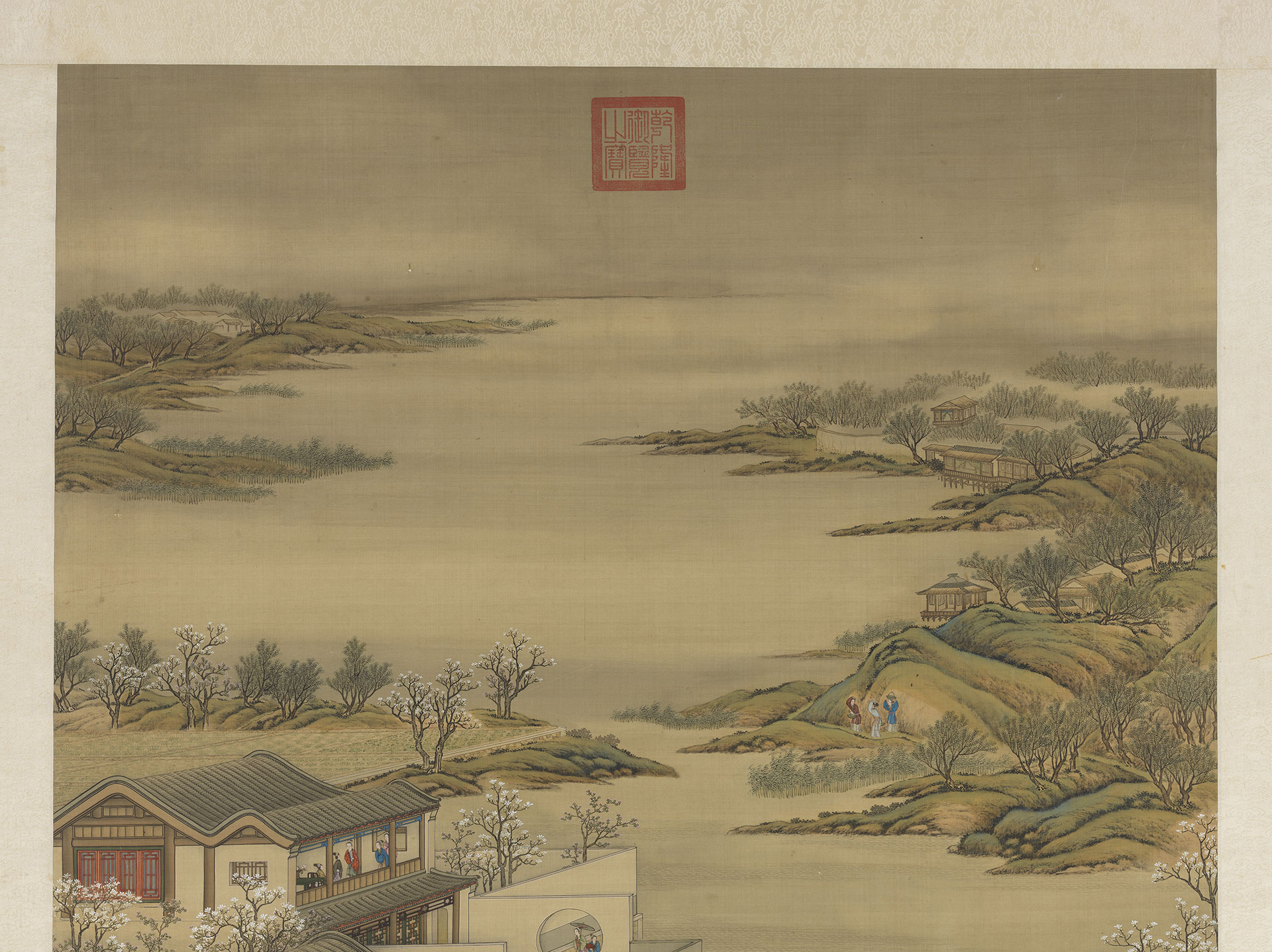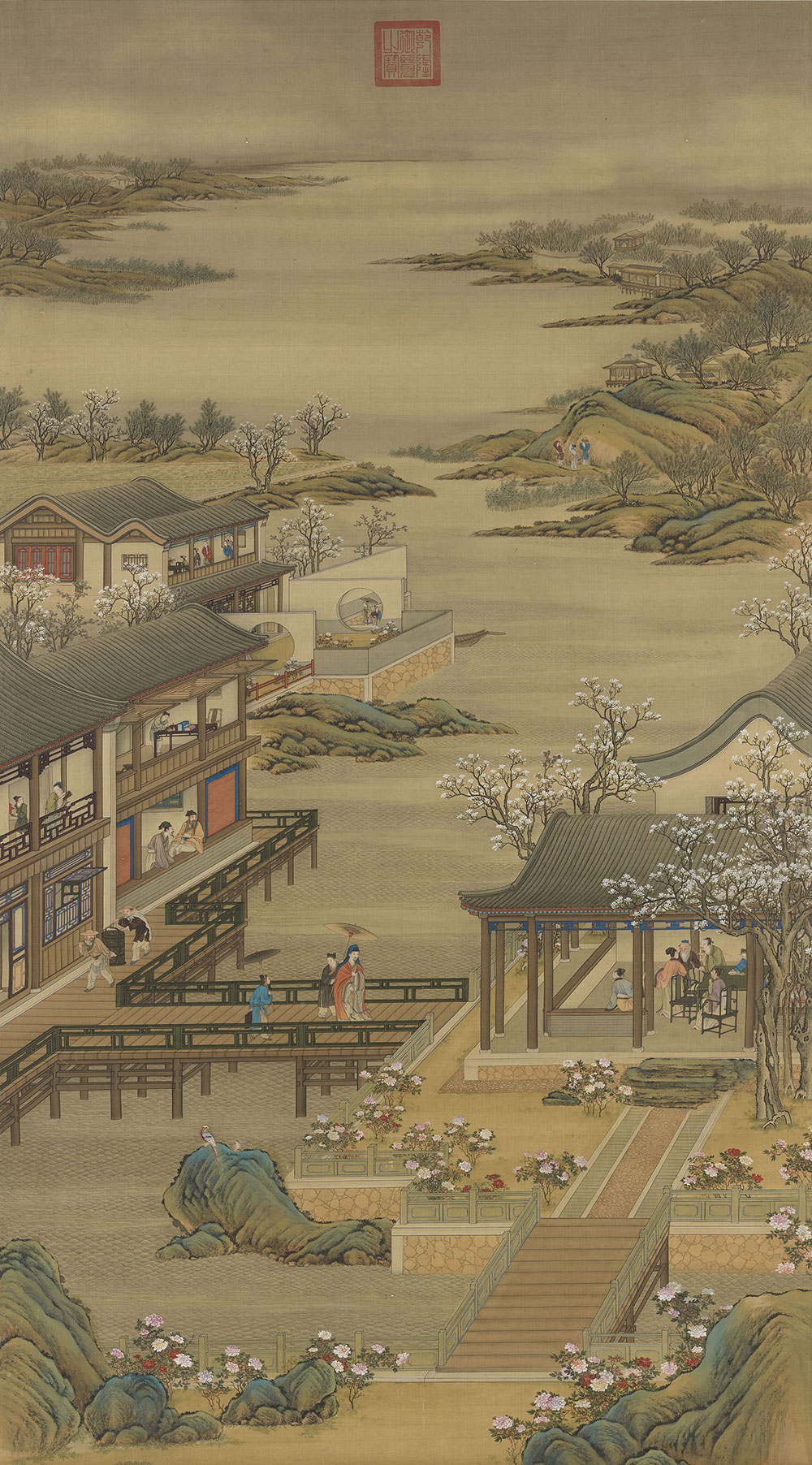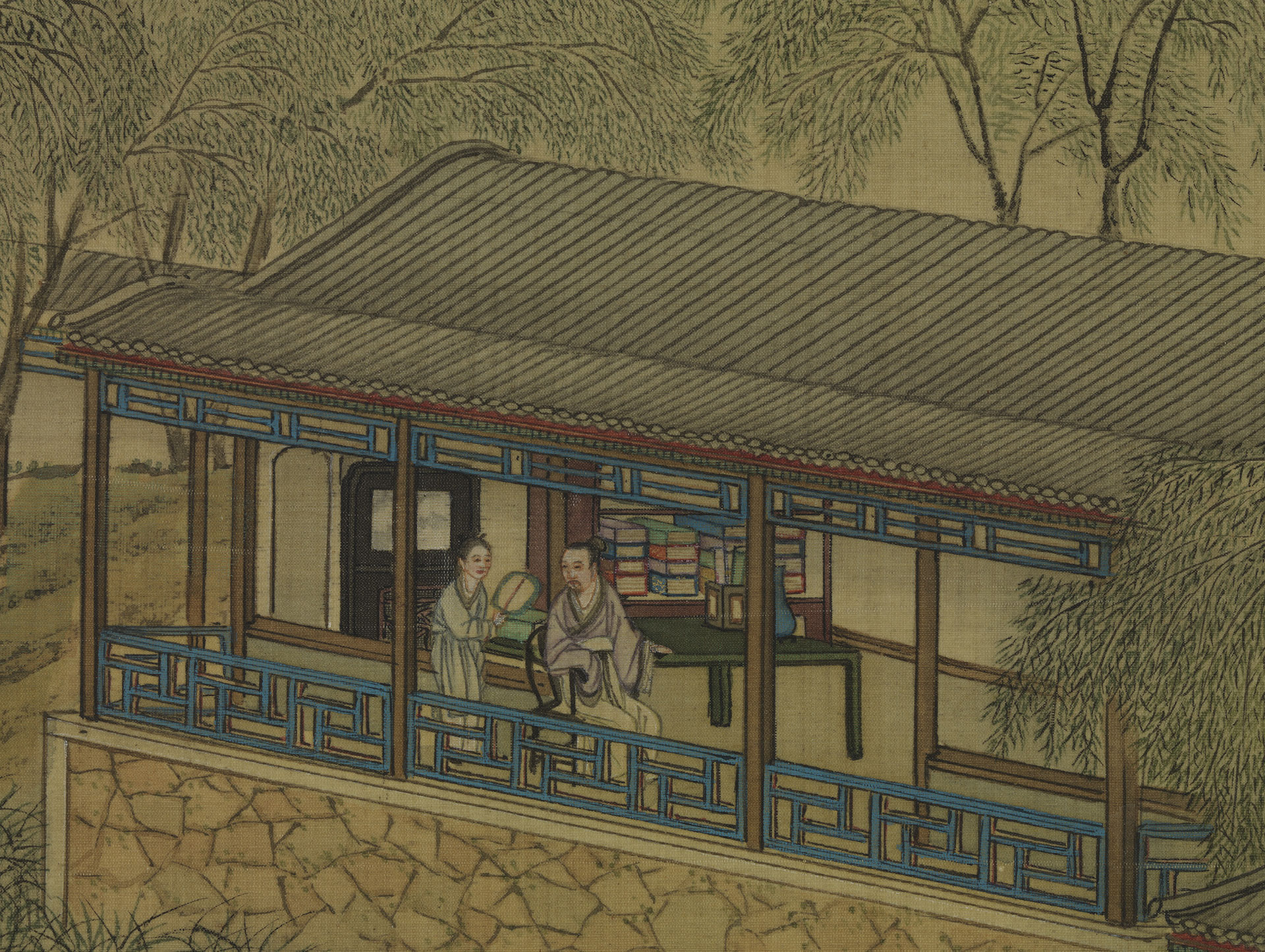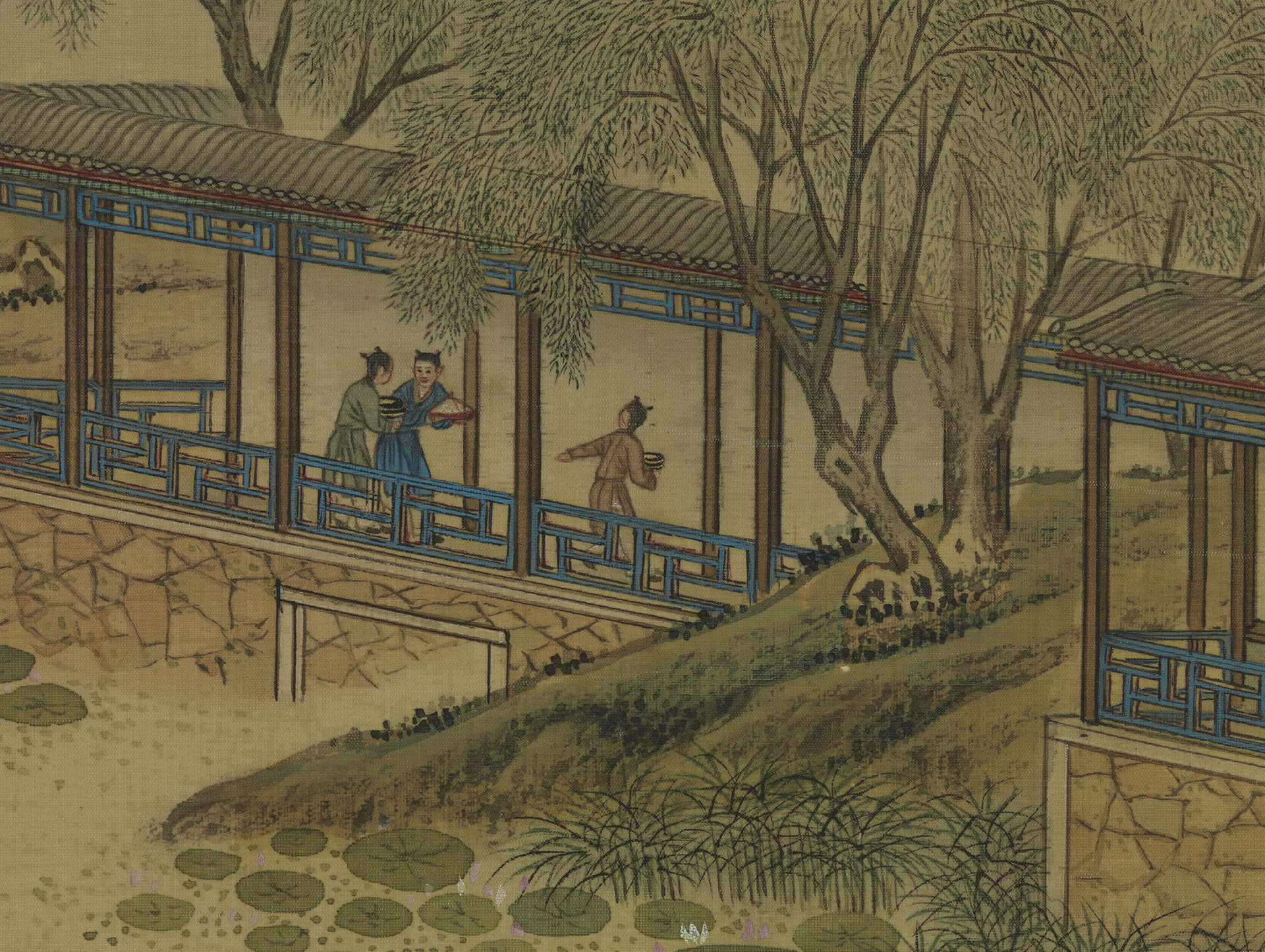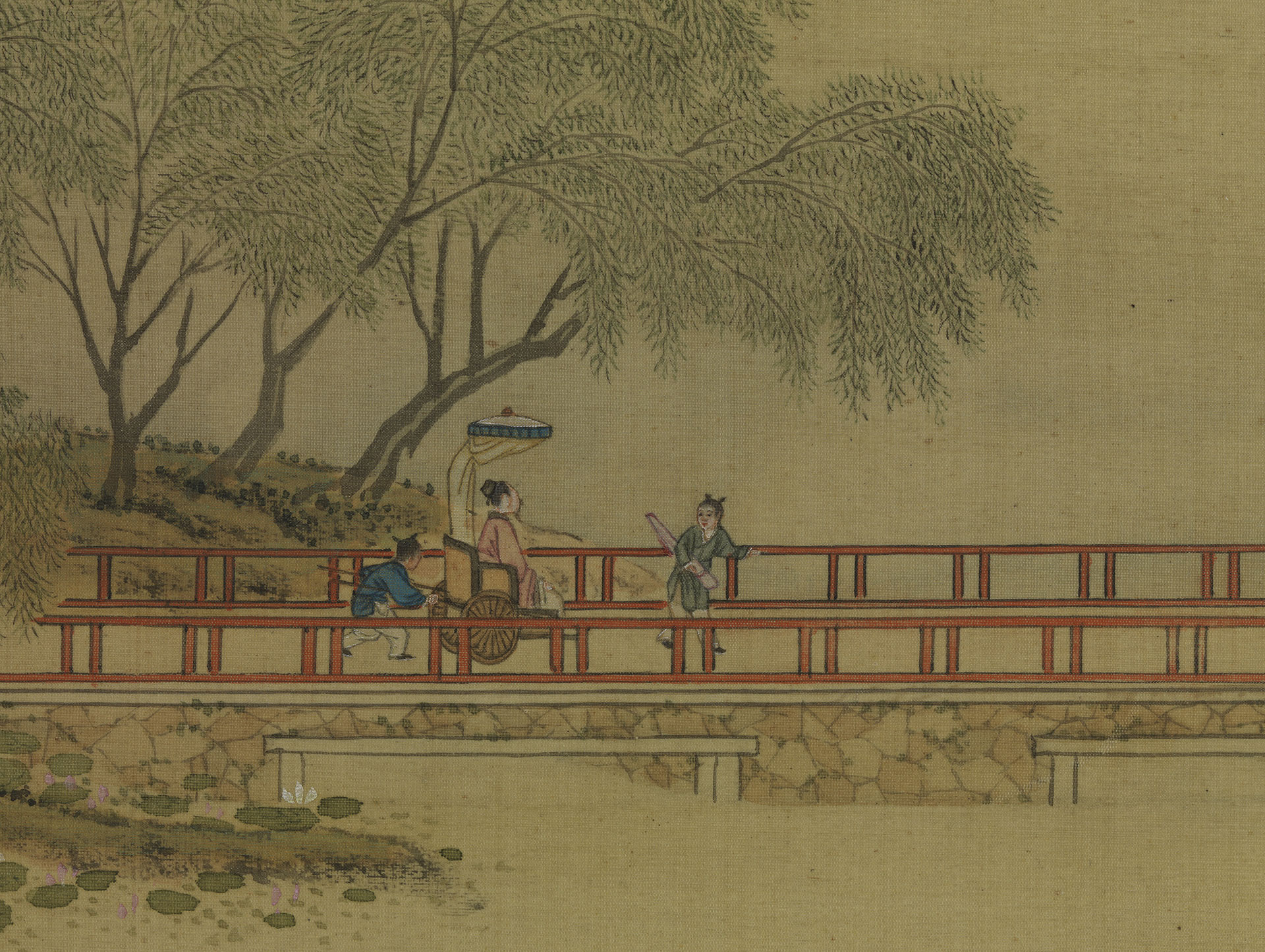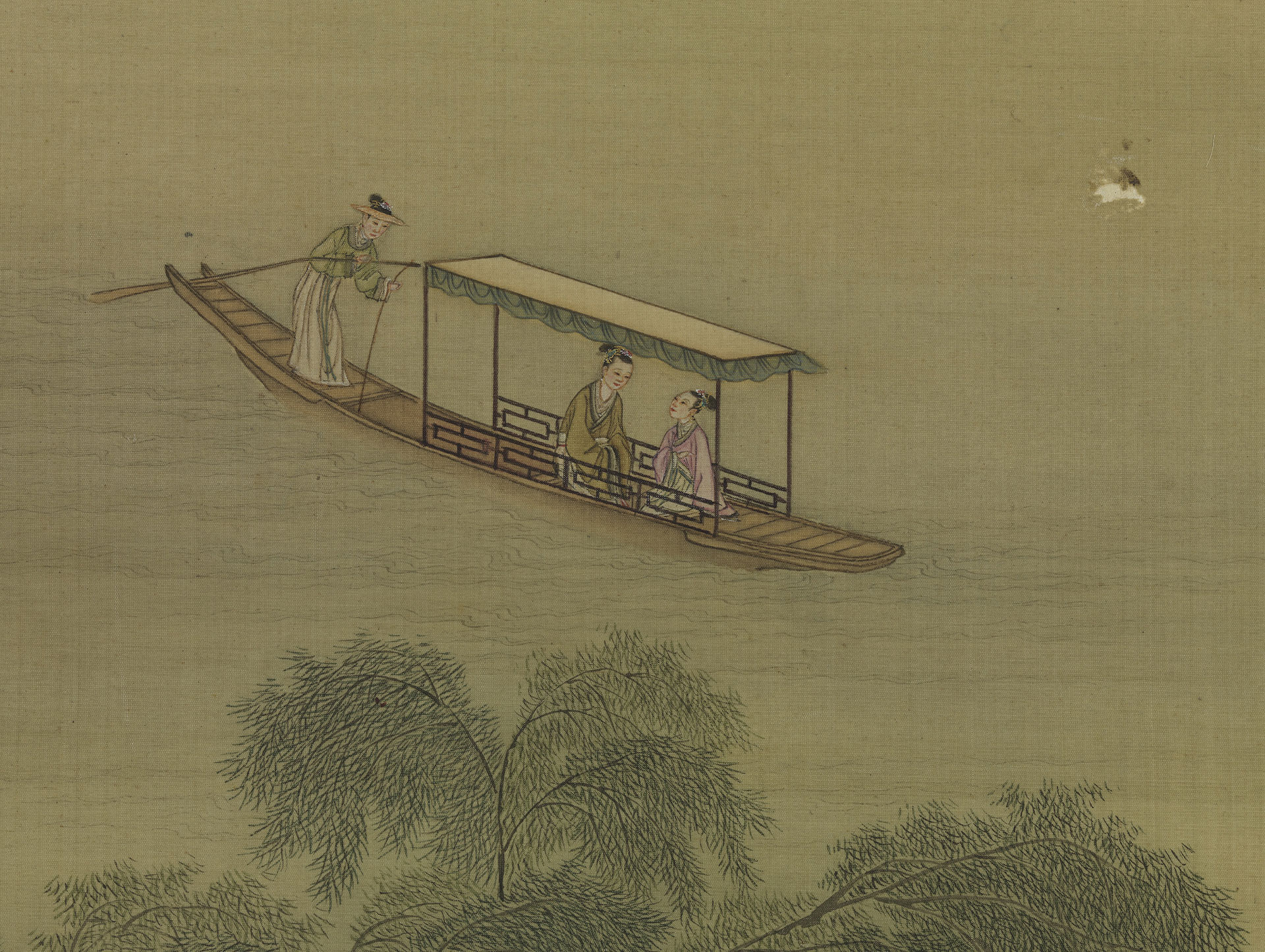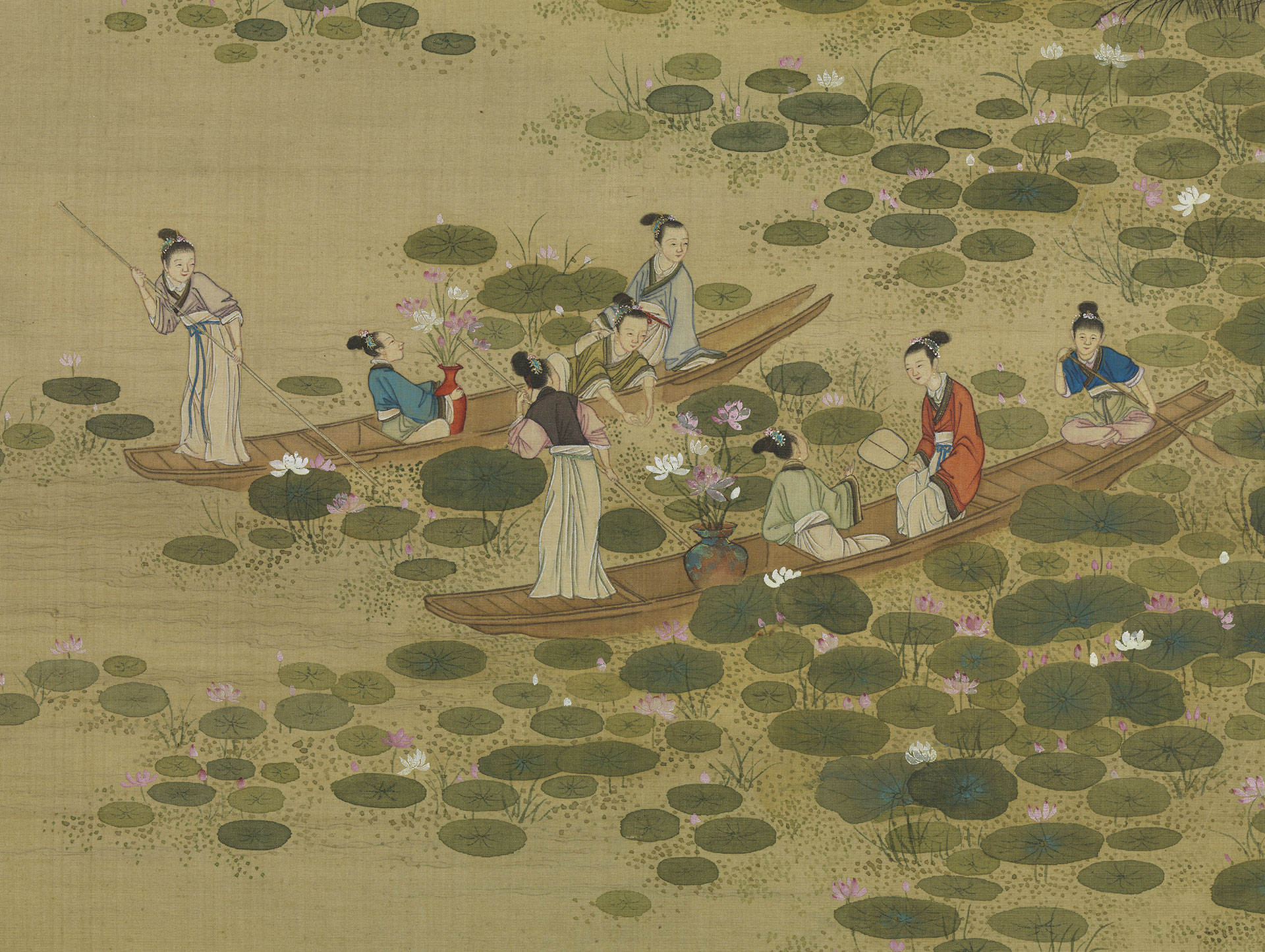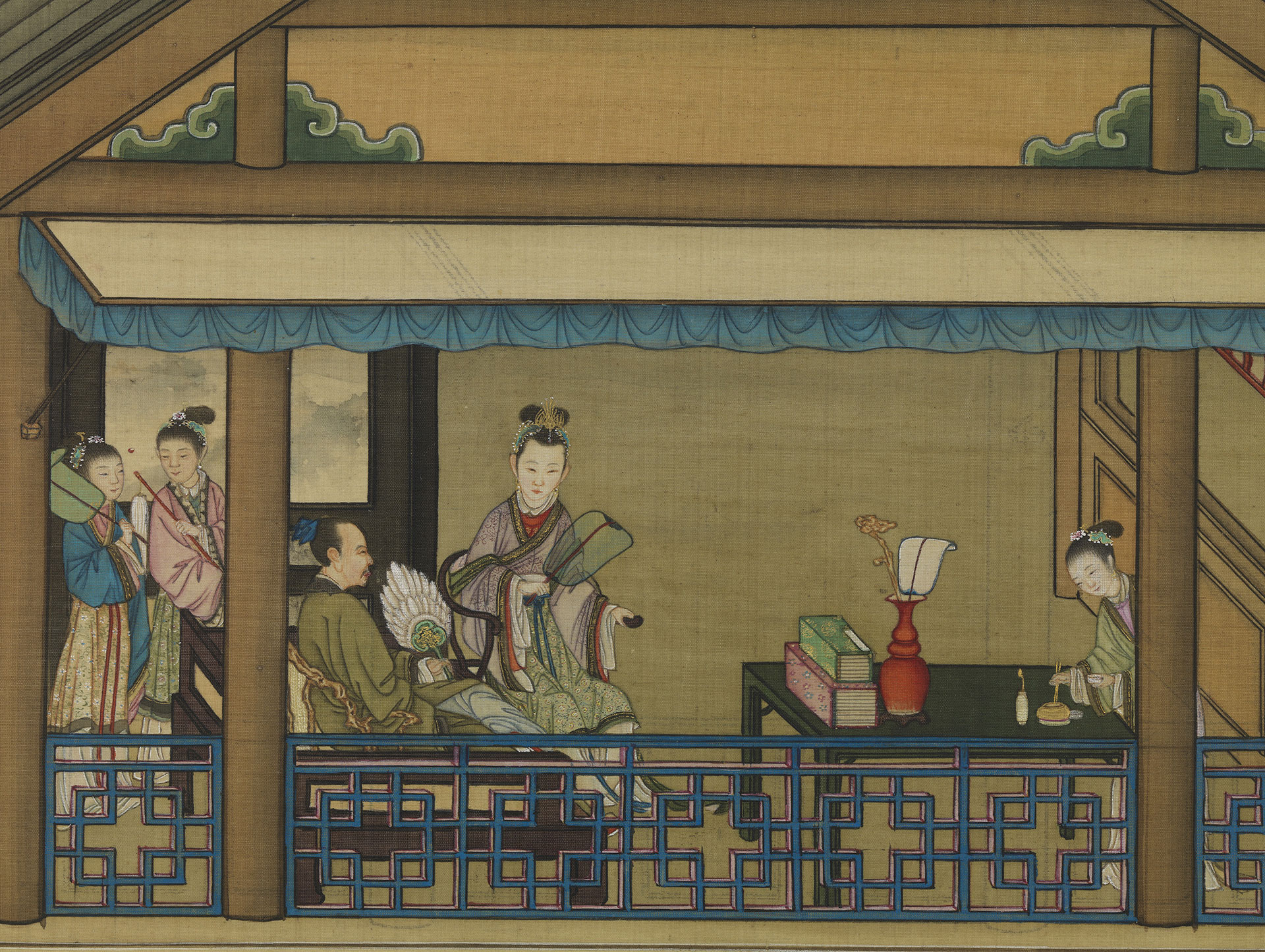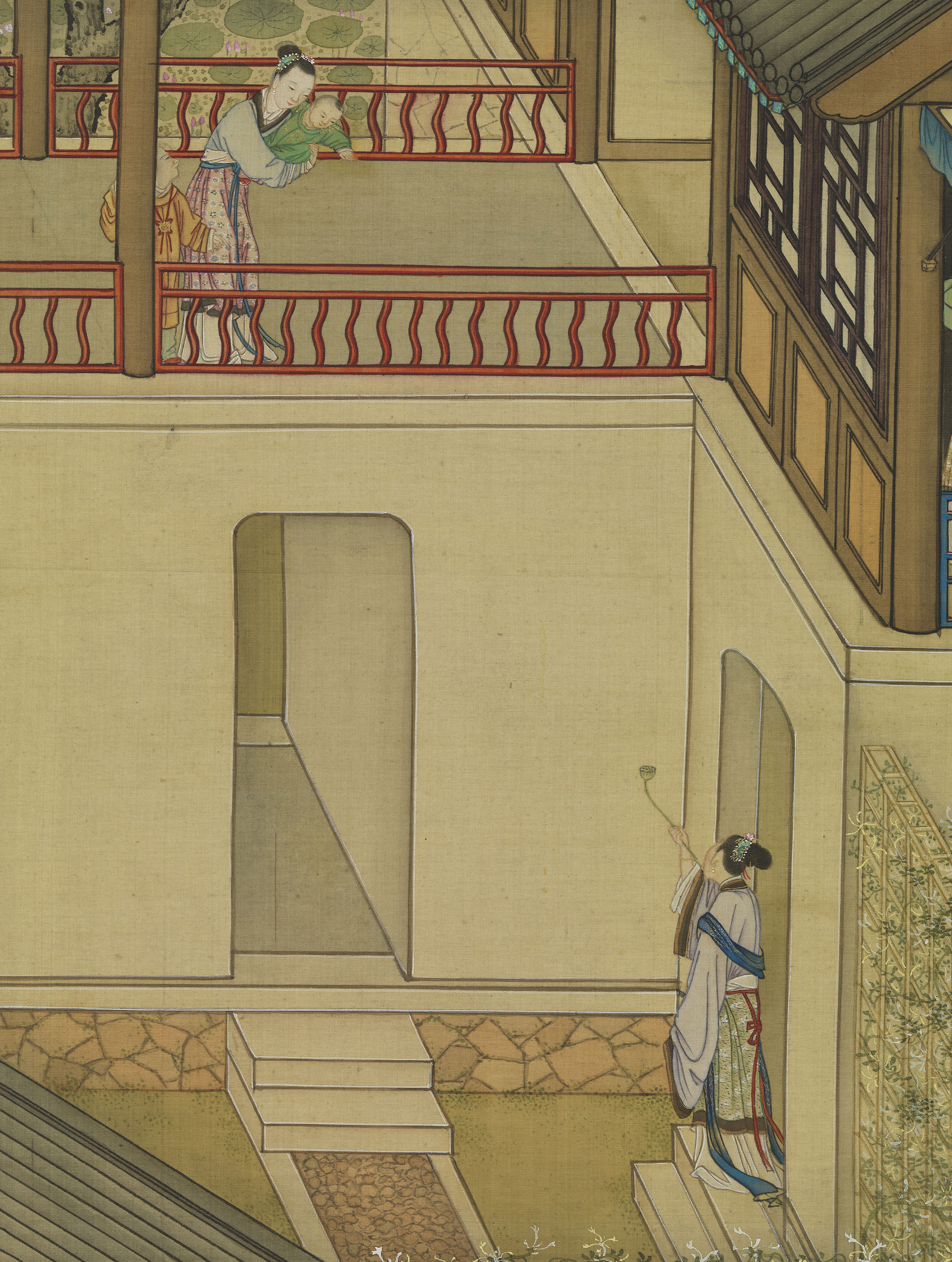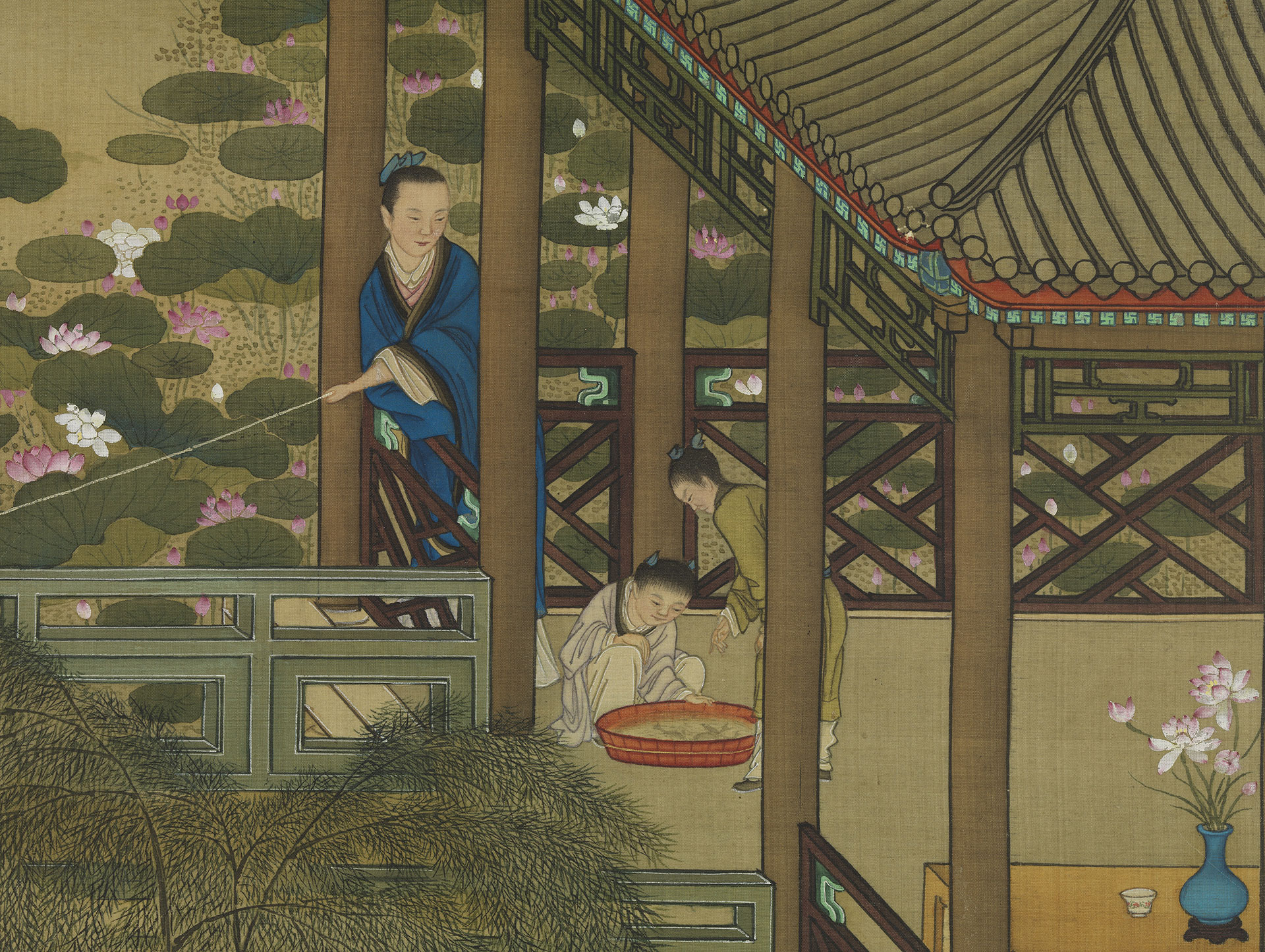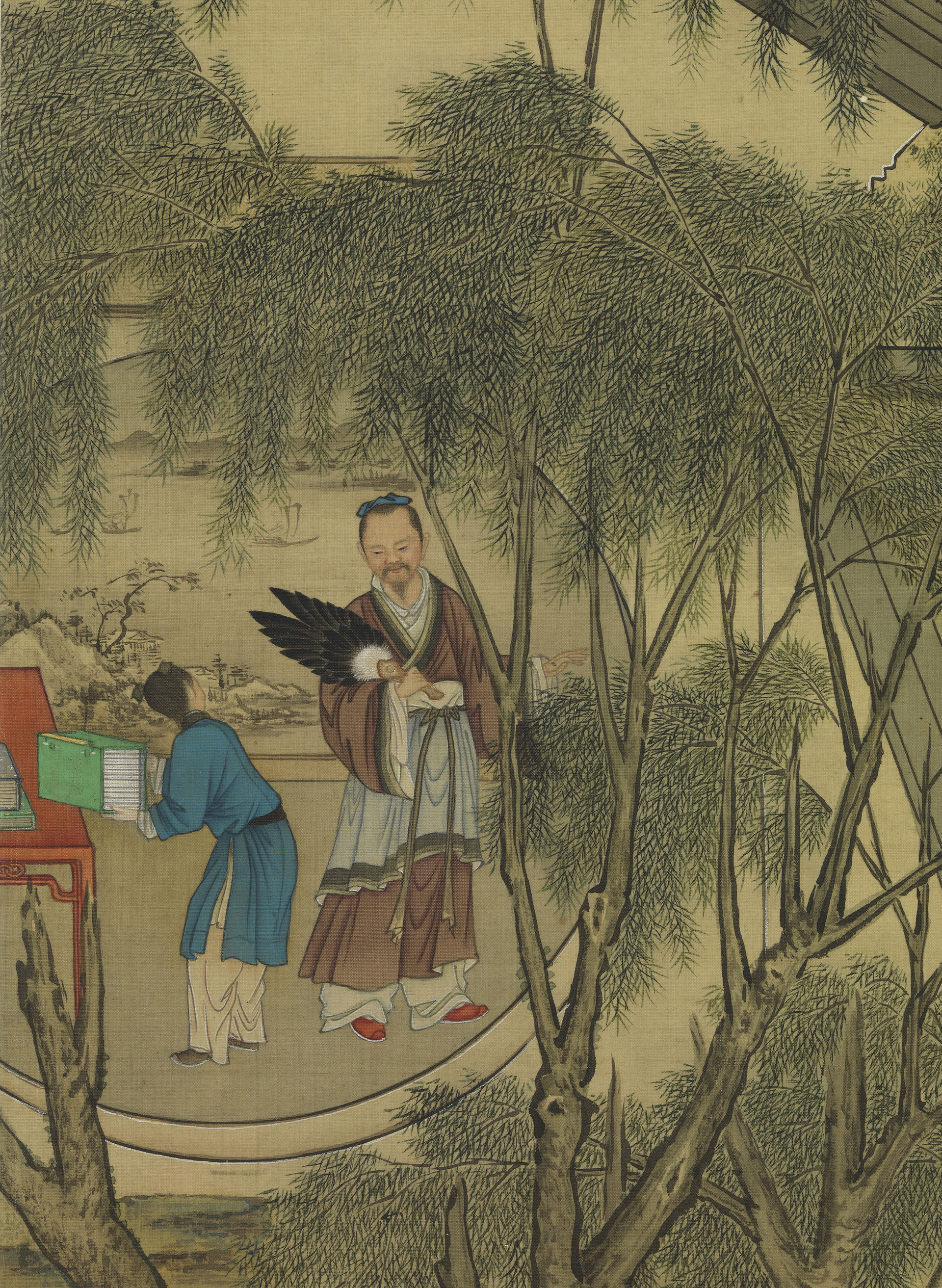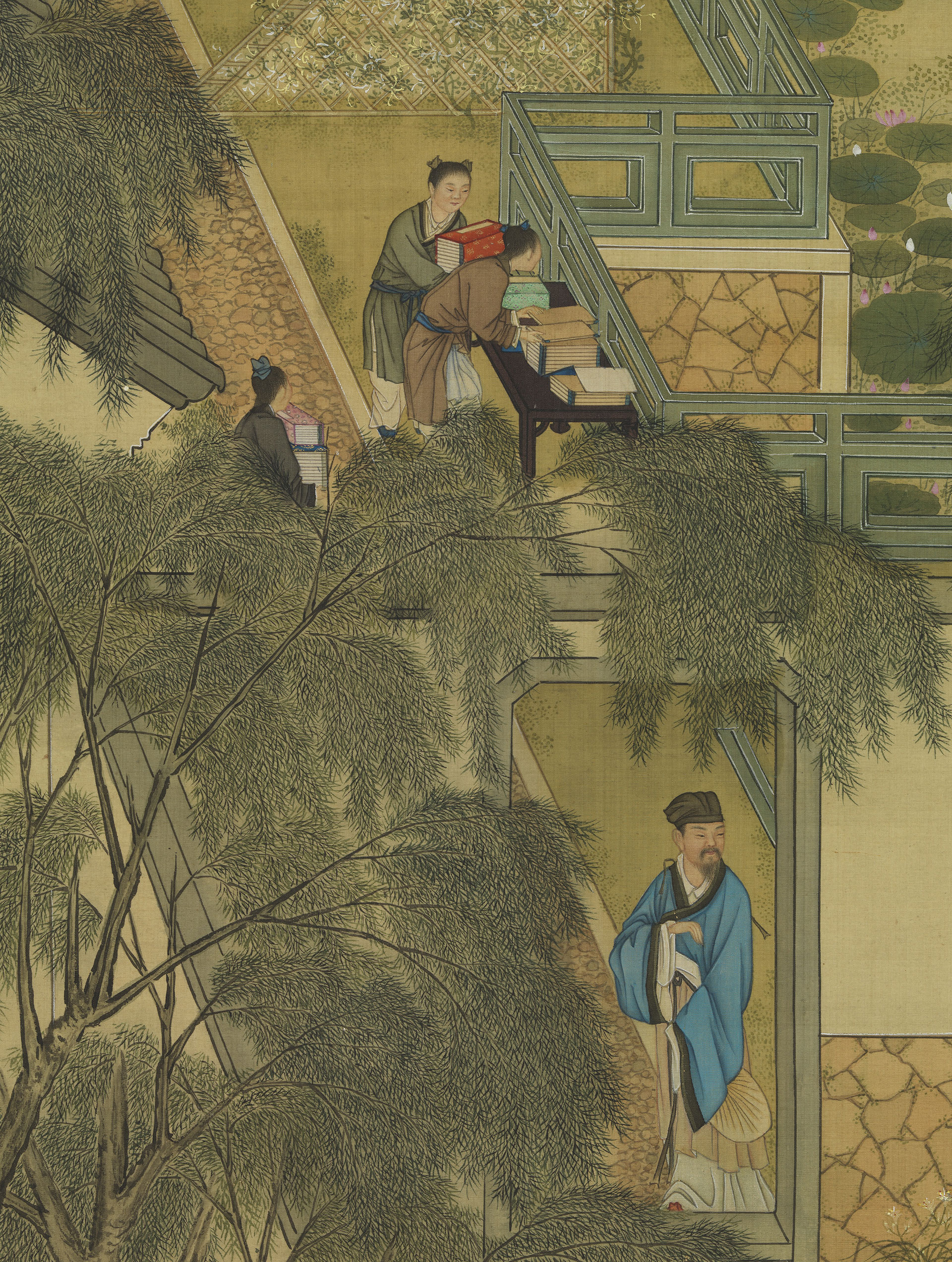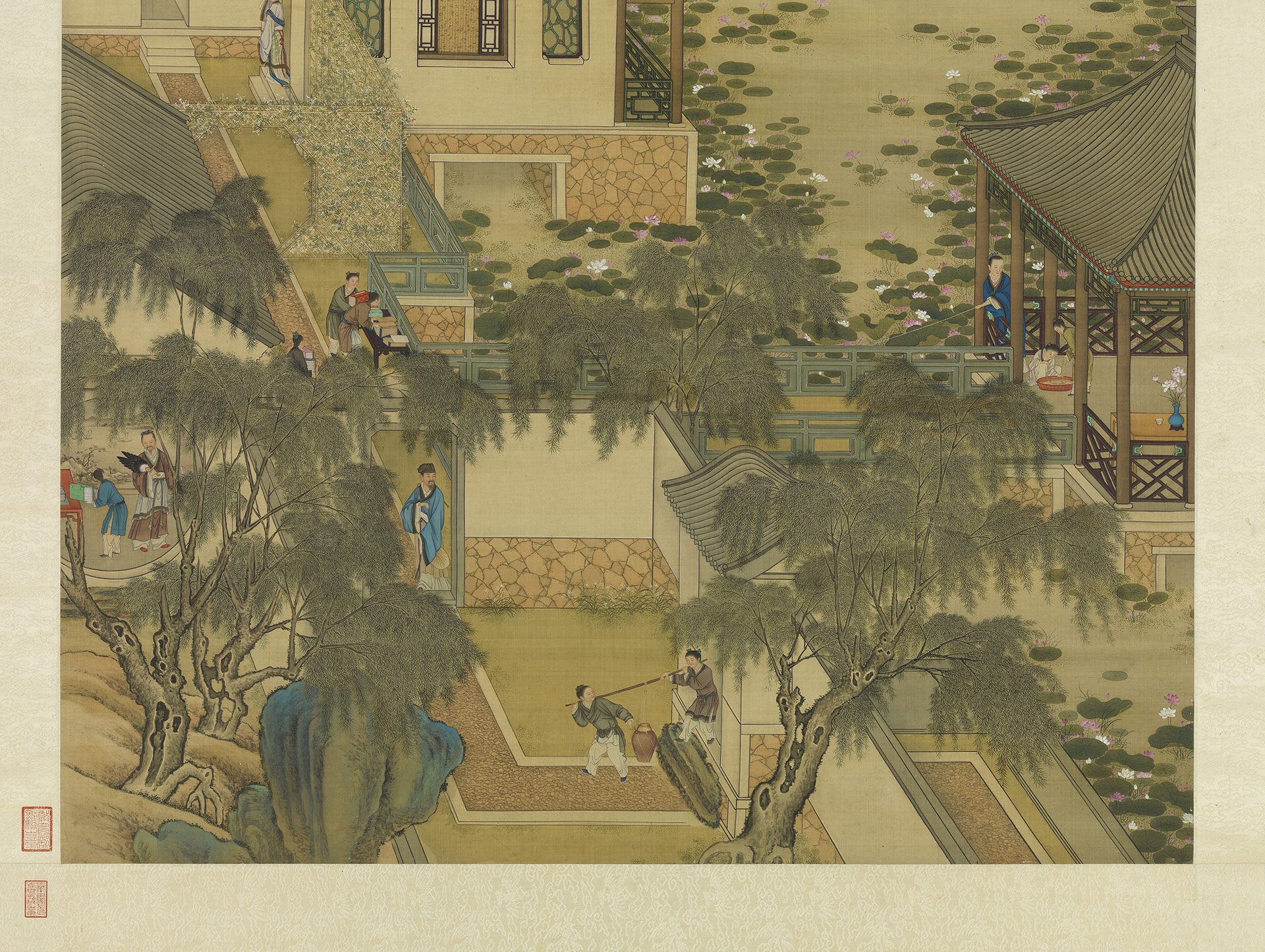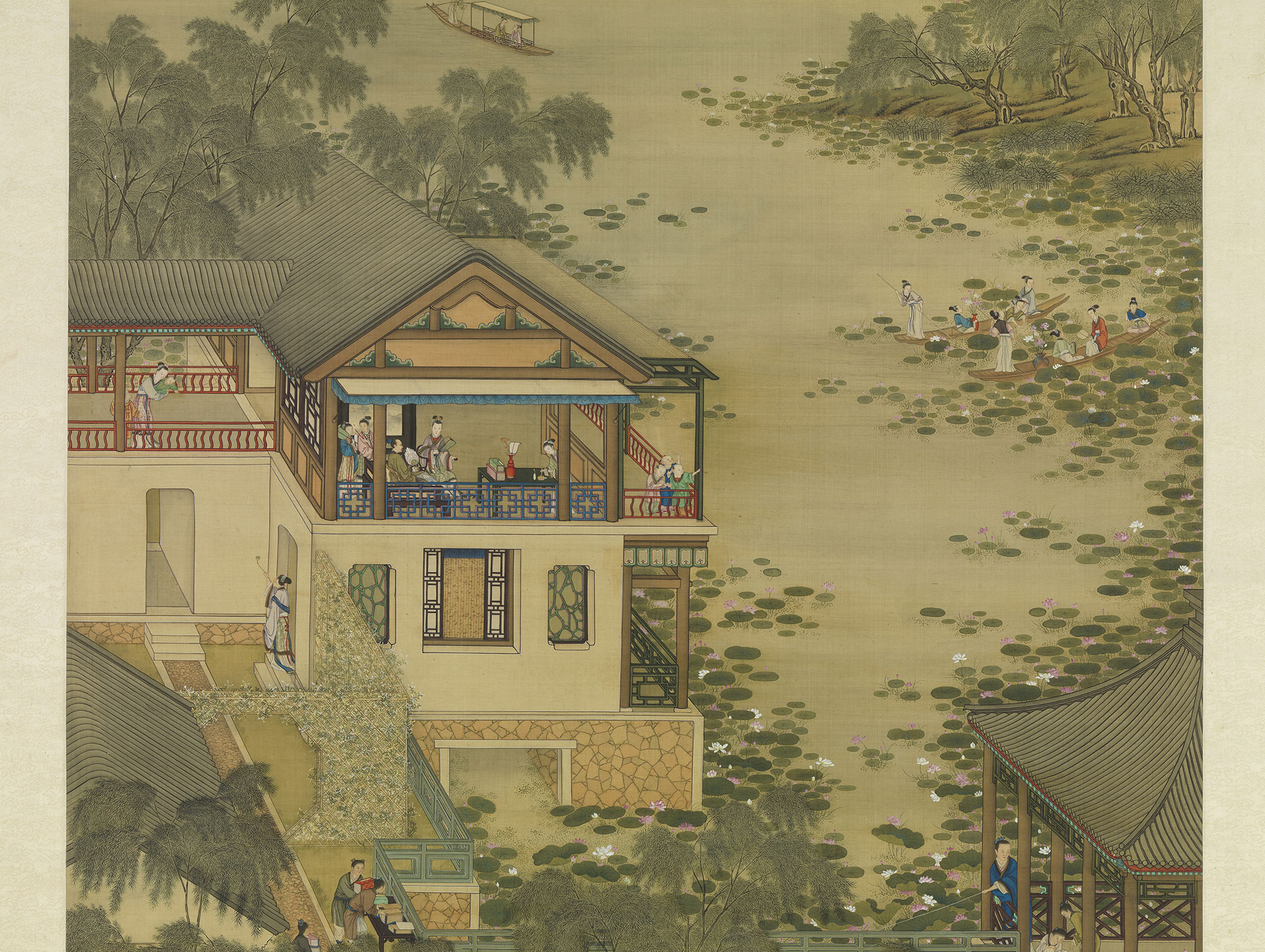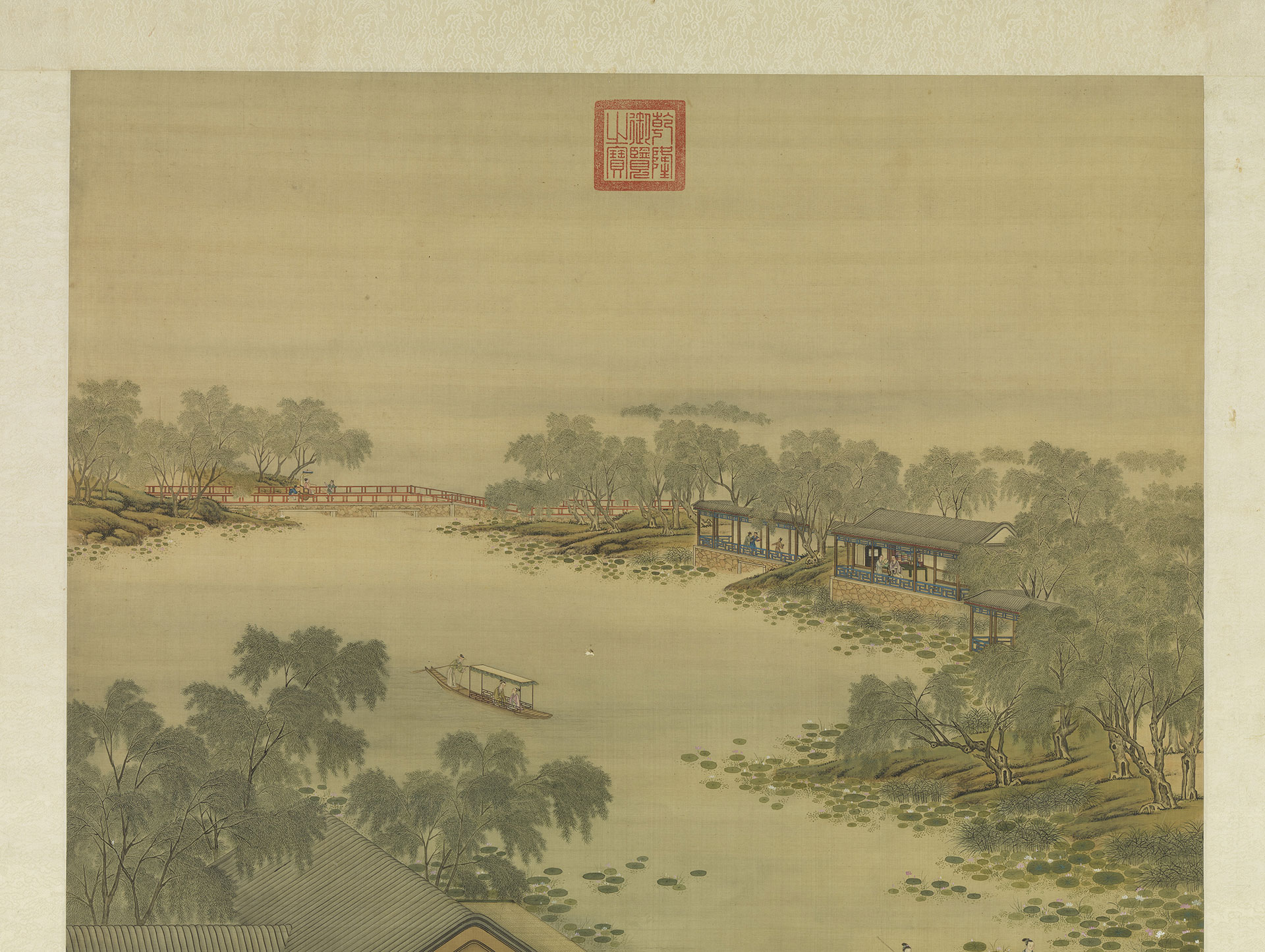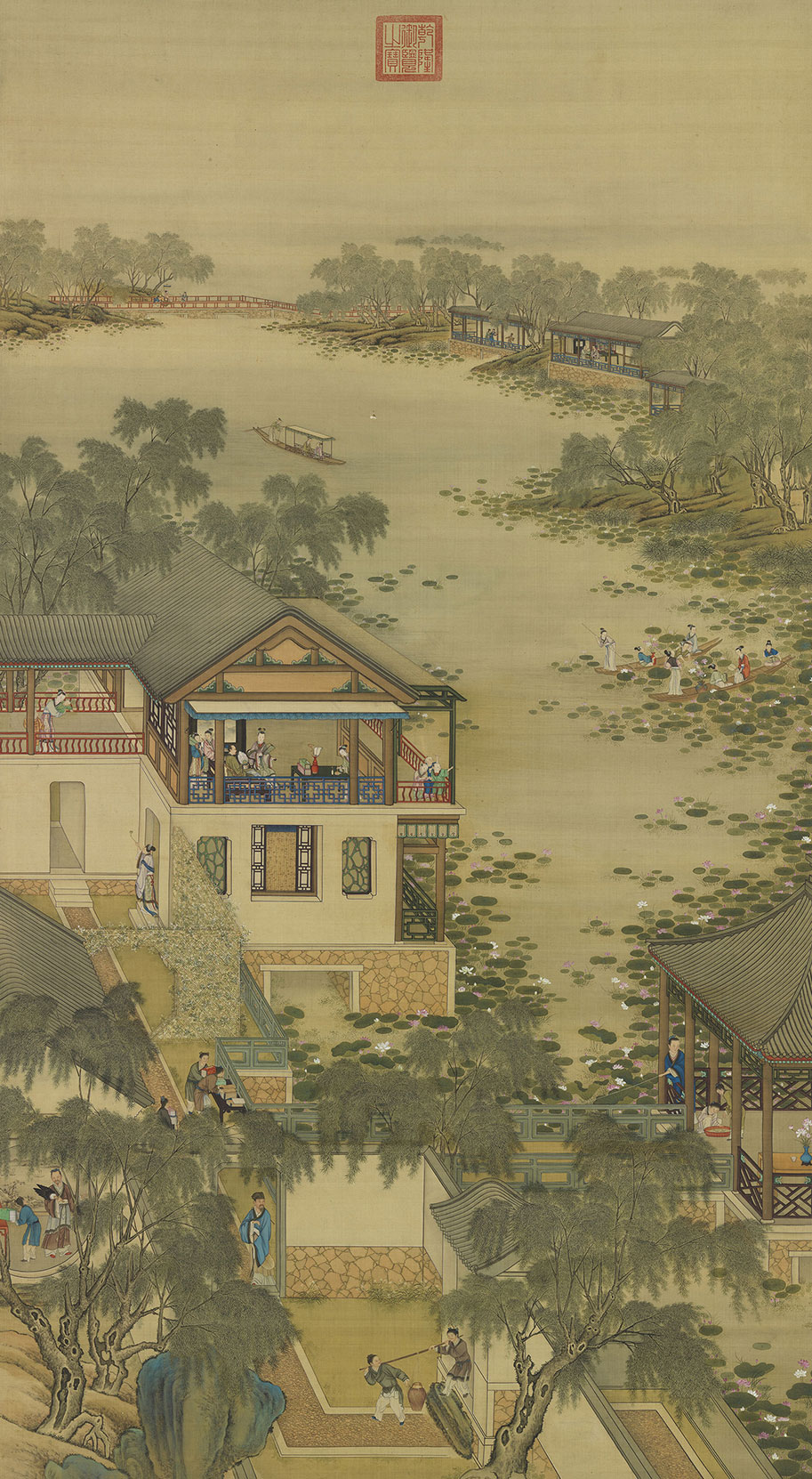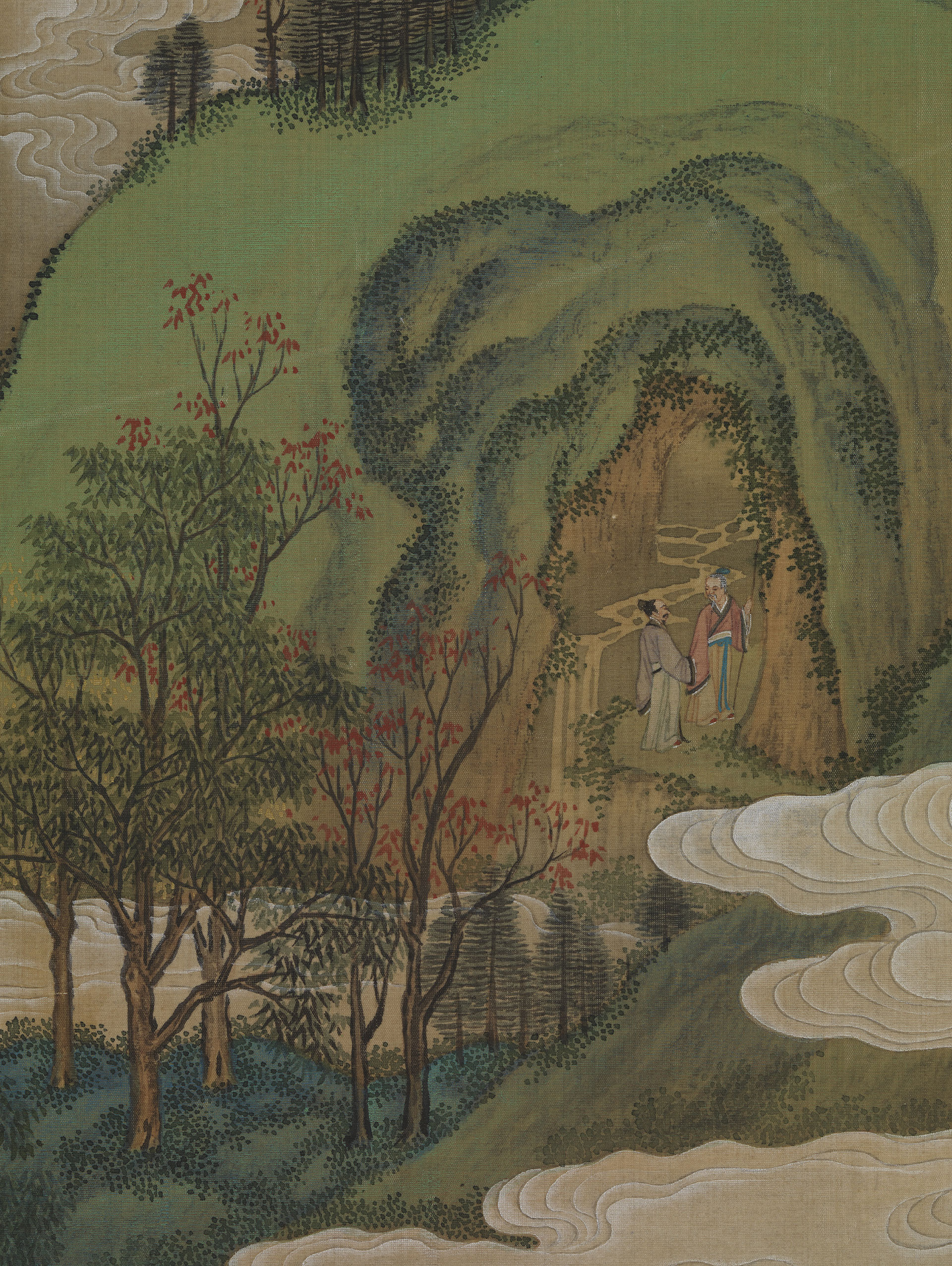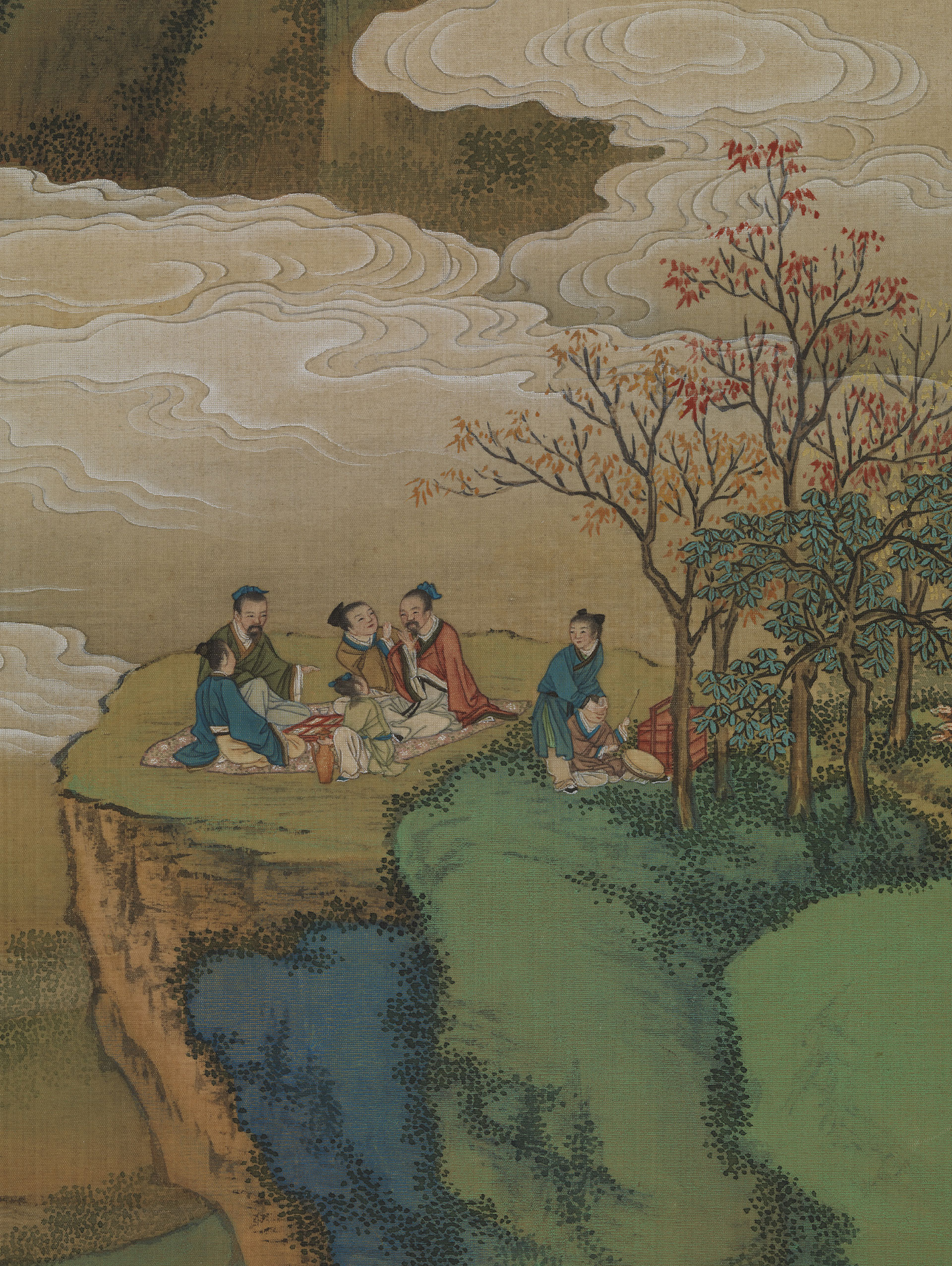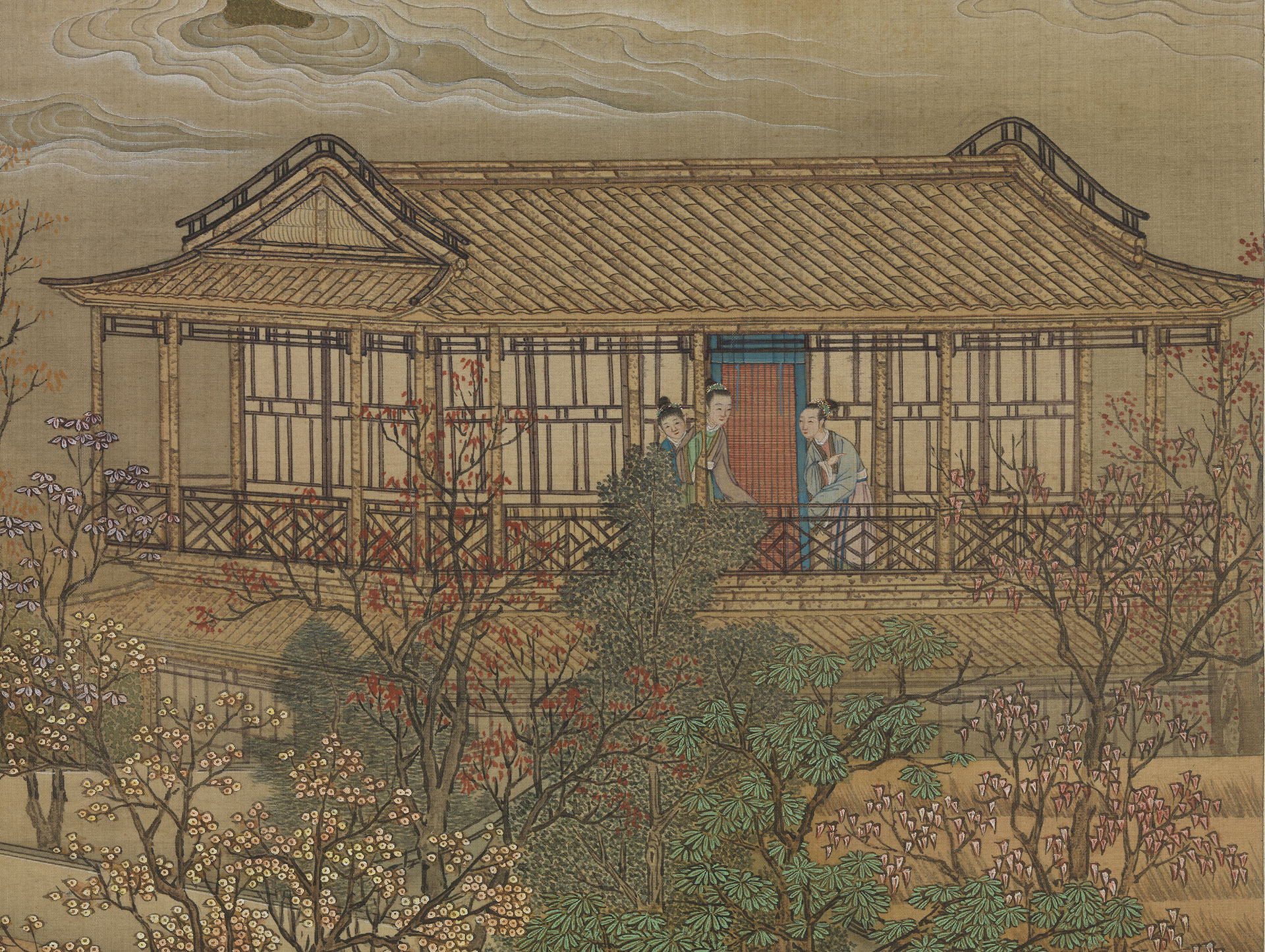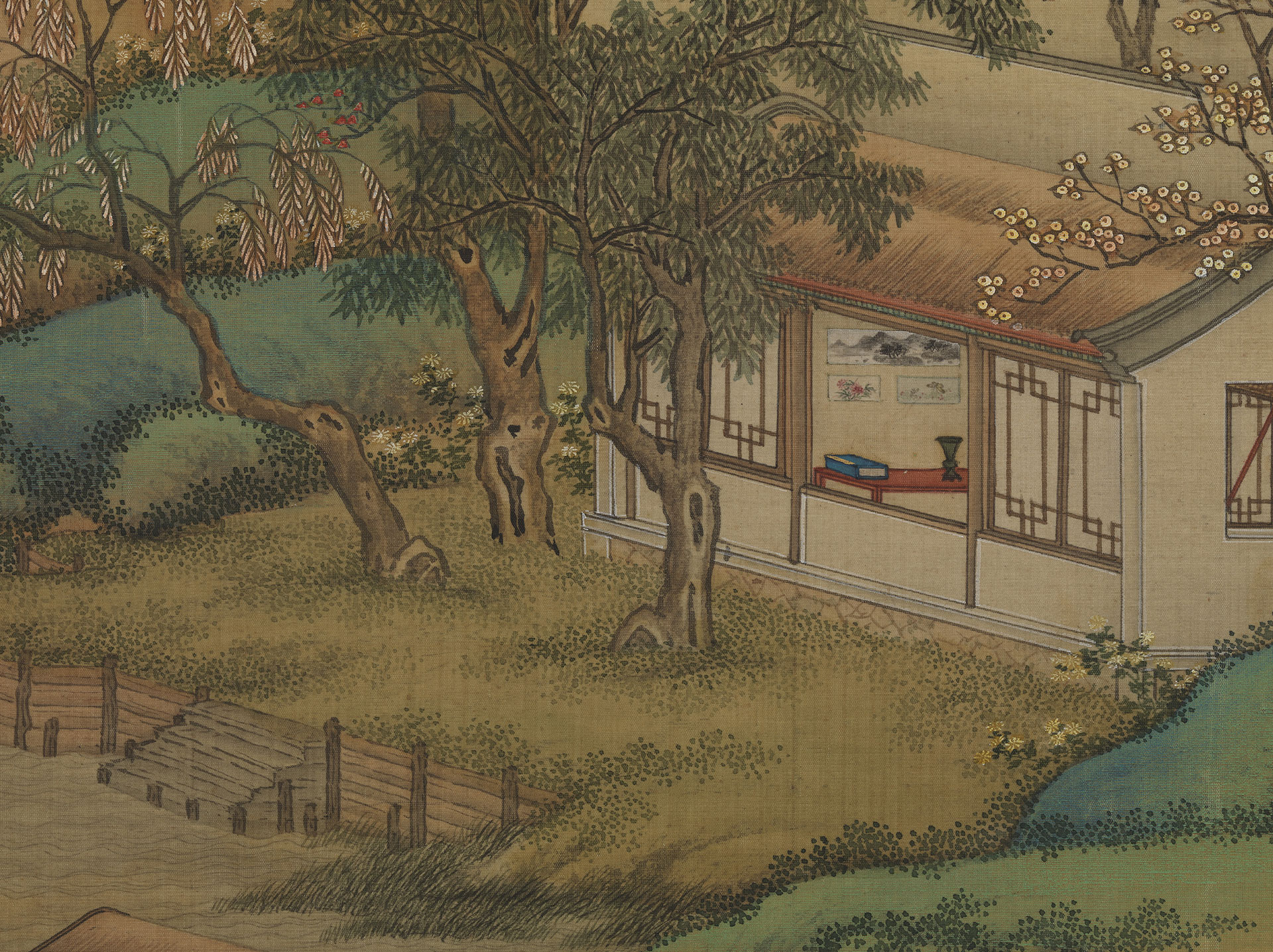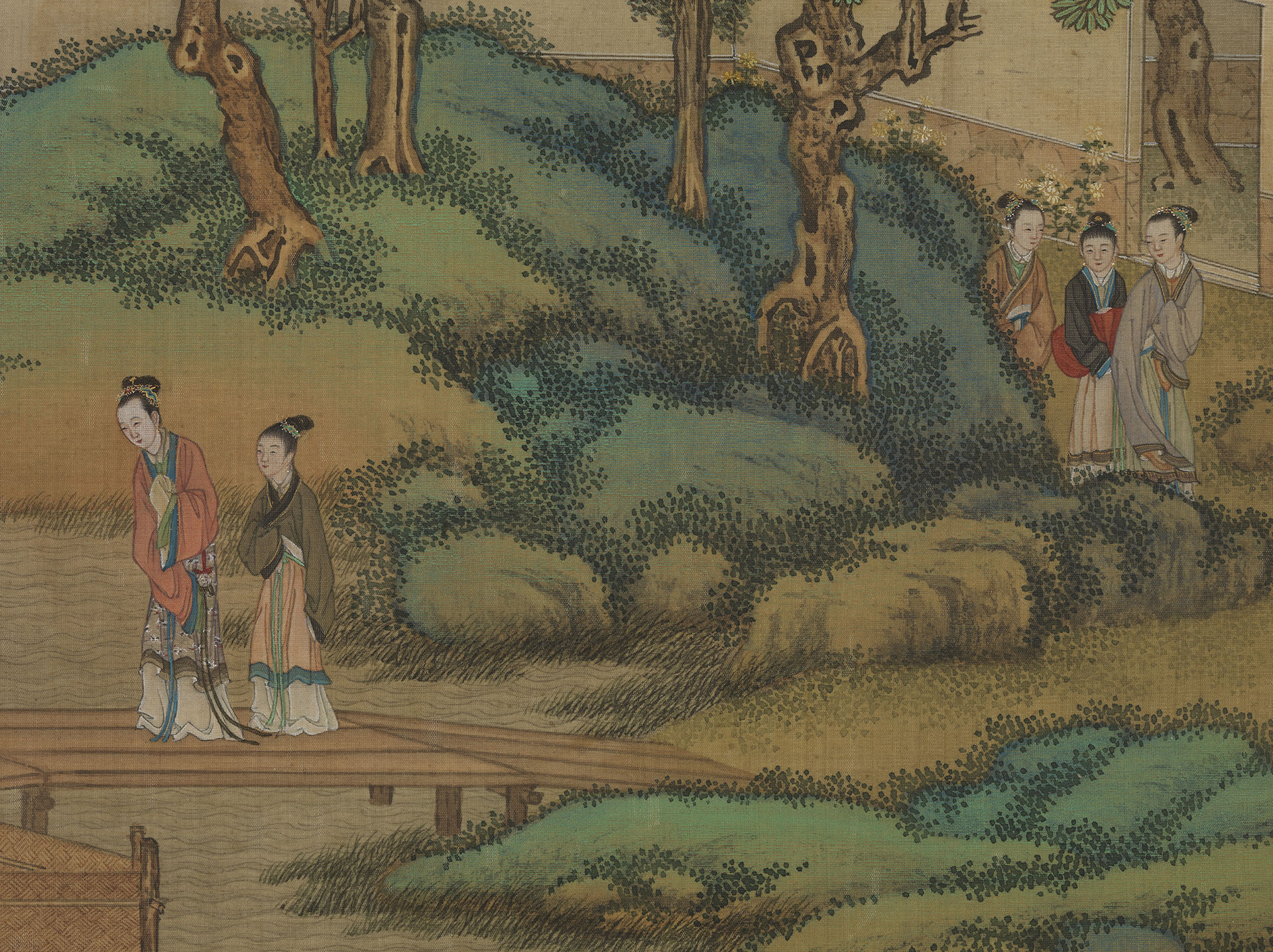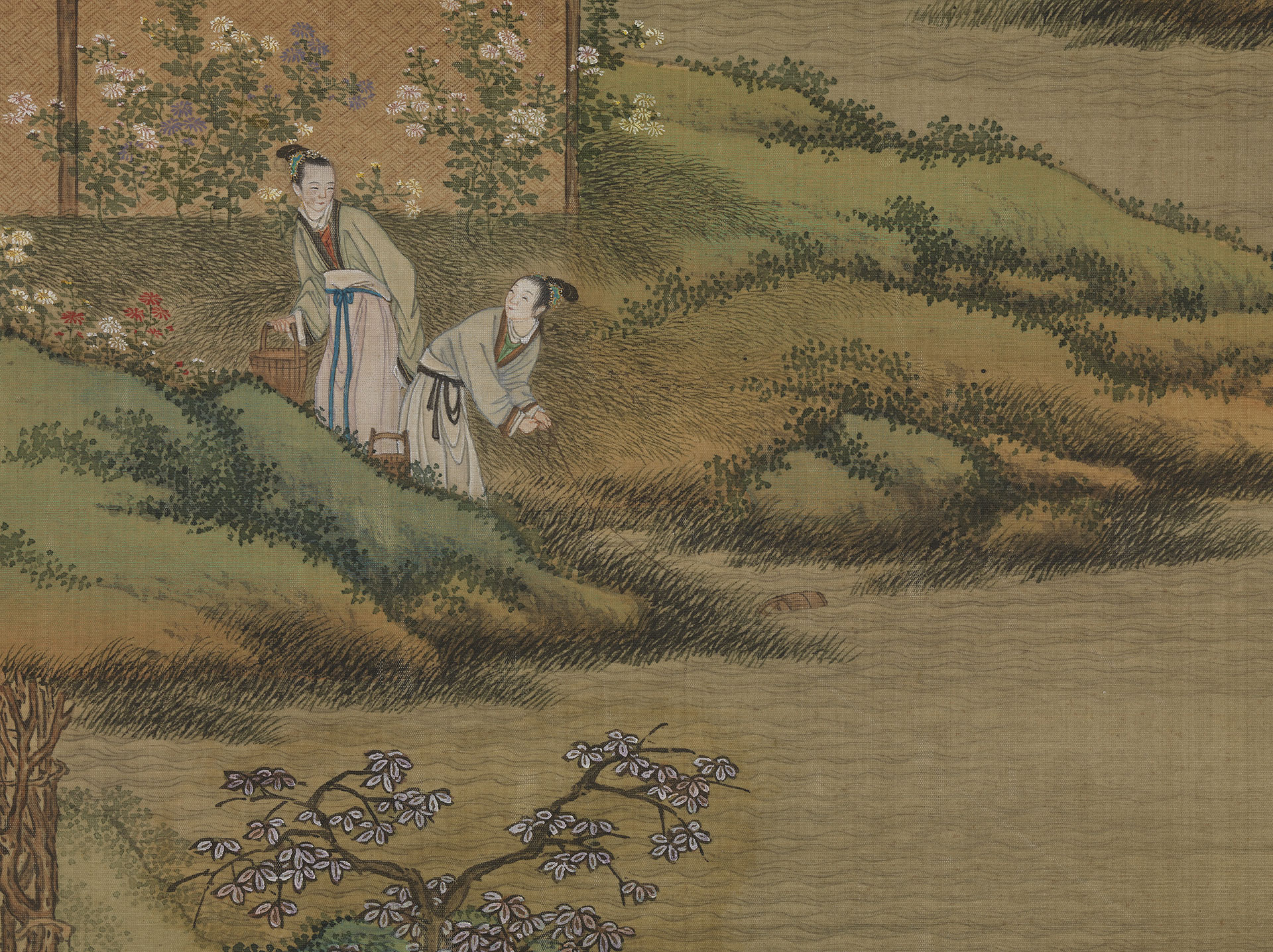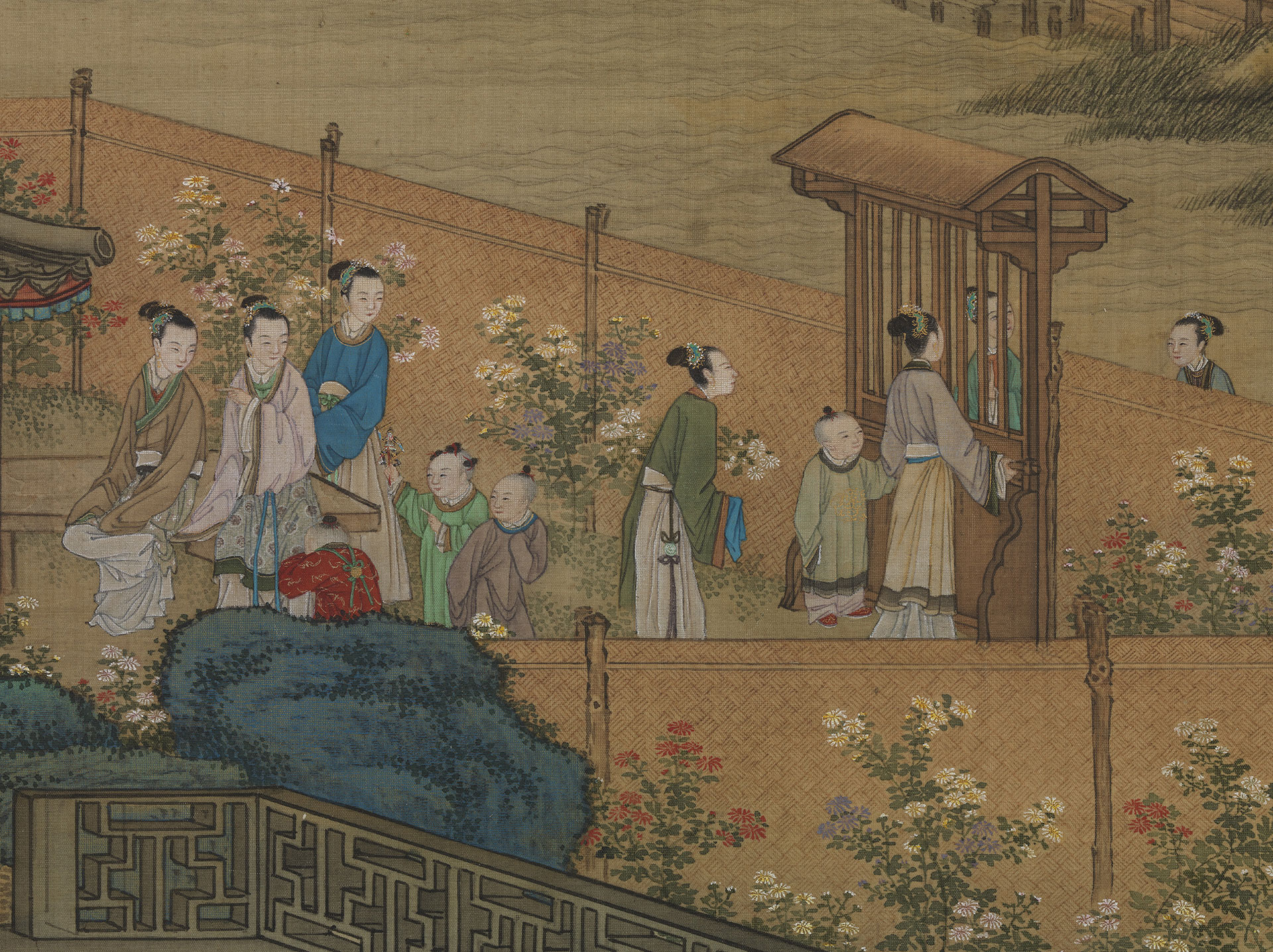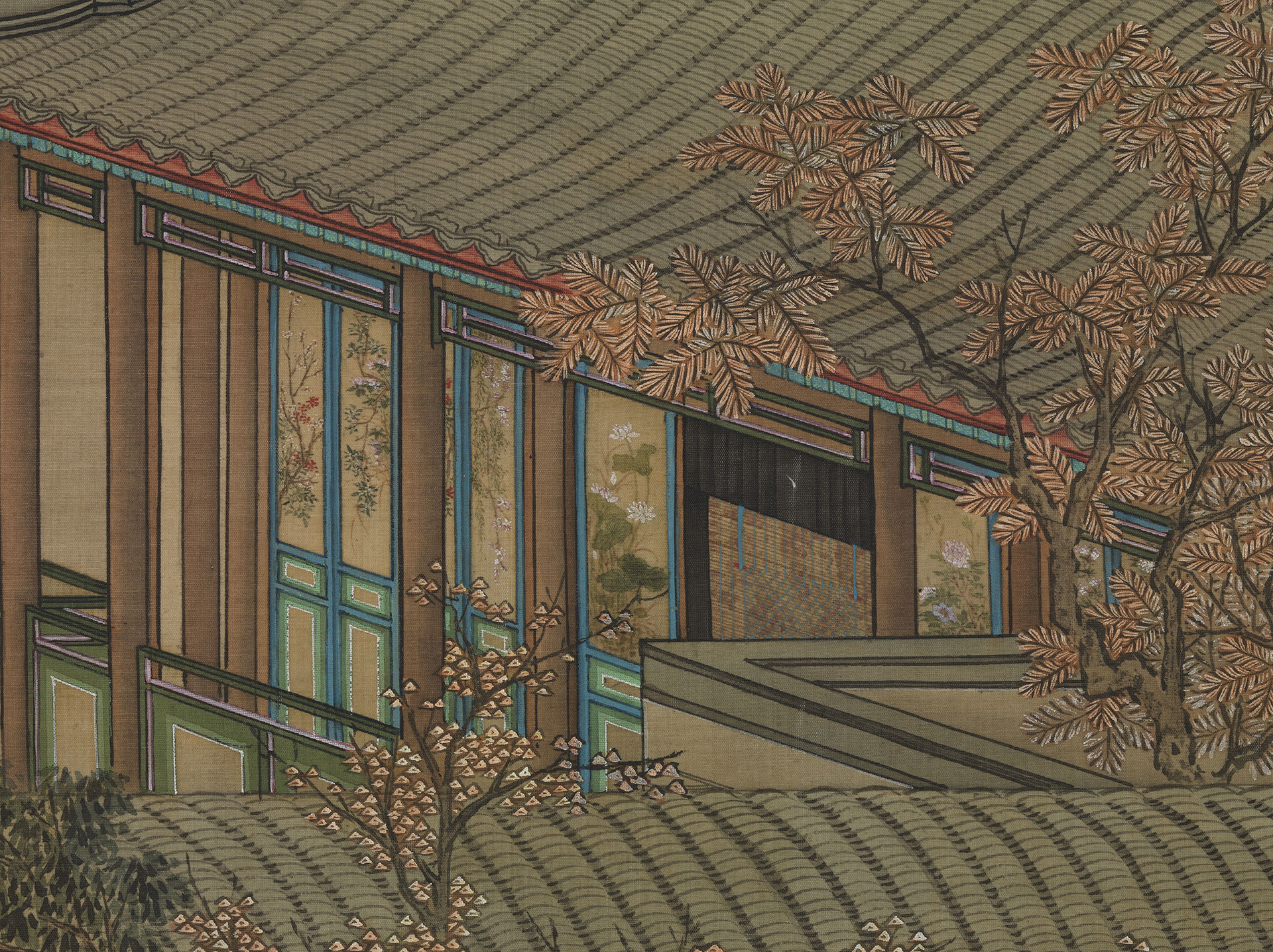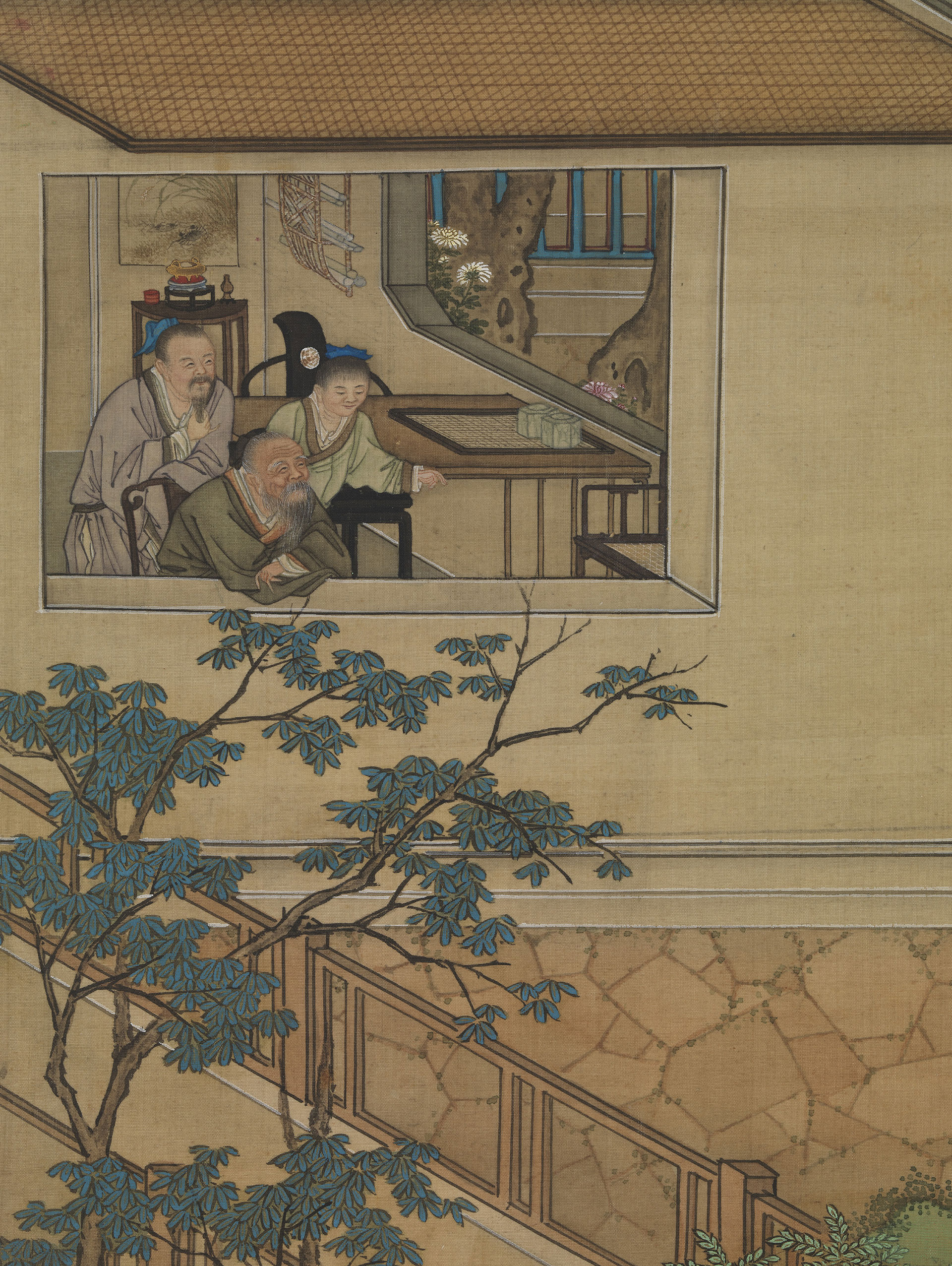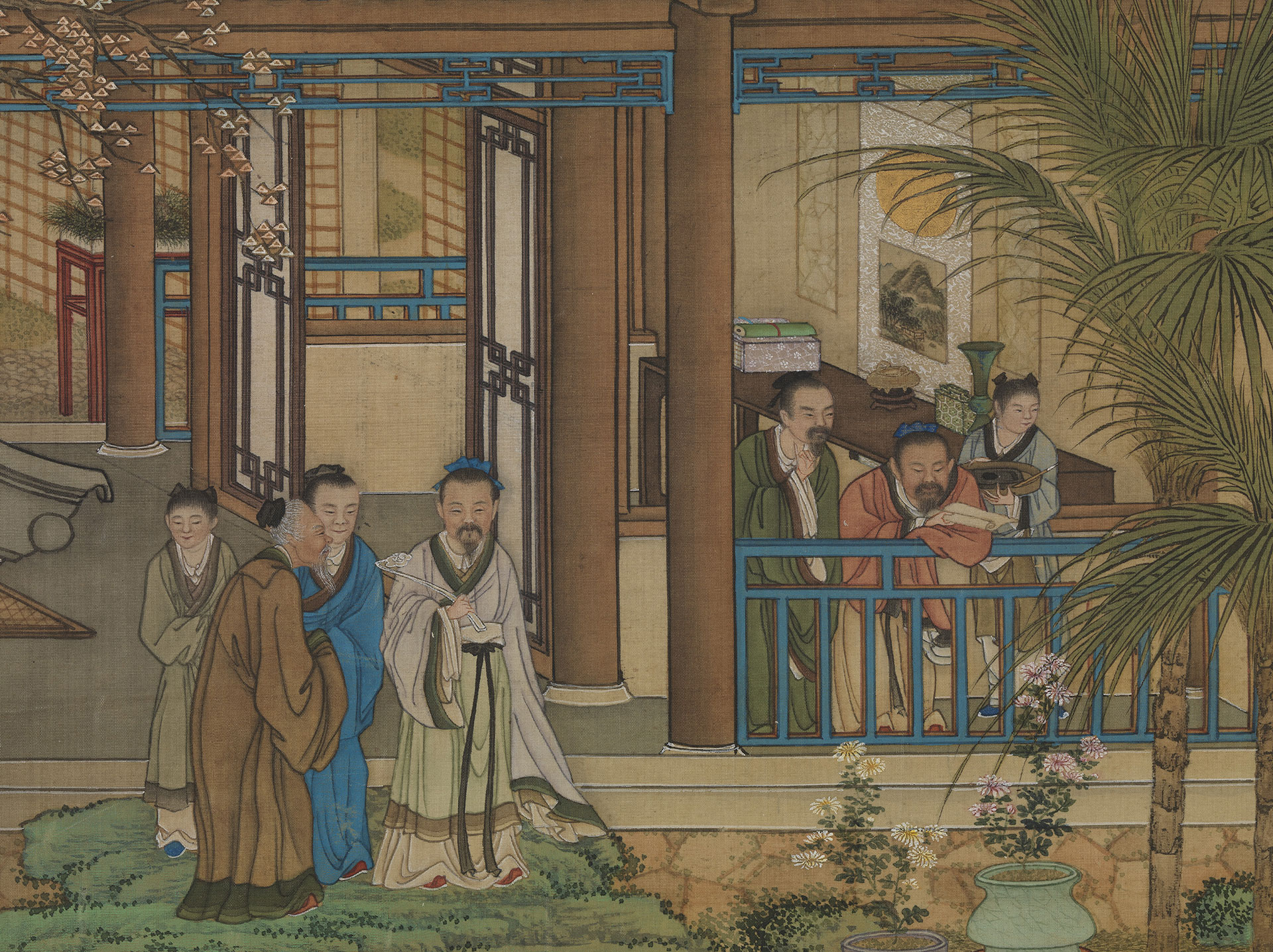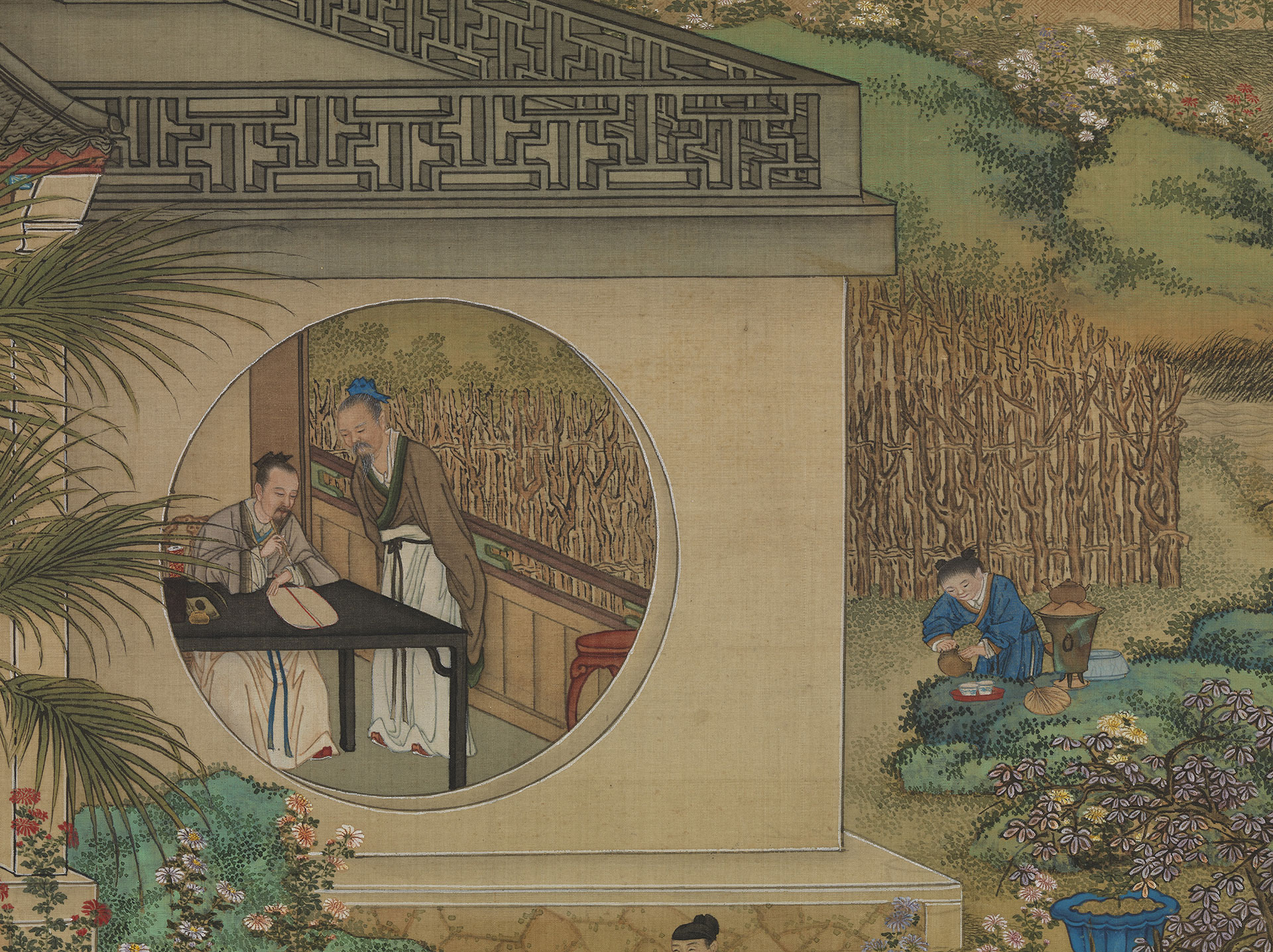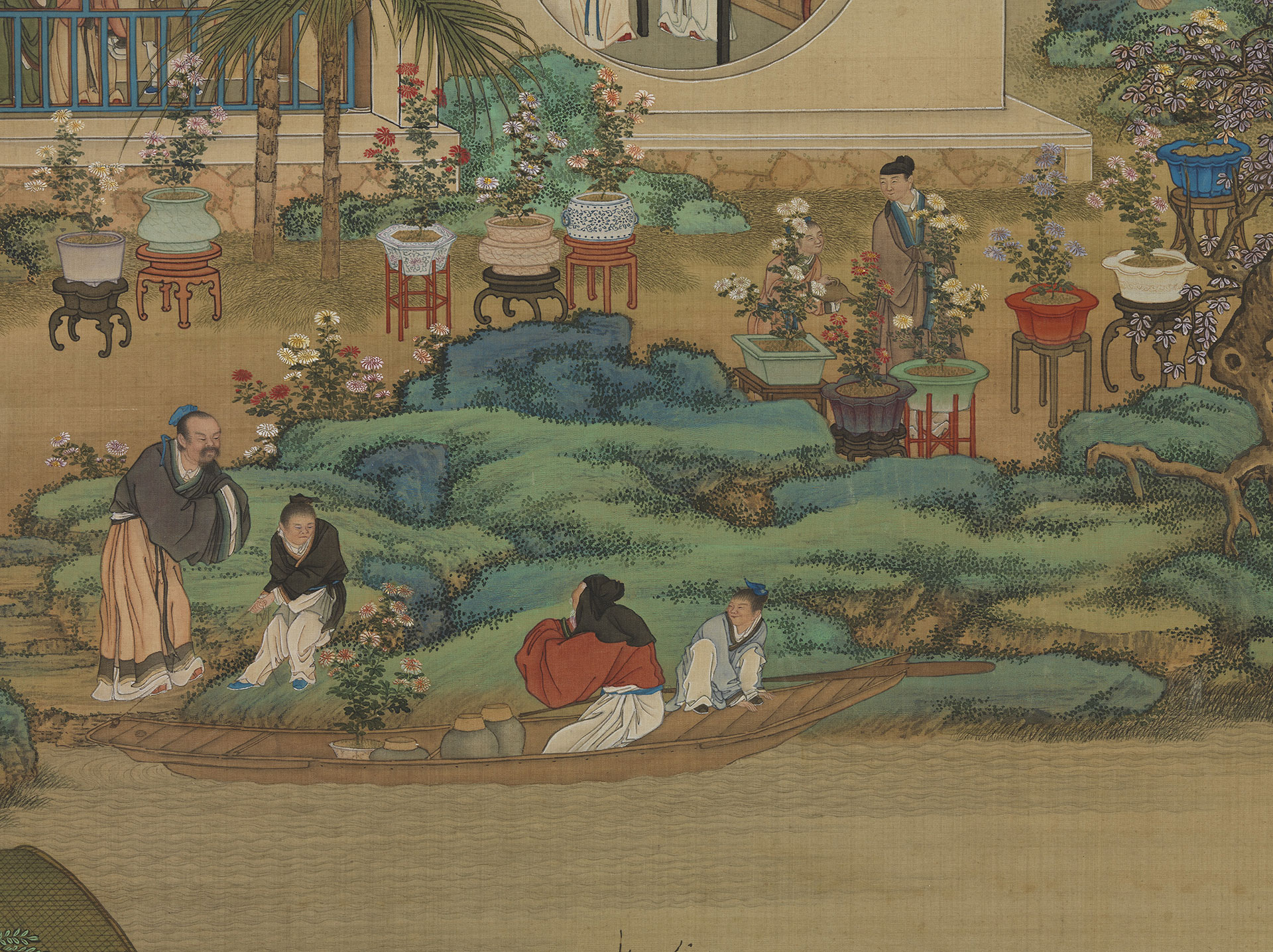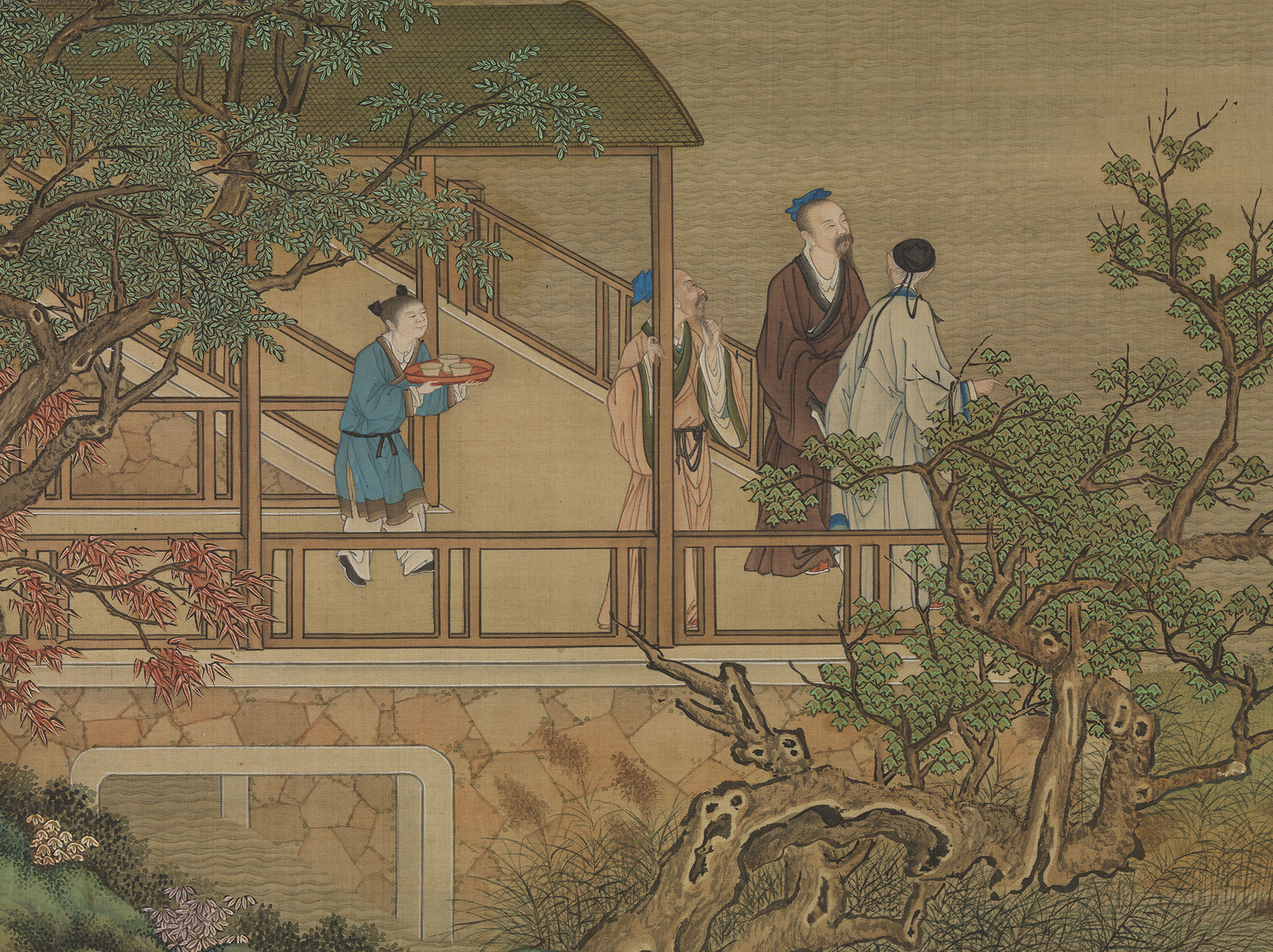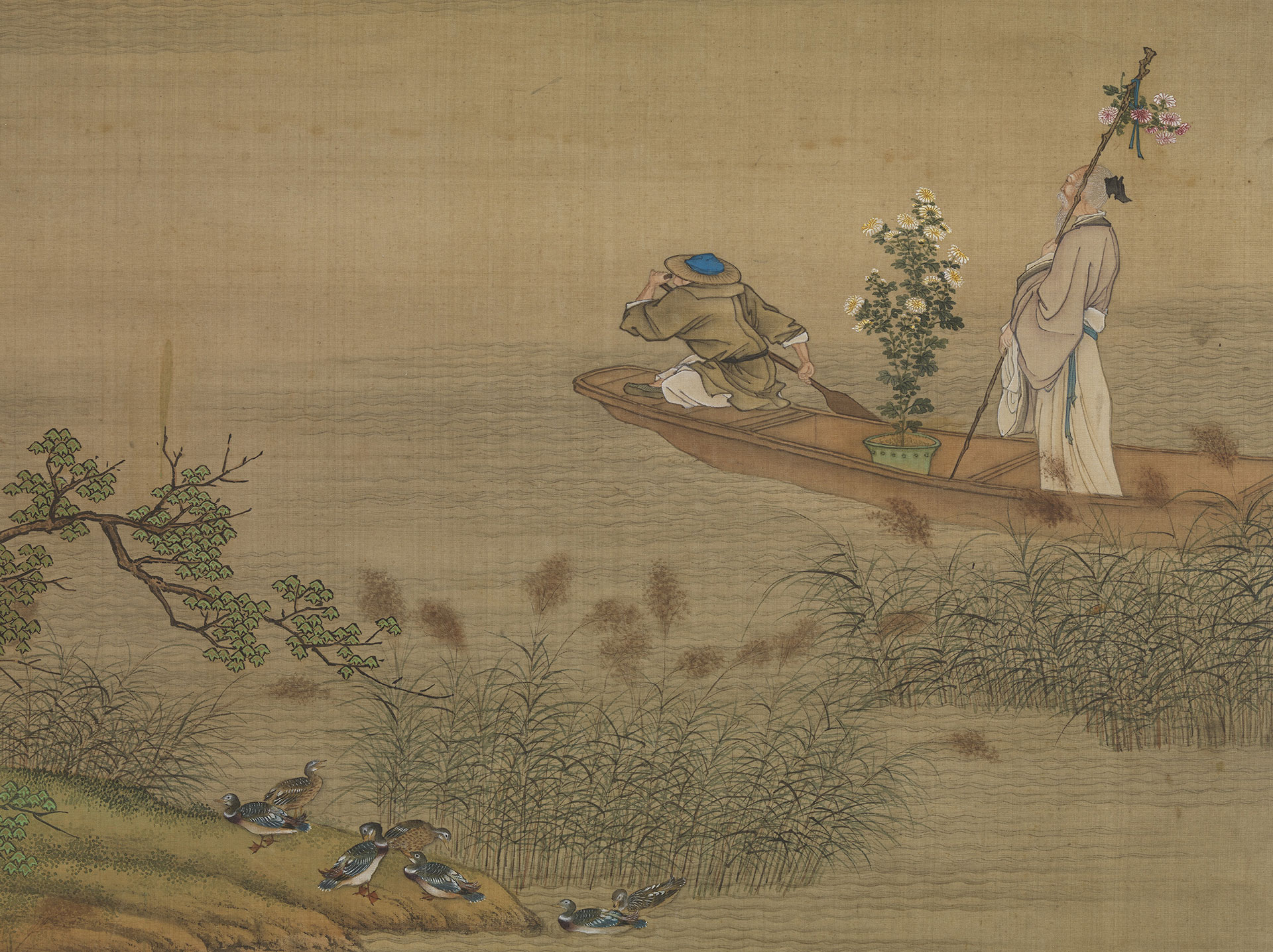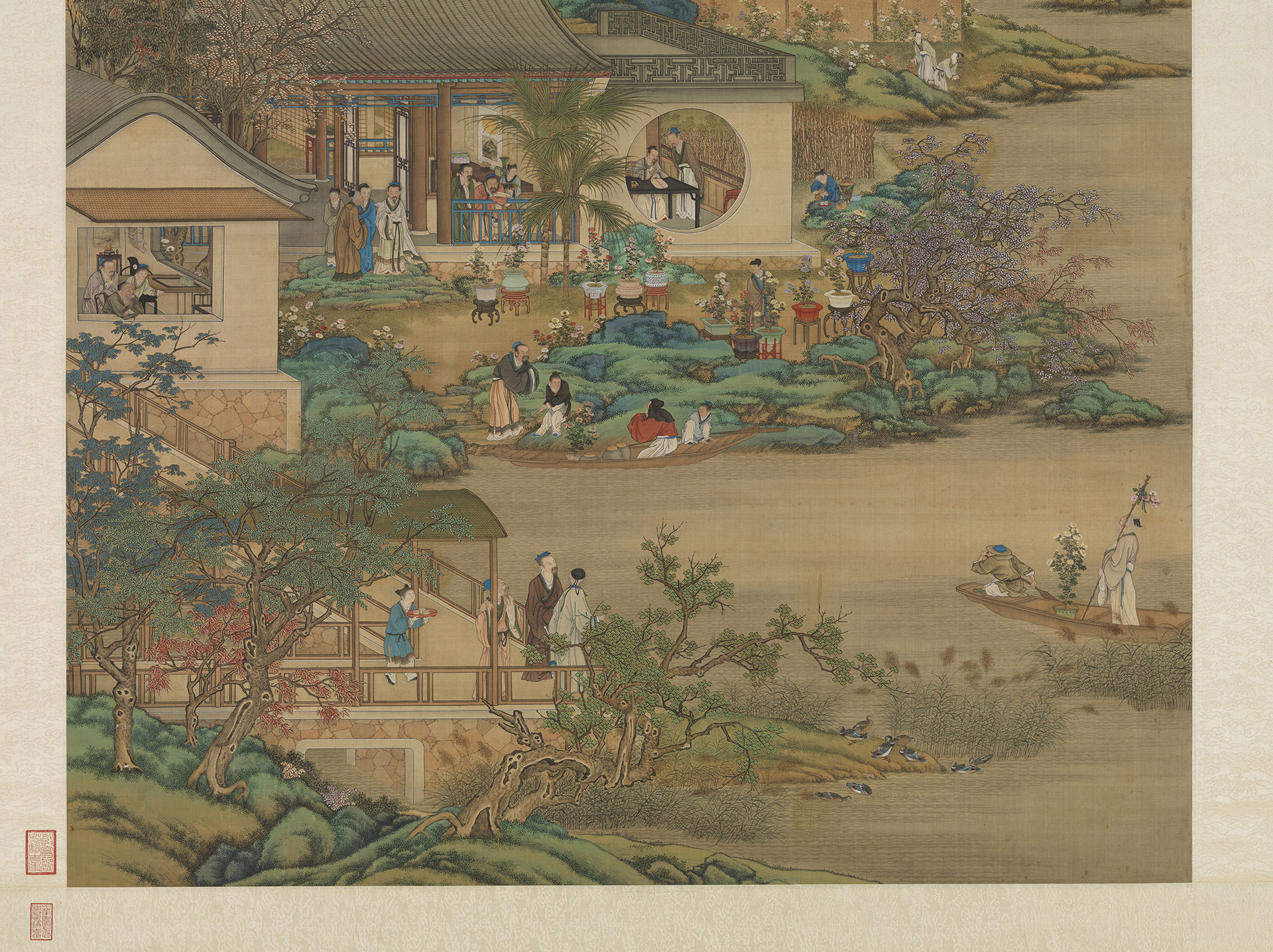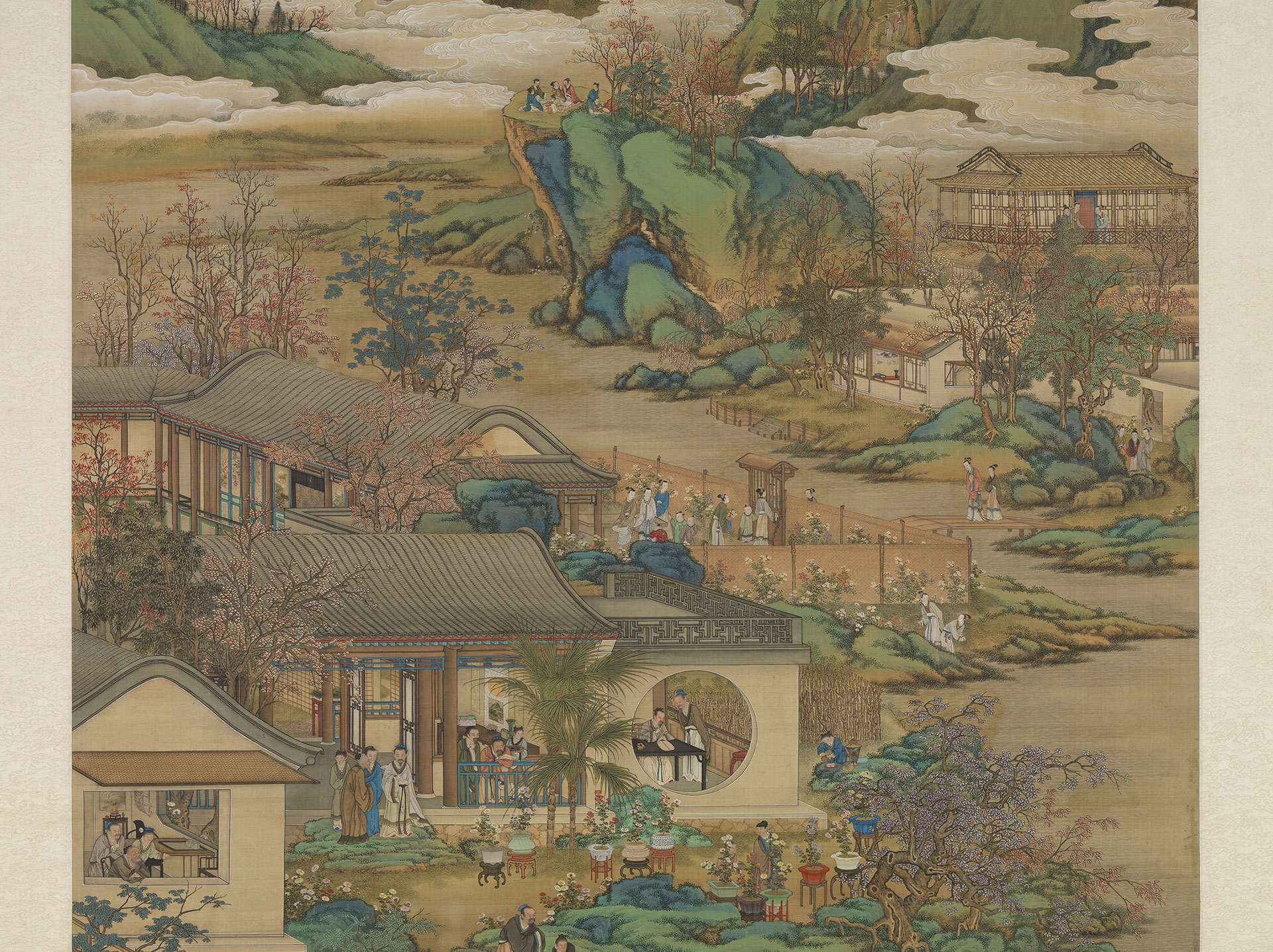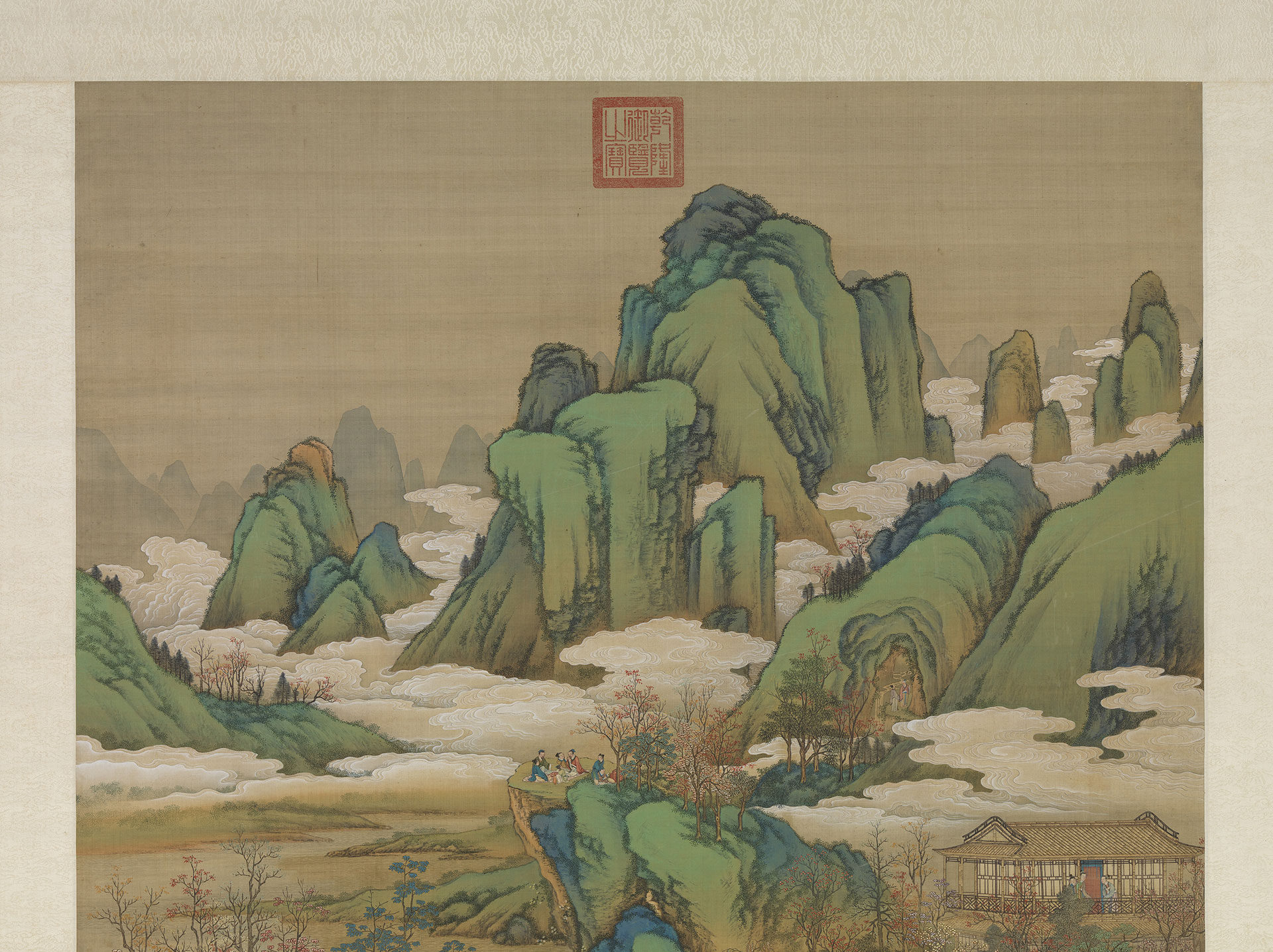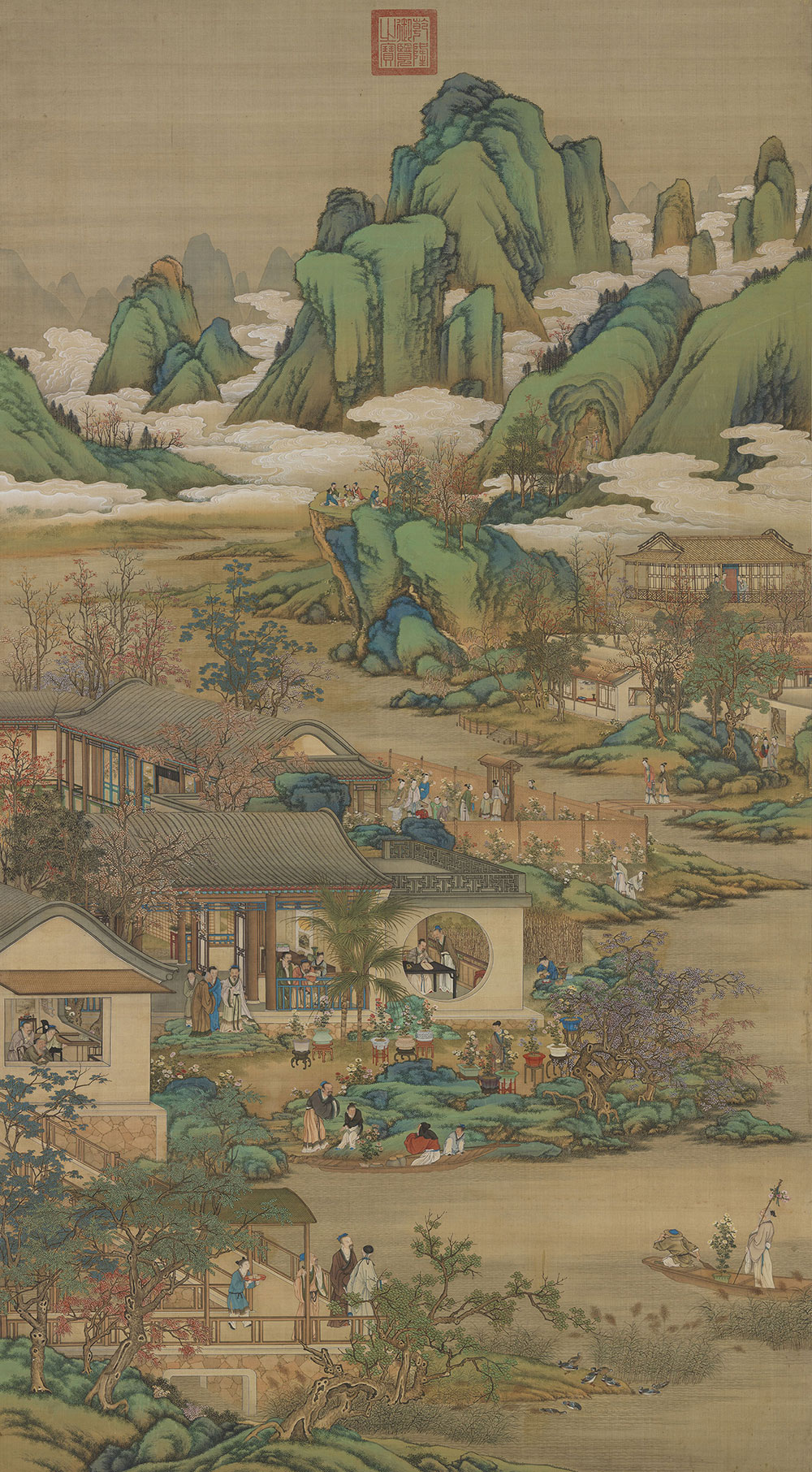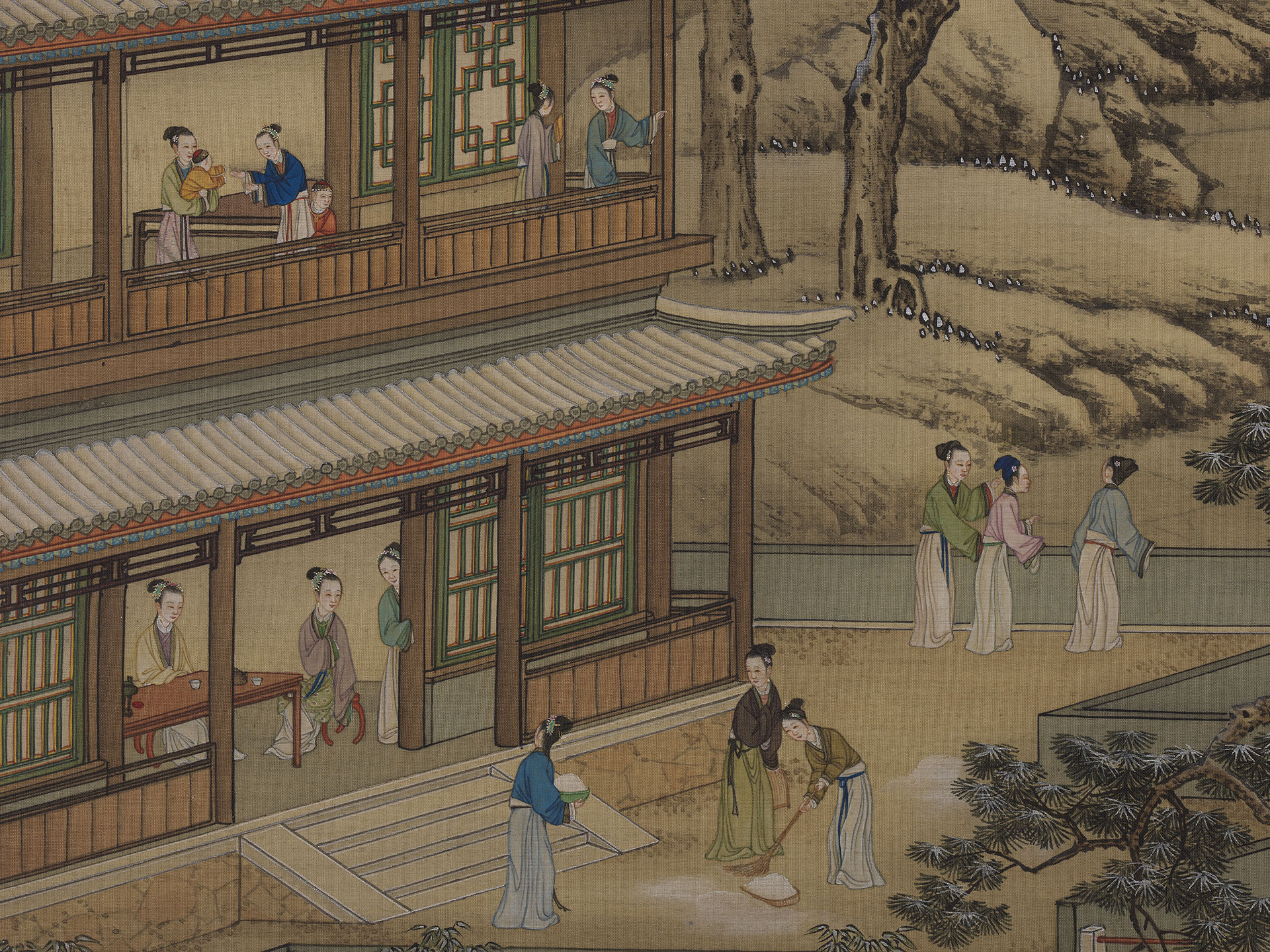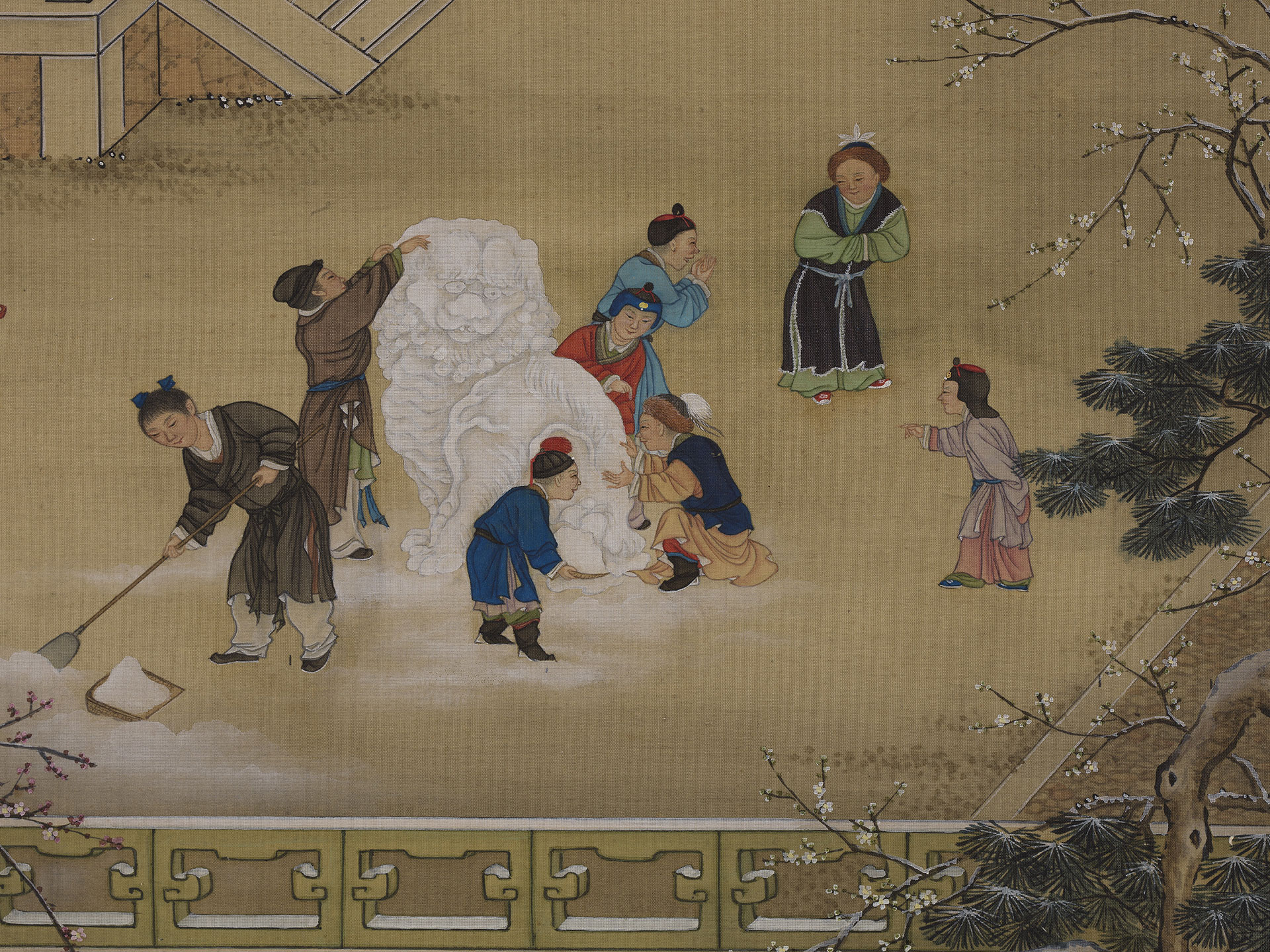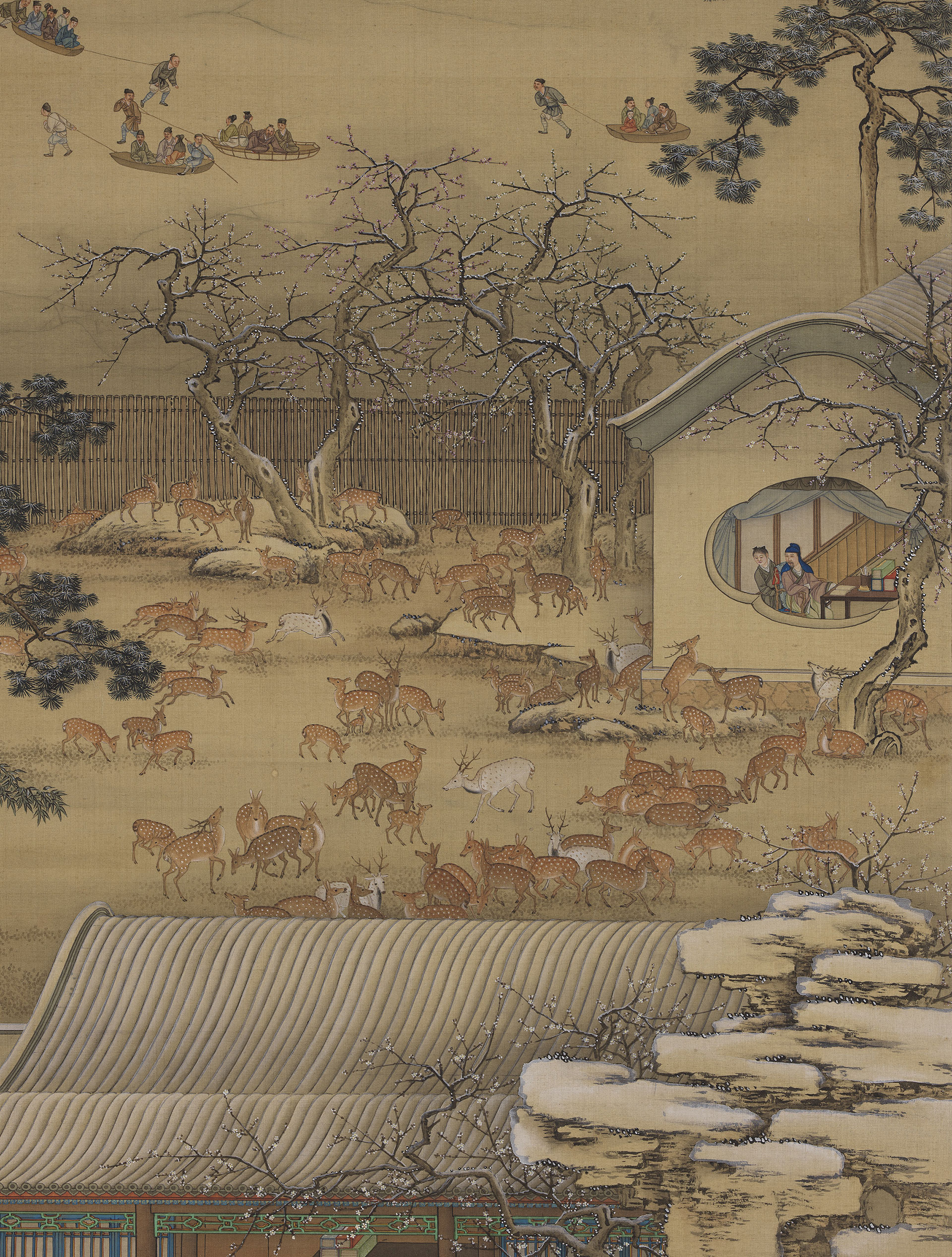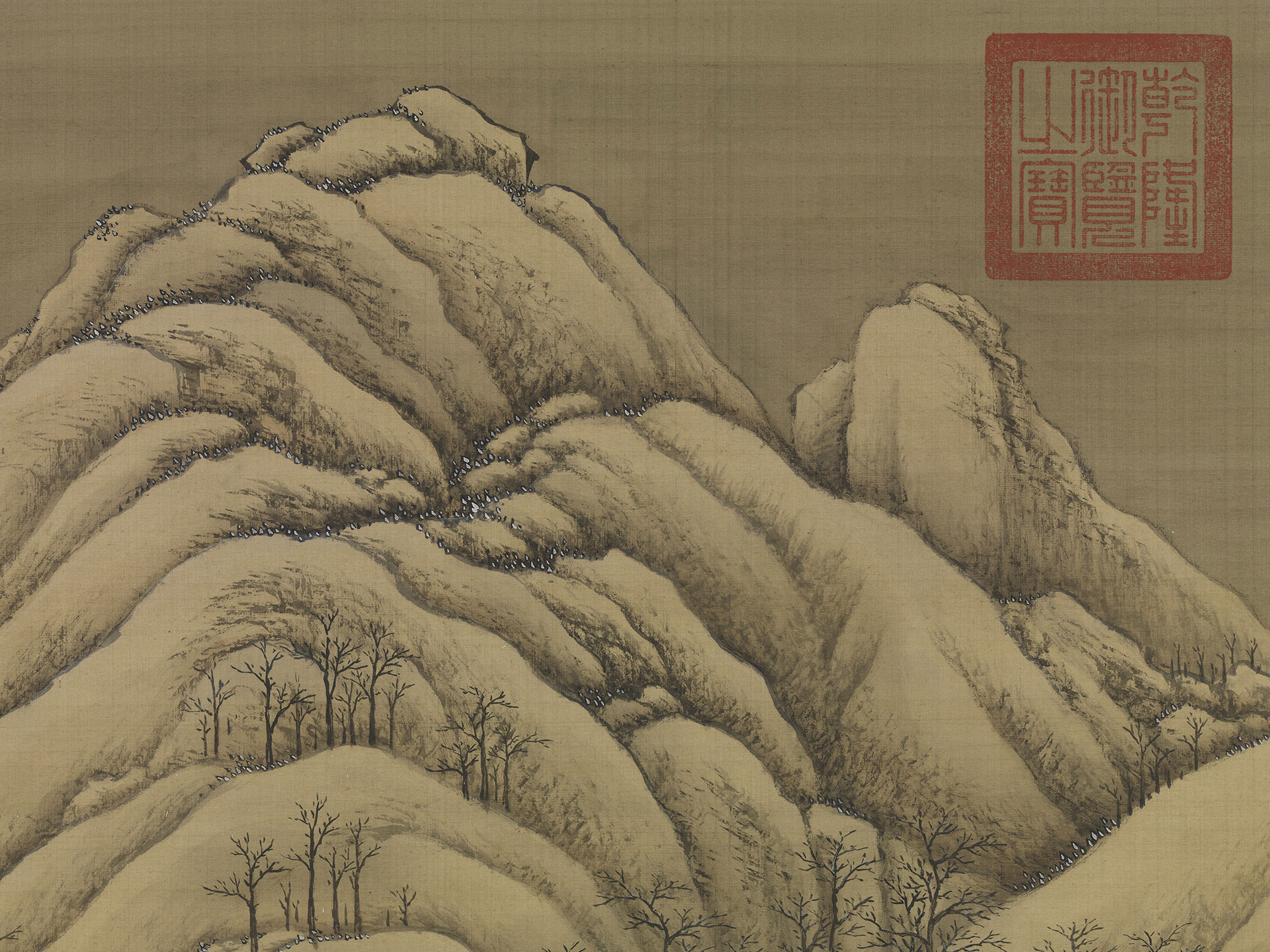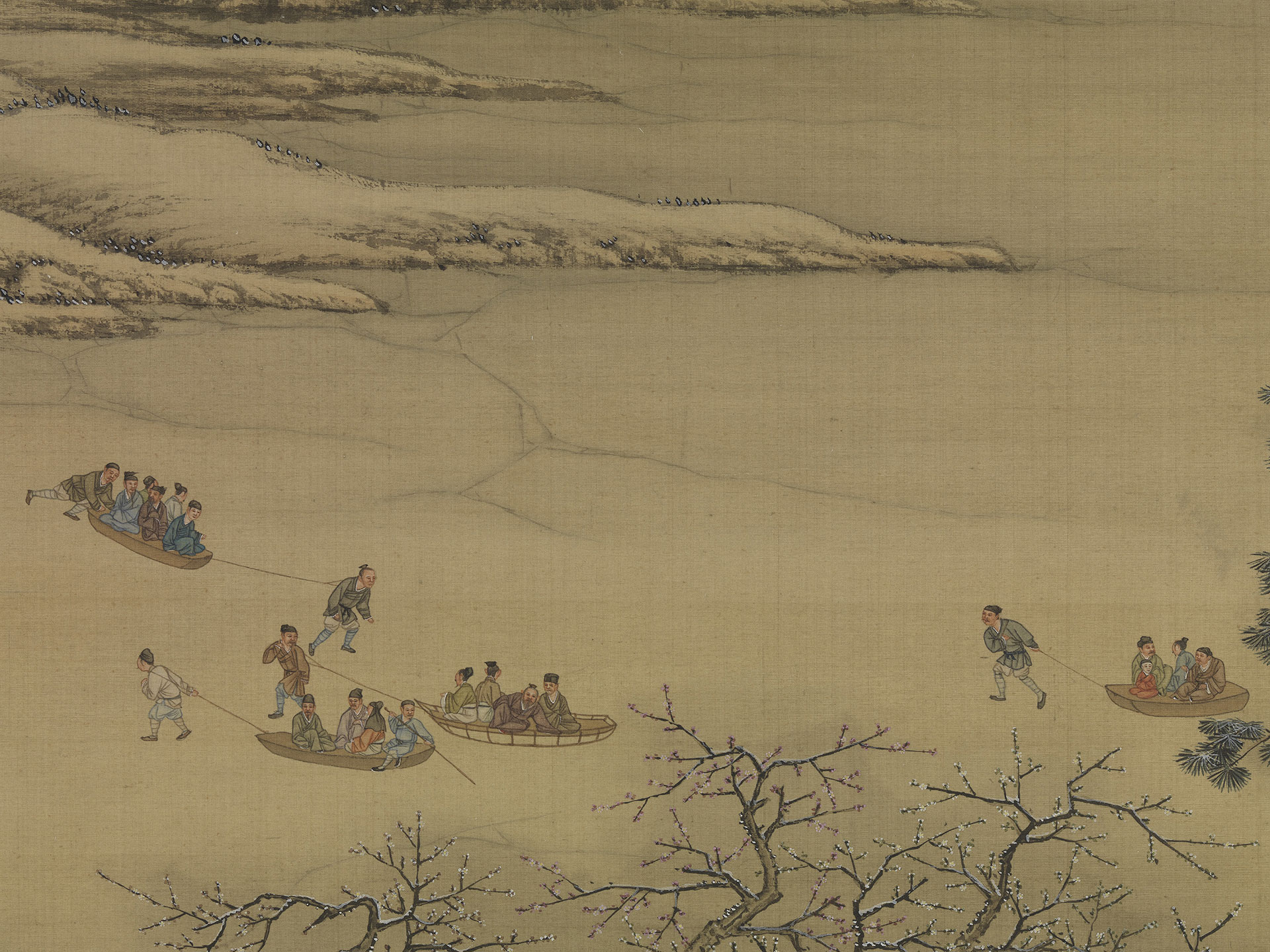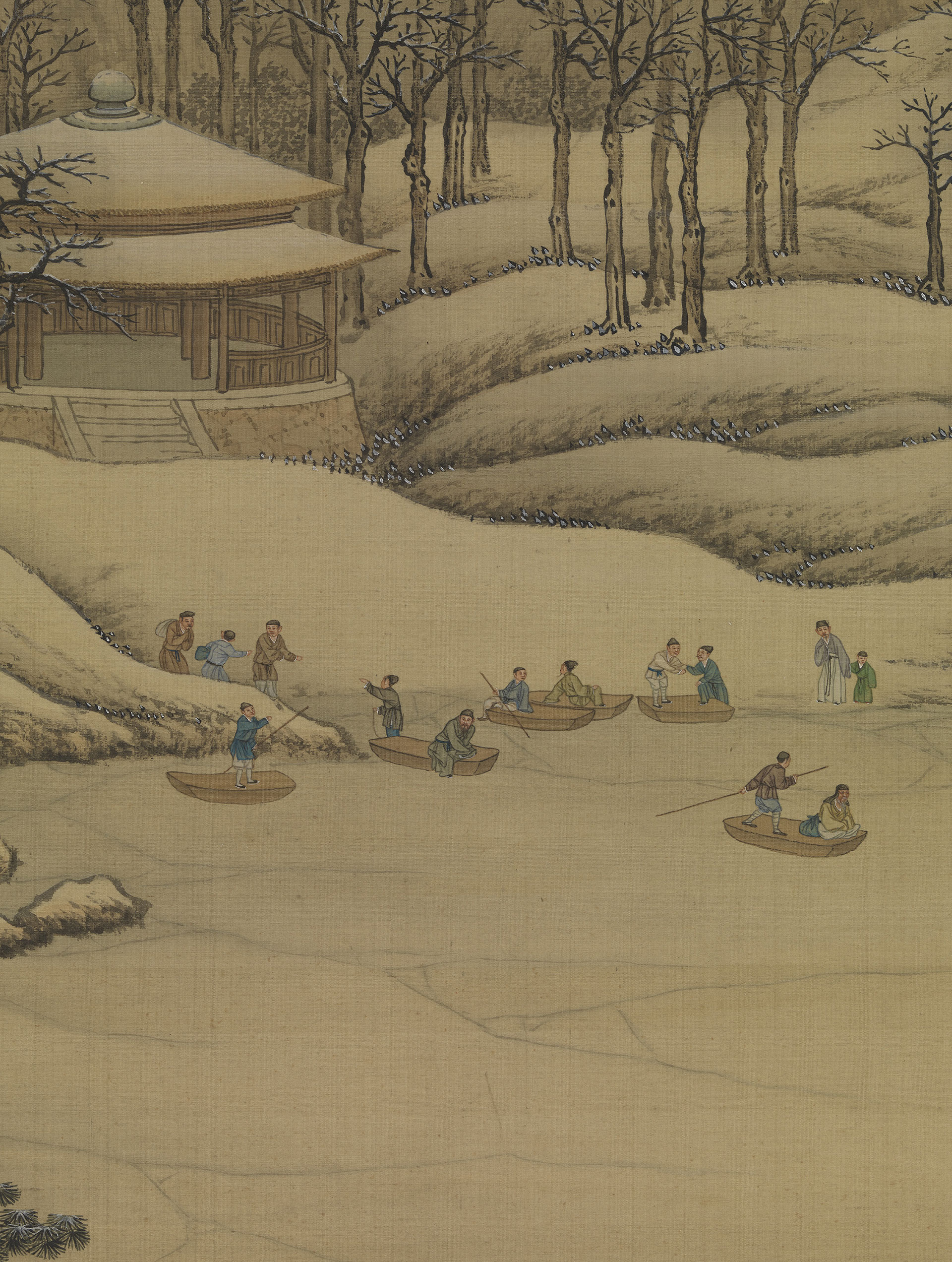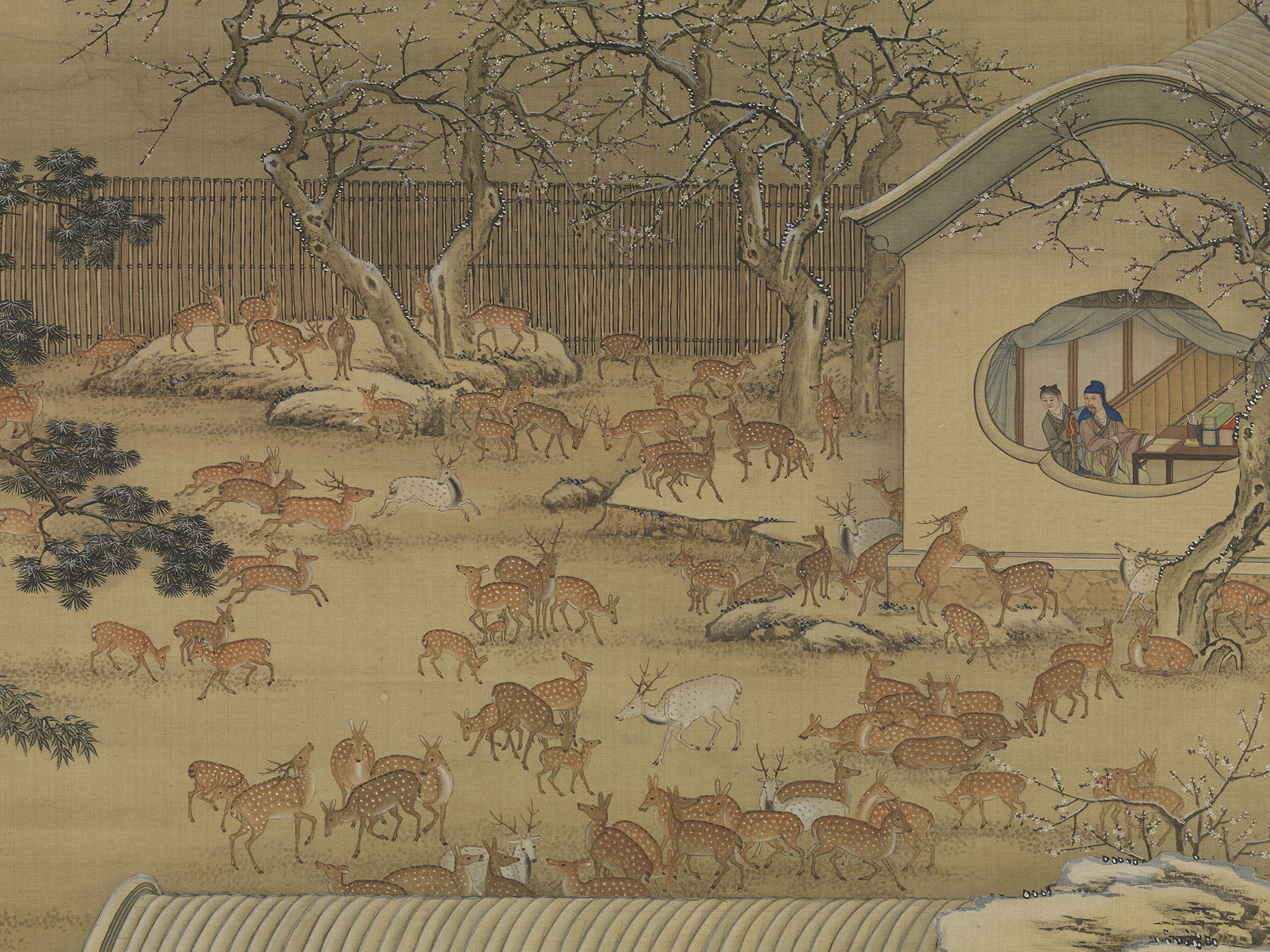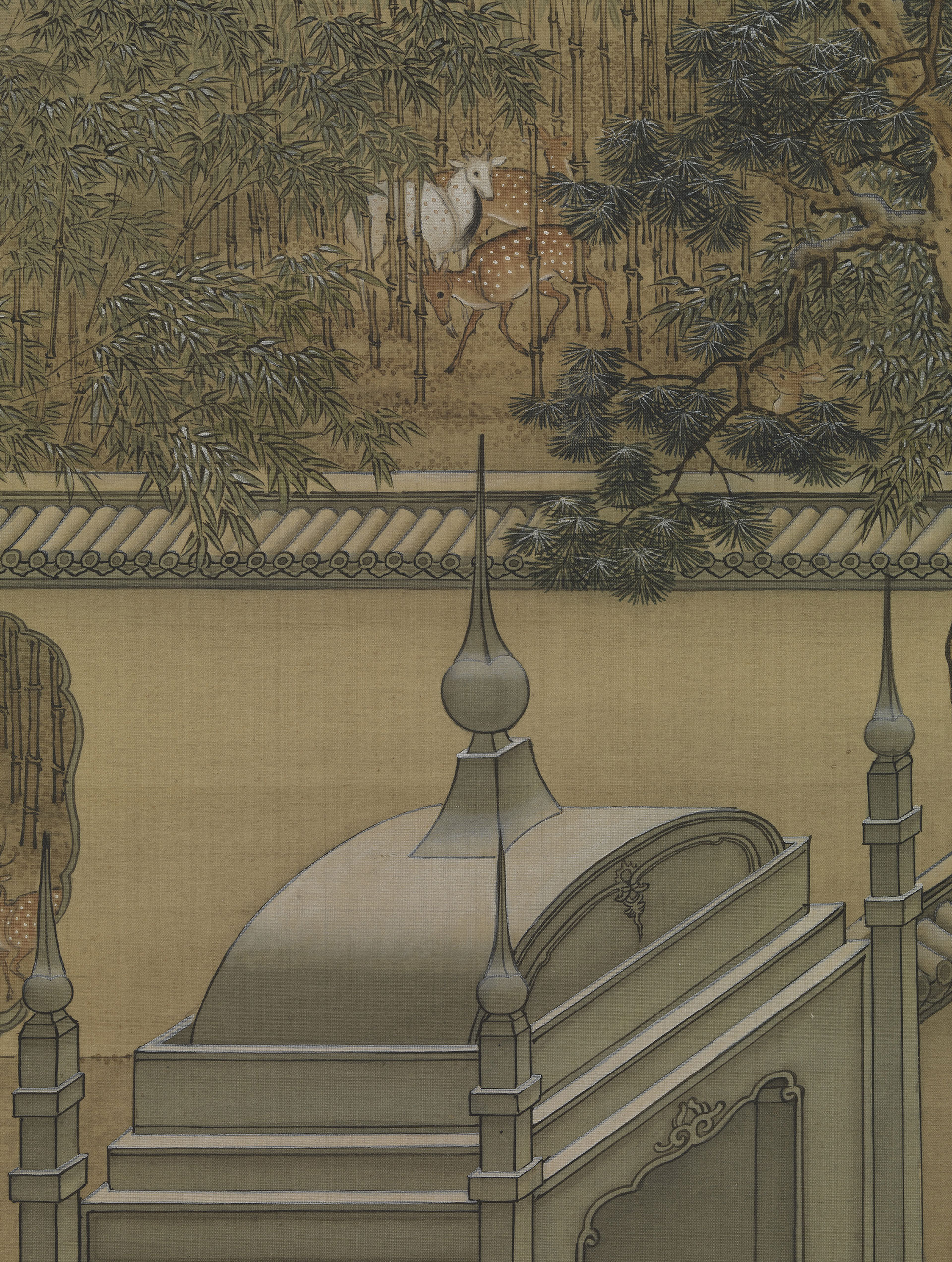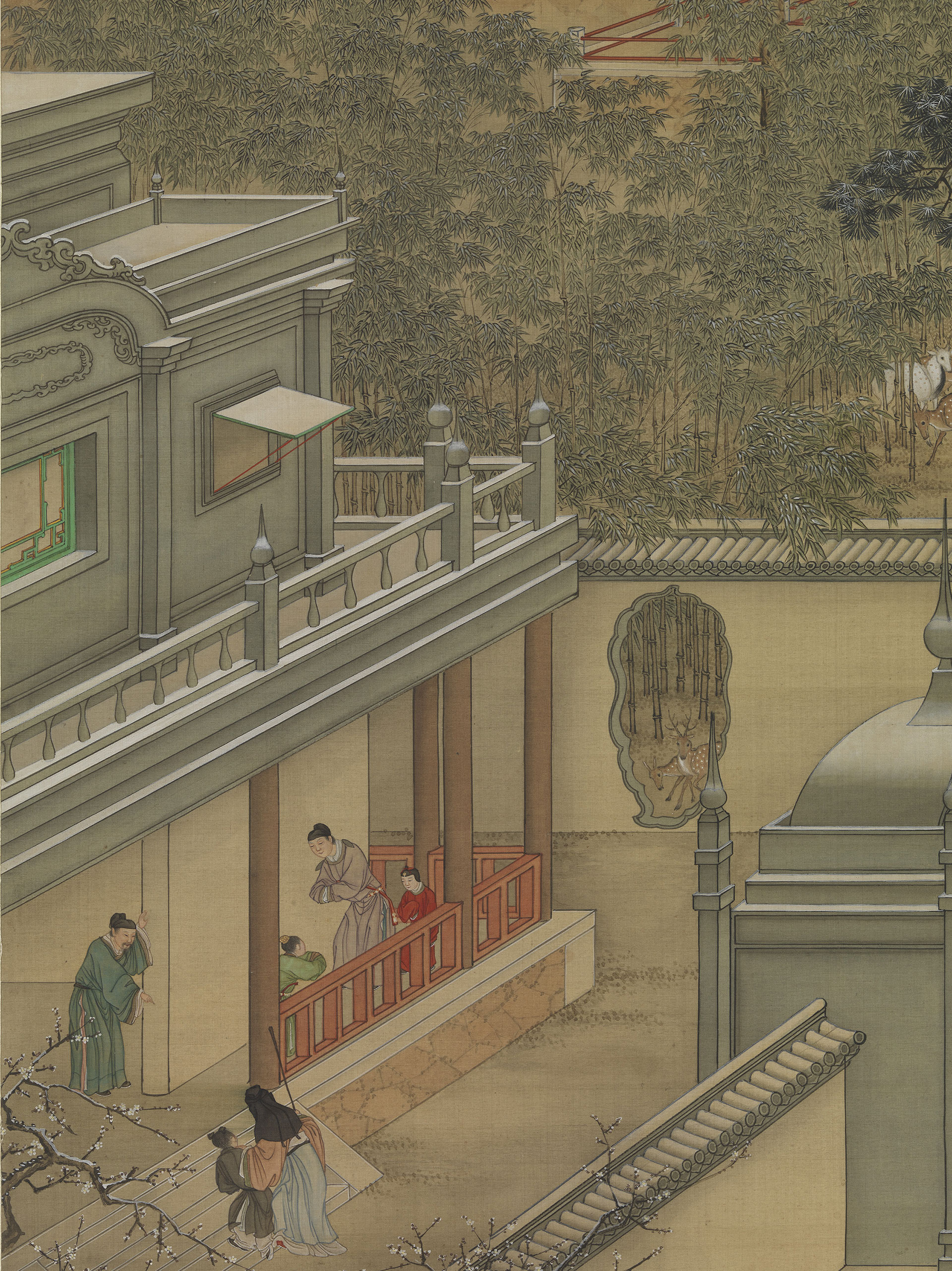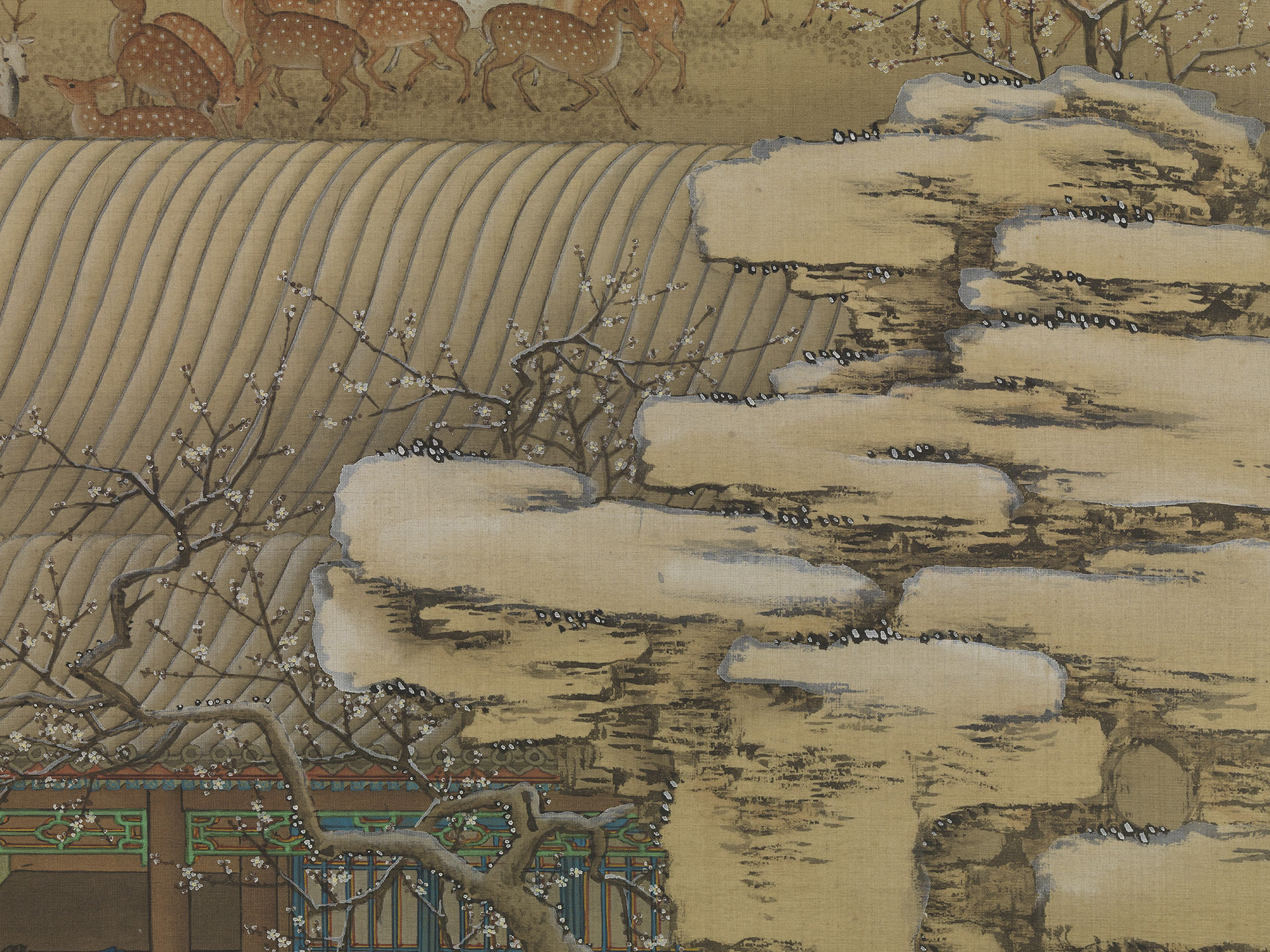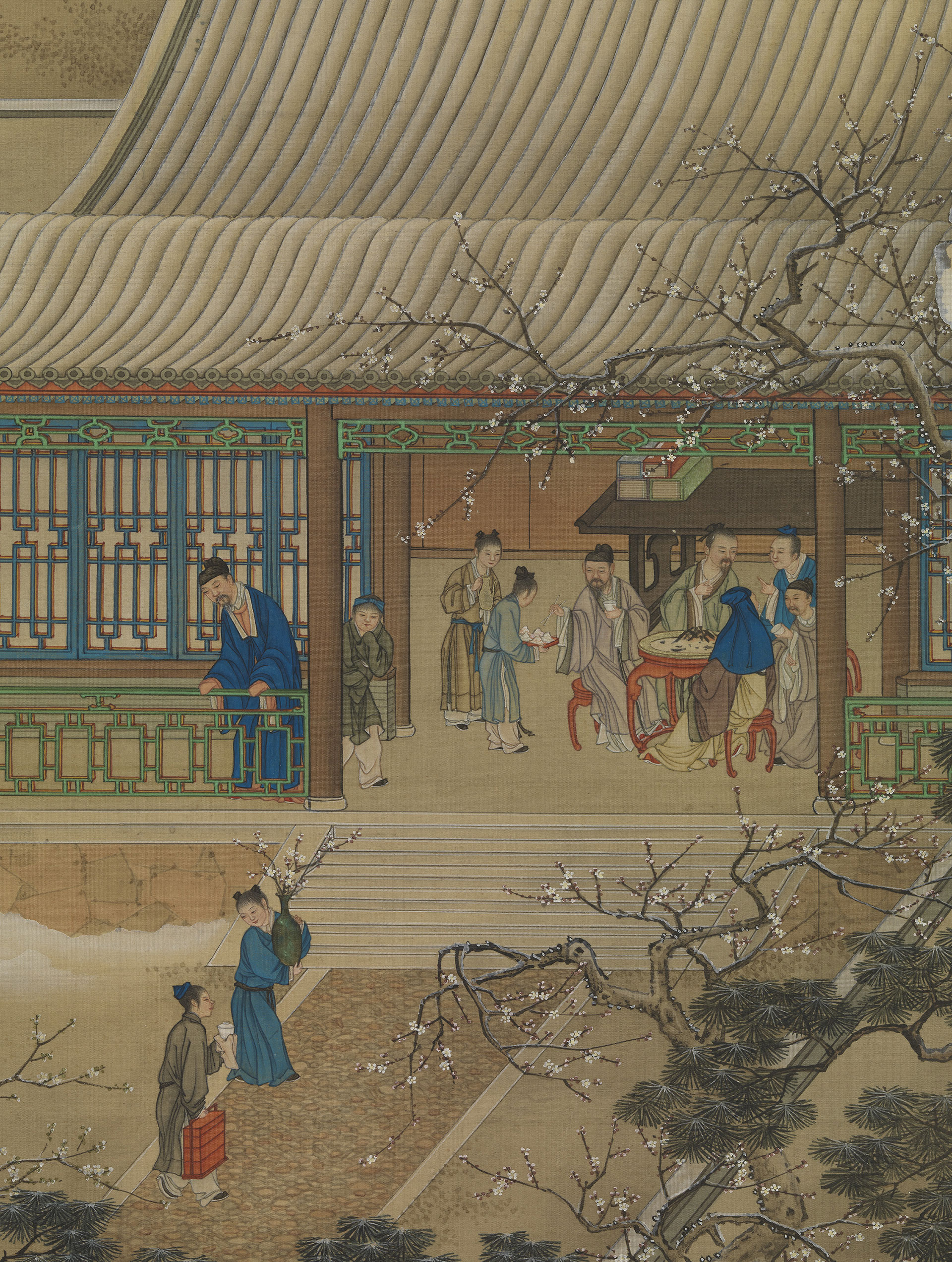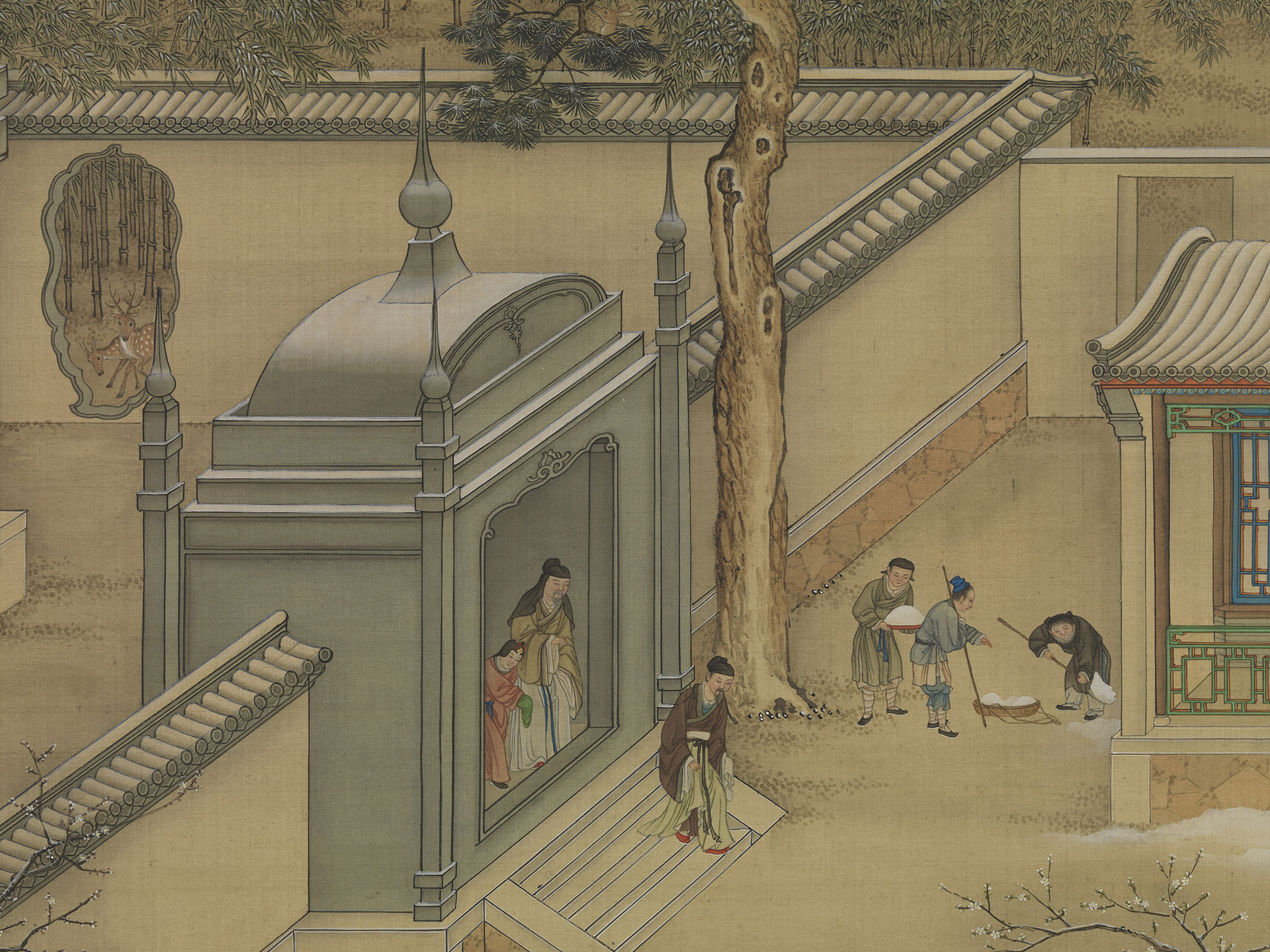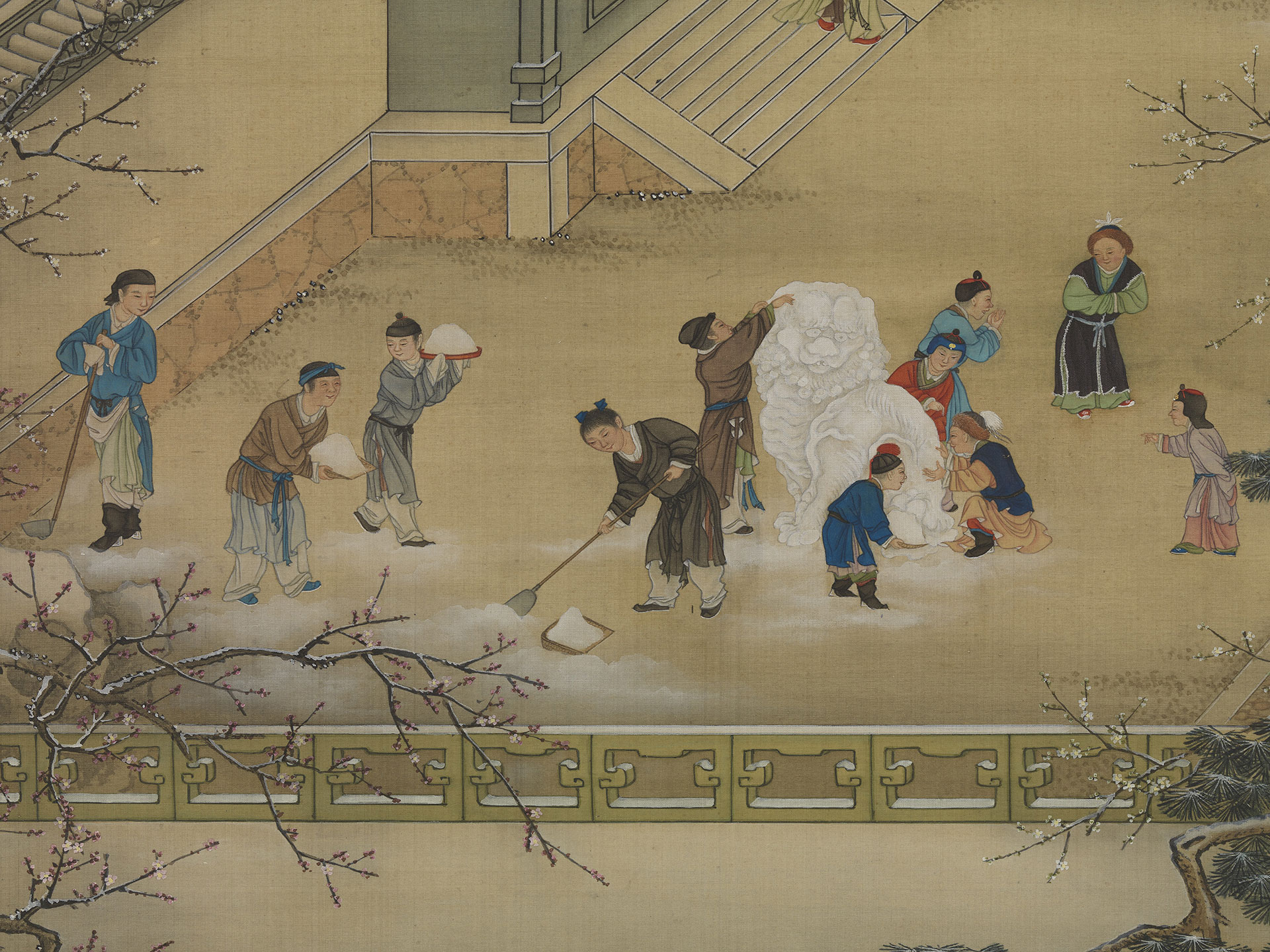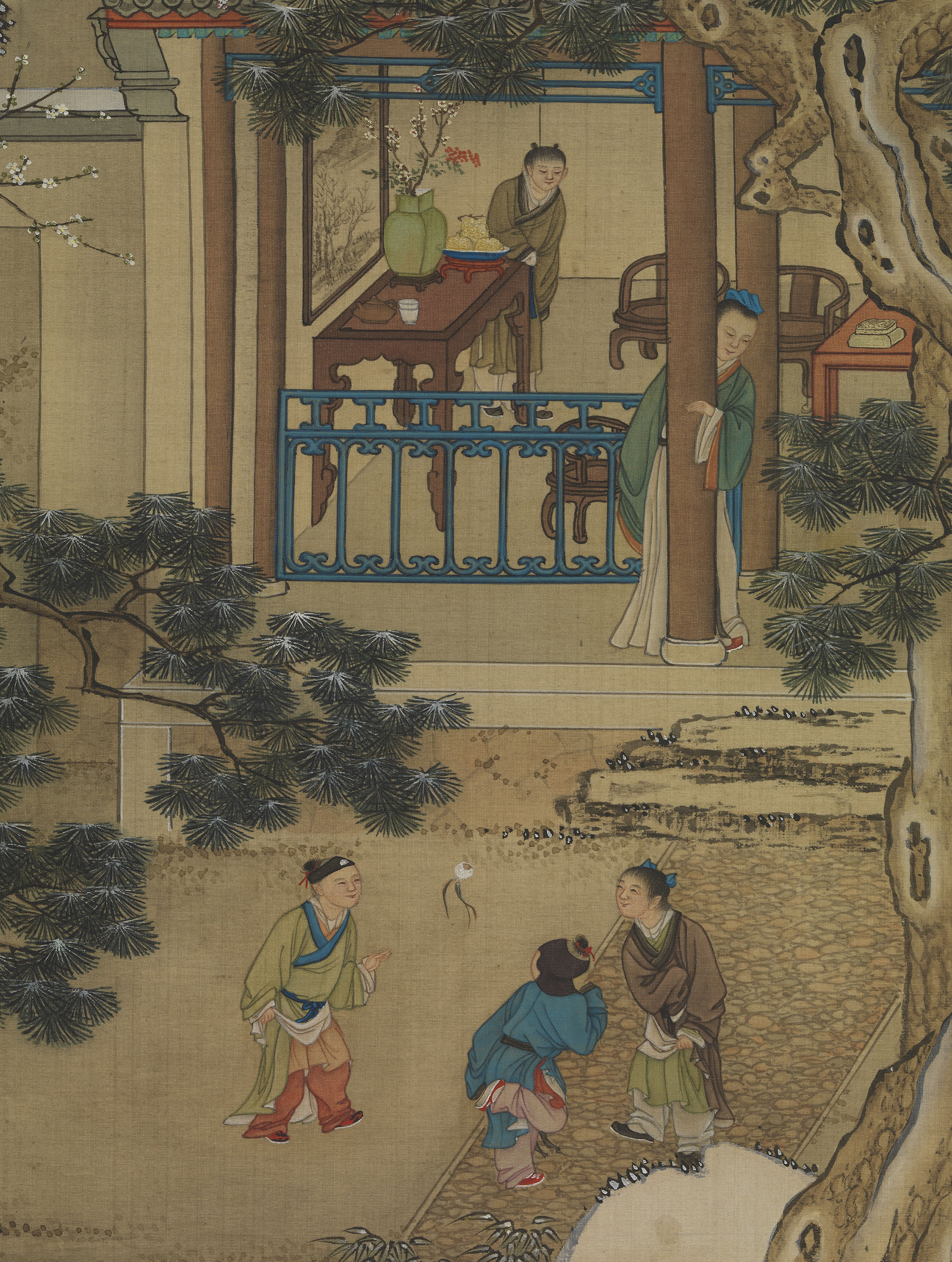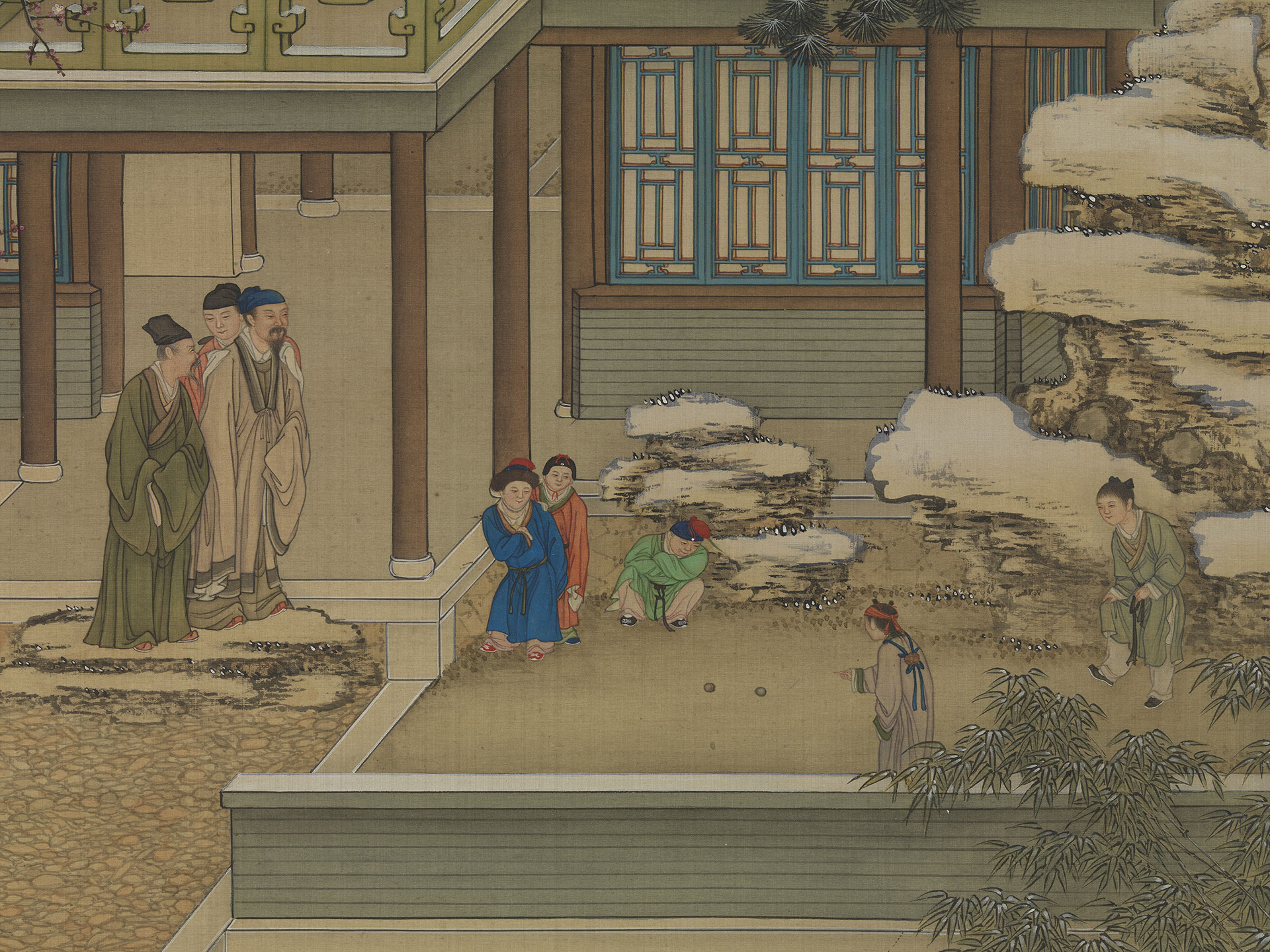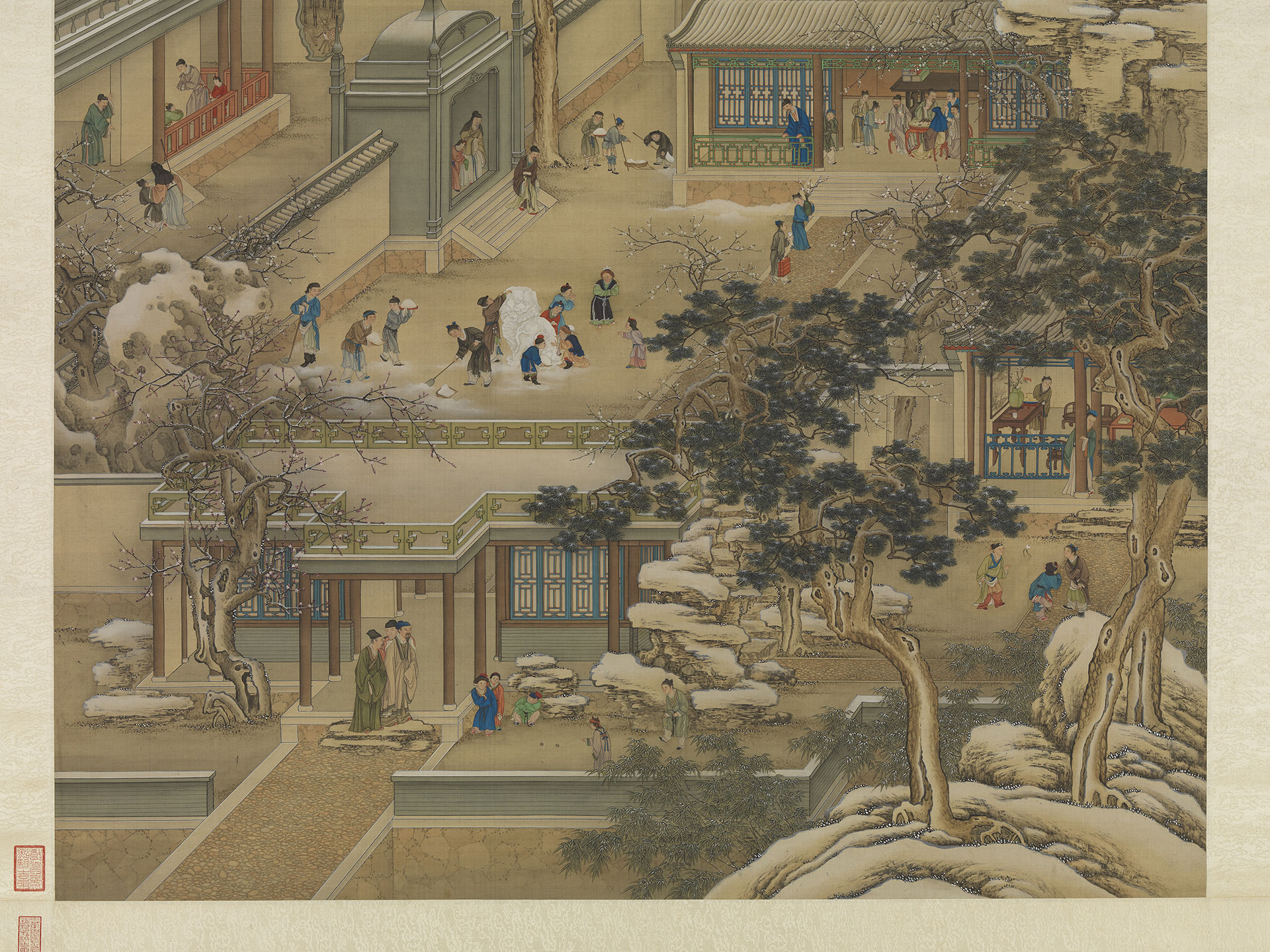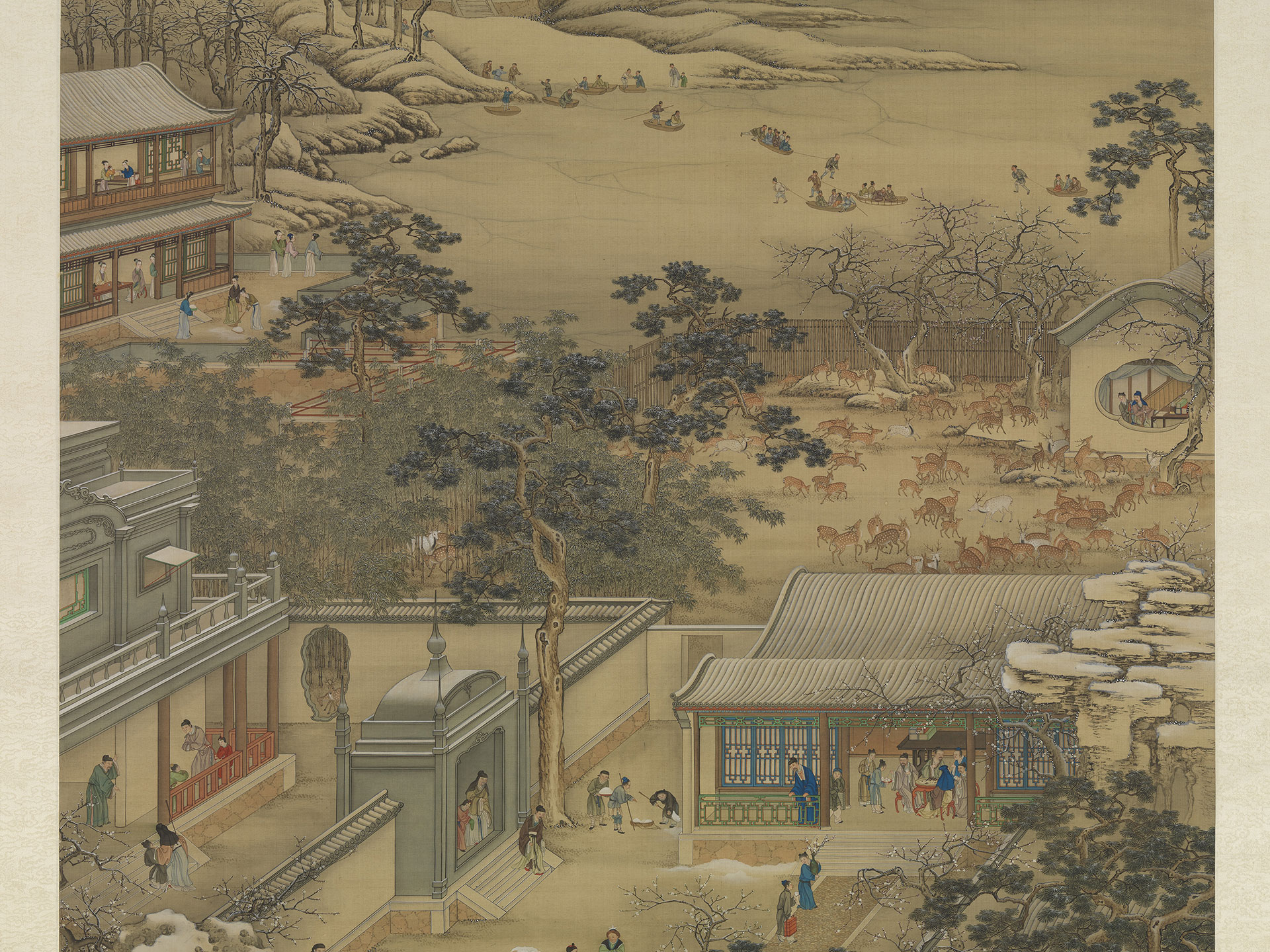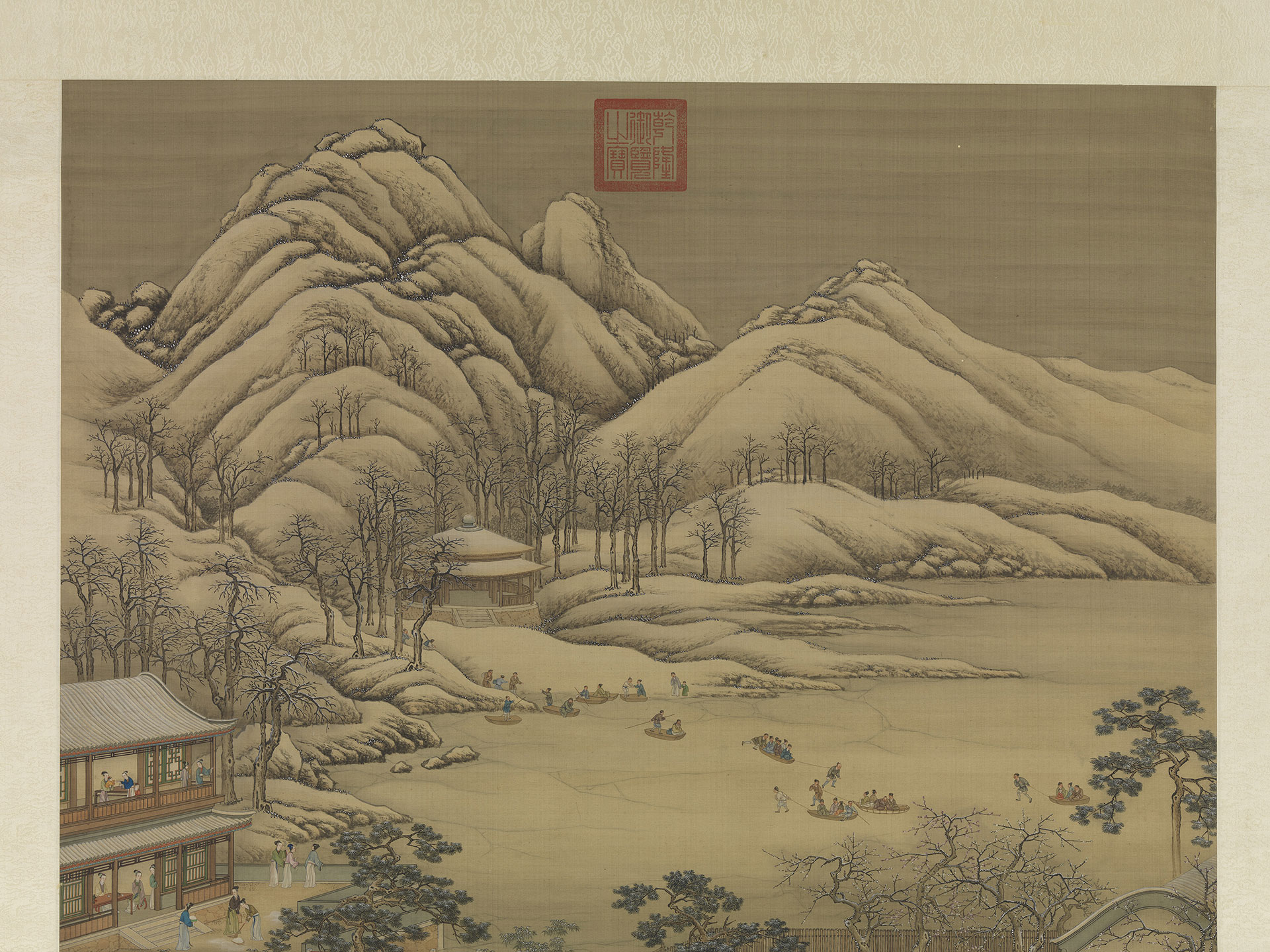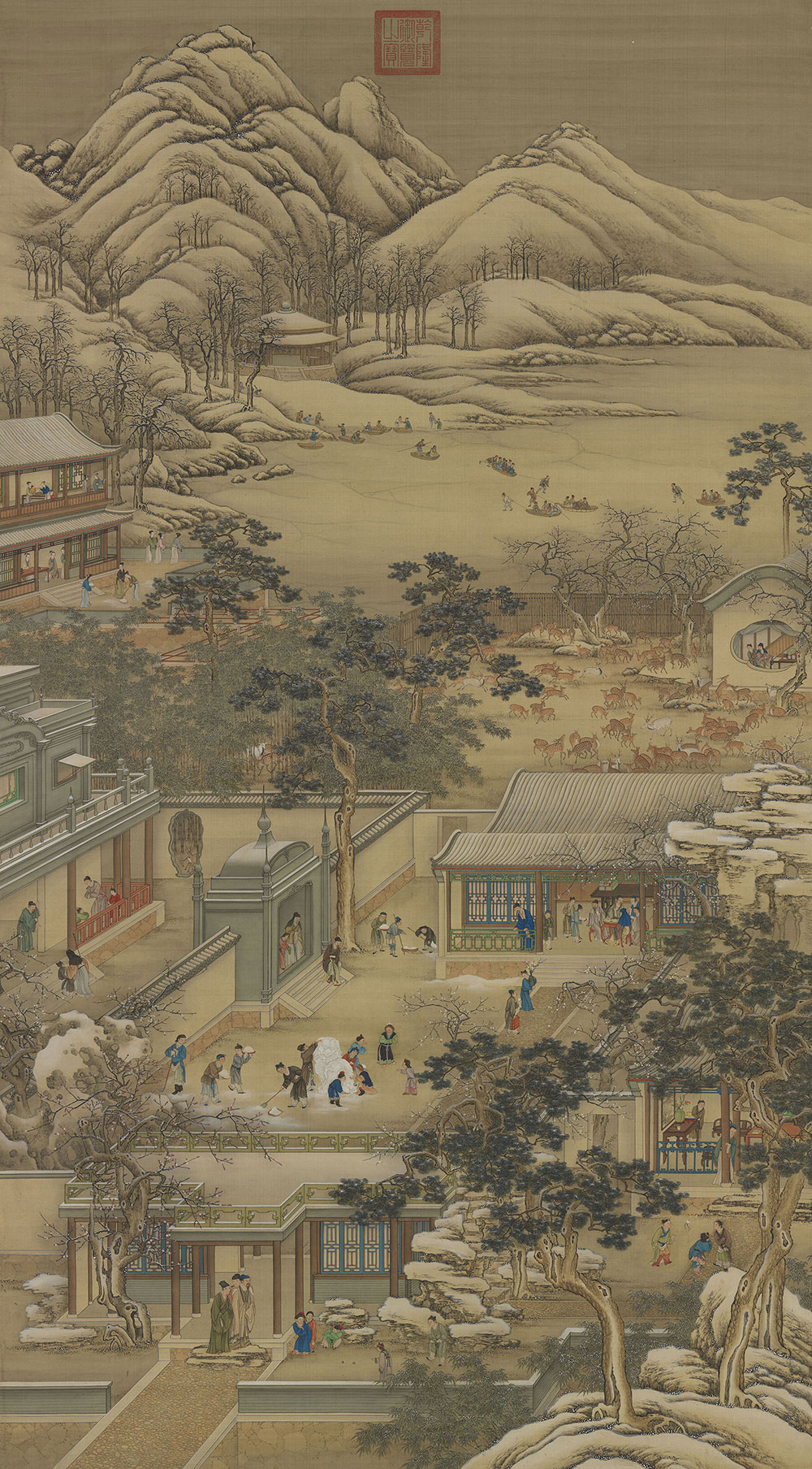Seasonal Joys
Imperial gardens served as places of leisure for emperors and members of the imperial household. Each season had its own corresponding activities centered on flower appreciation, allowing participants to experience the changing of the seasons by witnessing the flourishing and withering of plants and blossoms.
Gorgeous paintings of the imperial gardens do more than reveal the floral and botanical arts or the recreational activities of the periods in which they were created. The plants in these paintings were portrayed coming into bloom in accordance with the orderly unfolding of the seasons, so as to represent a stable climate free from disruptive weather events. The scenery in the imperial gardens was derived from the ideals the emperors held in their hearts. These gardens were thus akin to miniature representations of an imperial realm blessed with clement weather, timely rains, and widespread peace.
- Spring Morning in the Han Palace
- Qing dynasty court painters
- silk
This long handscroll was painted collaboratively by the court painters Sun Hu (fl. 18th century), Zhou Kun (fl. 18th century), and Ding Yunpeng (ca. 1708-1771) in the sixth year of the Qing dynasty emperor Qianlong’s reign (1741). This painting, which is thematically based upon a genre of paintings with the same title, depicts palace maidens dressed in traditional Han clothing engaged in various activities in the imperial gardens. The architecture and items on display were all depicted in a manner that incorporated styles and customs current during the Qing dynasty.
During the Ming and Qing dynasties, numerous paintings with the name “Spring Morning in the Han Palace” were created—of these paintings, this scroll devotes the most attention to depicting women engaged in flower appreciation. A stunning diversity of glorious arrangements fills the painting, including miniaturized bonsai landscapes comprising scholar’s stones and blossoming plants, as well as fences and flowery pavilions created from creeping vines. These elements reveal the thriving floricultural arts of the Qing dynasty.
Twelve Lunar Month Paintings
The “Twelve Lunar Month Paintings” on exhibit here revolve around the themes of the twelve months of the traditional Chinese lunar calendar. Their composition is similar to that seen in the “Emperor Yongzheng’s Joyous Excursions Throughout the Twelve Months,” which is held by the Palace Museum in Beijing. The originals portray Emperor Yongzheng (1678-1735) and his empress dressed in traditional Han clothing as they partake of the delights of life. The paintings are embellished with different seasonal folk festivities, conveying the idea of the emperor enjoying life alongside the masses. In the “Twelve Lunar Month Paintings” created during Emperor Qianlong’s reign, Yongzheng’s figure is transformed into that of a typical member of the literati.
In ancient times, the idea that men and women are fundamentally different meant that disparate codes of ethics and norms were enforced upon the sexes, with women being forced to avoid places where men were engaged activities—the scenes depicted in the “Twelve Lunar Month Paintings” are no exception. Nevertheless, regardless of the restrictions placed on people’s areas of activity, flower appreciation remained a pastime that transcended sex while also being therapeutic for body and mind. Through works of literature and painting, flowering plants gradually became a subject people used to convey their feelings and sentiments.
- The Twelve Lunar Months: The Second Month
- Qing dynasty court painters
- silk
“The Second Month” portrays a garden full of apricot trees in full bloom. In the foreground, servant boys can be seen sweeping up fallen flower petals and boiling water to brew tea, while scholars appear holding books and reading or engaging in face-to-face conversation. This is probably a depiction of the “Flower Festival,” held on the fifteenth day of the second lunar month, during which time members of the literati gathered together for poetry recitals. In the middle ground, palace maidens enter a building clutching vases filled with fresh flowers, while inside the building other women do embroidery as they keep an eye on the children. In the nearby courtyard, another group of women line up waiting to take their turns on a swing. In the far distance, officials ride horseback during a spring outing, while hunters holding falcons and longbows prepare for a hunt. These elements all intimate the arrival of springtime.
This painting’s composition was influenced by occidental perspective painting techniques, such that its foreground and background are depicted at substantially different scales. The human figures are arranged in a manner that happens to follow the Z-like shape of the Chinese character 之, guiding viewers’ eyes from the bottom to the painting to its top and from left to right and back again as they examine the painting’s details.
- The Twelve Lunar Months: The Fourth Month
- Qing dynasty court painters
- silk
“The Fourth Month” portrays gardens rife with varicolored peonies and yulan magnolias in full bloom. The sky in the far distance is dark and filled with roiling mists. Women outdoors picking mulberries can be seen shielding themselves from the rain with their sleeves or their wicker baskets, while the other men and women outdoors hold umbrellas or wear wide-brimmed bamboo hats—all indicators that this painting depicts a rainy day. In contrast, the men and women indoors are engaged in flower appreciation. In the front hall, gathered scholars and erudites are waiting for their host, who is crossing the bridge, to join them. In the anteroom, which is festooned with vases filled with peonies, female family members have come together for a chat.
Emperor Qianlong once wrote a poem recording the goings on of the fourth lunar month and praising the way the seasonal rains benefit agricultural activities. The rainy scenery depicted in this painting is thus subtly symbolic of high hopes for a bountiful harvest later in the year. The painting’s peonies, yulan magnolias, and its palatial halls collectively evoke an auspicious chengyu which literally translates as “jade halls filled with riches.” This chengyu contains a hidden play on words because the terms “jade” and “halls” rhyme with the names for yulan magnolias and Chinese crabapple flowers, while peony flowers often represent wealth in Chinese painting.
- The Twelve Lunar Months: The Sixth Month
- Qing dynasty court painters
- silk
“The Sixth Month” features an expansive lagoon where we see the scenery of summertime when lotus flowers are at their most resplendent. In the forecourt in the lower left portion of the painting, servants can be seen depositing books upon a long table. This detail corresponds with the “Book Airing Festival” that takes place on the sixth day of the sixth lunar month at the end of the “plum rain” monsoon season, when damp books are taken outside to dry in the sun. Above the servants, a fence covered in flowering vines serves as the line of demarcation between the estate’s outer section, and its inner courts where the women reside. Just beyond the fence, we see a palace maiden holding a lotus seed pod high in the air to tease a child on the second floor. Upstairs, the master and mistress of the house wave handheld fans to cool themselves, in a rare glimpse of men and women appearing together in this series of paintings.
The lotus pond depicted here was a place for women to enjoy recreational activities, including punting small skiffs out into the water to go and pick lotus flowers, or sitting a pleasure boat to take in the scenery. In the distance can be seen literati cooling off in the shade as they appreciate the lotus flowers. They look as though they’re waiting for a guest from afar to come and join them, and seem to be at the pinnacle of contentment.
- The Twelve Lunar Months: The Ninth Month
- Qing dynasty court painters
- silk
The foreground of “The Ninth Month” depicts a patio abutting a waterfront. The patio is richly arrayed with potted chrysanthemum arrangements in a medley of colors, as though the painting’s inhabitants are in the midst of enjoying an elegant gathering devoted to these flowers. The scholars in the building are engaged in reading books and writing calligraphy, while an elder arriving by boat and carrying yet more chrysanthemums seems to be on the cusp of joining the festivities. In the rear courts can be seen women bringing children along with them as they enjoy the blossoms. This scene demonstrates the way in which flower appreciation was a form of recreation indulged in men, women, elders, and children alike.
In the distance, we see erudites holding staffs in their hands as they hike in the mountains, as well as a group of people seated on the ground enjoying a picnic—hiking in the hills and appreciating chrysanthemums are both customs associated with the “Double Ninth Festival” that takes place on the ninth day of the ninth lunar month.
- The Twelve Lunar Months: The Twelfth Month
- Qing dynasty court painters
- silk
“The Twelfth Month” presents a snow-covered, wintry scene. The trio of ancient pine trees, bamboo, and plum blossoms depicted near the palace’s front entrance form a motif known as “the three friends of winter,” so-called because these three plants do not wither in the cold, and thus represent a gentlemanly ideal. In the courtyards, children kick a shuttlecock, frolic about, and build a snow lion—these are folk activities commonly seen during friendly gatherings meant to “dispel the cold” in wintertime. Indoors, scholars have gathered around a charcoal brazier for a chat. In the rear court appear dozens of sika deer and white deer, animals whose names rhyme with the words for “good fortune” and “official salary.” In the far distance is a frozen expanse of water, atop which commoners use various techniques to cross the ice in sleighs. The occidental architecture incorporated into the palace reveals the building styles of the day.
When the snows that fall in the twelfth lunar month melt the following year, they ensure that there will be enough water for that year’s crops to flourish—there is thus a saying in Chinese, “timely snows augur bountiful harvests.” In addition to the plum blossoms in the courtyards, this painting also depicts vases filled with arrangements of wintersweet and sacred bamboo, showing how flower appreciation is an activity that can be enjoyed no matter the season.
